
Essays About Movies: 7 Examples and 5 Writing Prompts
Check out our guide with essays about movies for budding videographers and artistic students. Learn from our helpful list of examples and prompts.
Watching movies is a part of almost everyone’s life. They entertain us, teach us lessons, and even help us socialize by giving us topics to talk about with others. As long as movies have been produced, everyone has patronized them. Essays about movies are a great way to learn all about the meaning behind the picture.
Cinema is an art form in itself. The lighting, camera work, and acting in the most widely acclaimed movies are worthy of praise. Furthermore, a movie can be used to send a message, often discussing issues in contemporary society. Movies are entertaining, but more importantly, they are works of art. If you’re interested in this topic, check out our round-up of screenwriters on Instagram .
5 Helpful Essay Examples
1. the positive effects of movies on human behaviour by ajay rathod, 2. horror movies by emanuel briggs, 3. casablanca – the greatest hollywood movie ever (author unknown).
- 4. Dune Review: An Old Story Reshaped For The New 2021 Audience by Oren Cohen
5. Blockbuster movies create booms for tourism — and headaches for locals by Shubhangi Goel
- 6. Moonage Daydream: “Who Is He? What Is He?” by Jonathan Romney
- 7. La Bamba: American Dreaming, Chicano Style by Yolanda Machado
1. My Favorite Movie
2. movies genres, 3. special effects in movies, 4. what do you look for in a movie, 5. the evolution of movies.
| IMAGE | PRODUCT | |
|---|---|---|
| Grammarly | ||
| ProWritingAid |
“Films encourage us to take action. Our favourite characters, superheroes, teach us life lessons. They give us ideas and inspiration to do everything for the better instead of just sitting around, waiting for things to go their way. Films about famous personalities are the perfect way to affect social behaviour positively. Films are a source of knowledge. They can help learn what’s in the trend, find out more about ancient times, or fill out some knowledge gaps.”
In this movie essay, Rathod gives readers three ways watching movies can positively affect us. Movie writers, producers, and directors use their platform to teach viewers life skills, the importance of education, and the contrast between good and evil. Watching movies can also help us improve critical thinking, according to Briggs. Not only do movies entertain us, but they also have many educational benefits. You might also be interested in these essays about consumerism .
“Many people involving children and adults can effect with their sleeping disturbance and anxiety. Myths, non-realistic, fairy tales could respond differently with being in the real world. Horror movies bring a lot of excitement and entertainment among you and your family. Horror movies can cause physical behavior changes in a person by watching the films. The results of watching horror movies shows that is has really effect people whether you’re an adult, teens, and most likely happens during your childhood.”
In his essay, Briggs acknowledges why people enjoy horror movies so much but warns of their adverse effects on viewers. Most commonly, they cause viewers nightmares, which may cause anxiety and sleep disorders. He focuses on the films’ effects on children, whose more sensitive, less developed brains may respond with worse symptoms, including major trauma. The films can affect all people negatively, but children are the most affected.
“This was the message of Casablanca in late 1942. It was the ideal opportunity for America to utilize its muscles and enter the battle. America was to end up the hesitant gatekeeper of the entire world. The characters of Casablanca, similar to the youthful Americans of the 1960s who stick headed the challenge development, are ‘genuine Americans’ lost in a hostile region, battling to open up another reality.”
In this essay, the author discusses the 1942 film Casablanca , which is said to be the greatest movie ever made, and explains why it has gotten this reputation. To an extent, the film’s storyline, acting, and even relatability (it was set during World War II) allowed it to shine from its release until the present. It invokes feelings of bravery, passion, and nostalgia, which is why many love the movie. You can also check out these books about adaption .
4. Dune Review: An Old Story Reshaped For The New 2021 Audience by Oren Cohen
“Lady Jessica is a powerful woman in the original book, yet her interactions with Paul diminish her as he thinks of her as slow of thought. Something we don’t like to see in 2021 — and for a good reason. Every book is a product of its time, and every great storyteller knows how to adapt an old story to a new audience. I believe Villeneuve received a lot of hate from diehard Dune fans for making these changes, but I fully support him.”
Like the previous essay, Cohen reviews a film, in this case, Denis Villeneuve’s Dune , released in 2021. He praises the film, writing about its accurate portrayal of the epic’s vast, dramatic scale, music, and, interestingly, its ability to portray the characters in a way more palatable to contemporary audiences while staying somewhat faithful to the author’s original vision. Cohen enjoyed the movie thoroughly, saying that the movie did the book justice.
“Those travelers added around 630 million New Zealand dollars ($437 million) to the country’s economy in 2019 alone, the tourism authority told CNBC. A survey by the tourism board, however, showed that almost one in five Kiwis are worried that the country attracts too many tourists. Overcrowding at tourist spots, lack of infrastructure, road congestion and environmental damage are creating tension between locals and visitors, according to a 2019 report by Tourism New Zealand.”
The locations where successful movies are filmed often become tourist destinations for fans of those movies. Goel writes about how “film tourism” affects the residents of popular filming locations. The environment is sometimes damaged, and the locals are caught off guard. Though this is not always the case, film tourism is detrimental to the residents and ecosystem of these locations. You can also check out these essays about The Great Gatsby .
6. Moonage Daydream: “Who Is He? What Is He?” by Jonathan Romney
“Right from the start, Brett Morgen’s Moonage Daydream (2022) catches us off guard. It begins with an epigraph musing on Friedrich Nietzsche’s proclamation that “God is dead,” then takes us into deep space and onto the surface of the moon. It then unleashes an image storm of rockets, robots, and star-gazers, and rapid-fire fragments of early silent cinema, 1920s science fiction, fifties cartoons, and sixties and seventies newsreel footage, before lingering on a close-up of glittery varnish on fingernails.”
Moonage Daydream is a feature film containing never-before-seen footage of David Bowie. In this essay, Romney delves into the process behind creating the movie and how the footage was captured. It also looks at the director’s approach to creating a structured and cohesive film, which took over two years to plan. This essay looks at how Bowie’s essence was captured and preserved in this movie while displaying the intricacies of his mind.
7. La Bamba: American Dreaming, Chicano Style by Yolanda Machado
“A traumatic memory, awash in hazy neutral tones, arising as a nightmare. Santo & Johnny’s mournful “Sleep Walk” playing. A sudden death, foreshadowing the passing of a star far too young. The opening sequence of Luis Valdez’s La Bamba (1987) feels like it could be from another film—what follows is largely a celebration of life and music.”
La Bamba is a well-known movie about a teenage Mexican migrant who became a rock ‘n’ roll star. His rise to fame is filled with difficult social dynamics, and the star tragically dies in a plane crash at a young age. In this essay, Machado looks at how the tragic death of the star is presented to the viewer, foreshadowing the passing of the young star before flashing back to the beginning of the star’s career. Machado analyses the storyline and directing style, commenting on the detailed depiction of the young star’s life. It’s an in-depth essay that covers everything from plot to writing style to direction.
5 Prompts for Essays About Movies
Simple and straightforward, write about your favorite movie. Explain its premise, characters, and plot, and elaborate on some of the driving messages and themes behind the film. You should also explain why you enjoy the movie so much: what impact does it have on you? Finally, answer this question in your own words for an engaging piece of writing.
From horror to romance, movies can fall into many categories. Choose one of the main genres in cinema and discuss the characteristics of movies under that category. Explain prevalent themes, symbols, and motifs, and give examples of movies belonging to your chosen genre. For example, horror movies often have underlying themes such as mental health issues, trauma, and relationships falling apart.
Without a doubt, special effects in movies have improved drastically. Both practical and computer-generated effects produce outstanding, detailed effects to depict situations most would consider unfathomable, such as the vast space battles of the Star Wars movies. Write about the development of special effects over the years, citing evidence to support your writing. Be sure to detail key highlights in the history of special effects.
Movies are always made to be appreciated by viewers, but whether or not they enjoy them varies, depending on their preferences. In your essay, write about what you look for in a “good” movie in terms of plot, characters, dialogue, or anything else. You need not go too in-depth but explain your answers adequately. In your opinion, you can use your favorite movie as an example by writing about the key characteristics that make it a great movie.
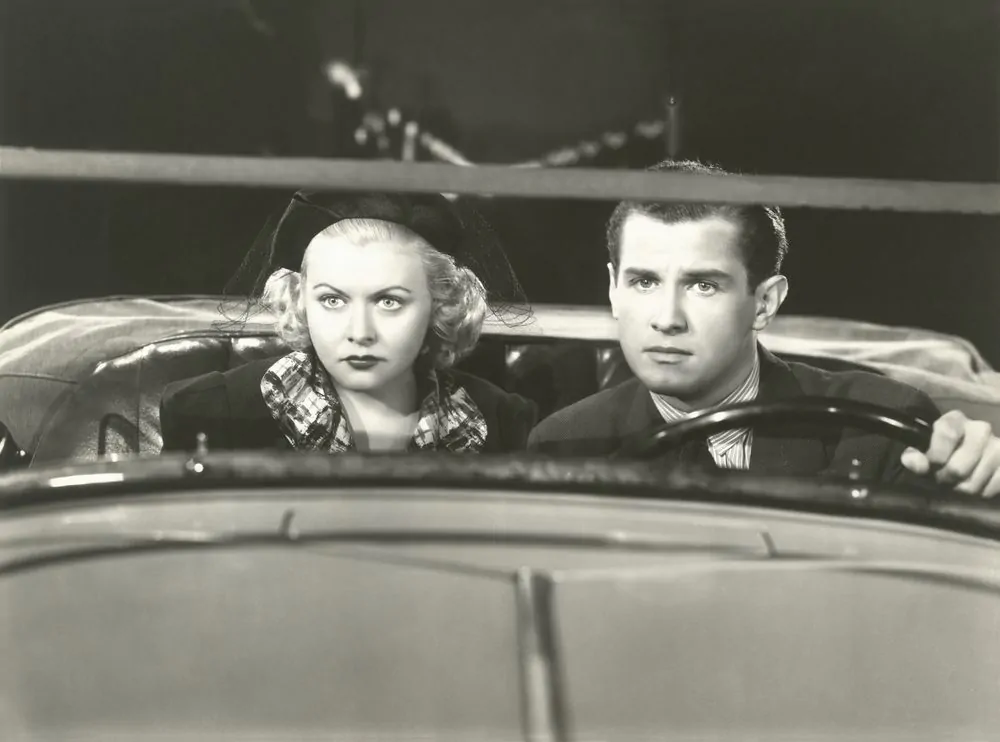
From the silent black-and-white movies of the early 1900s to the vivid, high-definition movies of today, times have changed concerning movies. Write about how the film industry has improved over time. If this topic seems too broad, feel free to focus on one aspect, such as cinematography, themes, or acting.
For help with your essays, check out our round-up of the best essay checkers .
If you’re looking for more ideas, check out our essays about music topic guide !

Meet Rachael, the editor at Become a Writer Today. With years of experience in the field, she is passionate about language and dedicated to producing high-quality content that engages and informs readers. When she's not editing or writing, you can find her exploring the great outdoors, finding inspiration for her next project.
View all posts
Purdue Online Writing Lab Purdue OWL® College of Liberal Arts
Film Writing: Sample Analysis

Welcome to the Purdue OWL
This page is brought to you by the OWL at Purdue University. When printing this page, you must include the entire legal notice.
Copyright ©1995-2018 by The Writing Lab & The OWL at Purdue and Purdue University. All rights reserved. This material may not be published, reproduced, broadcast, rewritten, or redistributed without permission. Use of this site constitutes acceptance of our terms and conditions of fair use.
Introductory Note
The analysis below discusses the opening moments of the science fiction movie Ex Machina in order to make an argument about the film's underlying purpose. The text of the analysis is formatted normally. Editor's commentary, which will occasionally interrupt the piece to discuss the author's rhetorical strategies, is written in brackets in an italic font with a bold "Ed.:" identifier. See the examples below:
The text of the analysis looks like this.
[ Ed.: The editor's commentary looks like this. ]
Frustrated Communication in Ex Machina ’s Opening Sequence
Alex Garland’s 2015 science fiction film Ex Machina follows a young programmer’s attempts to determine whether or not an android possesses a consciousness complicated enough to pass as human. The film is celebrated for its thought-provoking depiction of the anxiety over whether a nonhuman entity could mimic or exceed human abilities, but analyzing the early sections of the film, before artificial intelligence is even introduced, reveals a compelling examination of humans’ inability to articulate their thoughts and feelings. In its opening sequence, Ex Machina establishes that it’s not only about the difficulty of creating a machine that can effectively talk to humans, but about human beings who struggle to find ways to communicate with each other in an increasingly digital world.
[ Ed.: The piece's opening introduces the film with a plot summary that doesn't give away too much and a brief summary of the critical conversation that has centered around the film. Then, however, it deviates from this conversation by suggesting that Ex Machina has things to say about humanity before non-human characters even appear. Off to a great start. ]
The film’s first establishing shots set the action in a busy modern office. A woman sits at a computer, absorbed in her screen. The camera looks at her through a glass wall, one of many in the shot. The reflections of passersby reflected in the glass and the workspace’s dim blue light make it difficult to determine how many rooms are depicted. The camera cuts to a few different young men typing on their phones, their bodies partially concealed both by people walking between them and the camera and by the stylized modern furniture that surrounds them. The fourth shot peeks over a computer monitor at a blonde man working with headphones in. A slight zoom toward his face suggests that this is an important character, and the cut to a point-of-view shot looking at his computer screen confirms this. We later learn that this is Caleb Smith (Domhnall Gleeson), a young programmer whose perspective the film follows.
The rest of the sequence cuts between shots from Caleb’s P.O.V. and reaction shots of his face, as he receives and processes the news that he has won first prize in a staff competition. Shocked, Caleb dives for his cellphone and texts several people the news. Several people immediately respond with congratulatory messages, and after a moment the woman from the opening shot runs in to give him a hug. At this point, the other people in the room look up, smile, and start clapping, while Caleb smiles disbelievingly—perhaps even anxiously—and the camera subtly zooms in a bit closer. Throughout the entire sequence, there is no sound other than ambient electronic music that gets slightly louder and more textured as the sequence progresses. A jump cut to an aerial view of a glacial landscape ends the sequence and indicates that Caleb is very quickly transported into a very unfamiliar setting, implying that he will have difficulty adjusting to this sudden change in circumstances.
[ Ed.: These paragraphs are mostly descriptive. They give readers the information they will need to understand the argument the piece is about to offer. While passages like this can risk becoming boring if they dwell on unimportant details, the author wisely limits herself to two paragraphs and maintains a driving pace through her prose style choices (like an almost exclusive reliance on active verbs). ]
Without any audible dialogue or traditional expository setup of the main characters, this opening sequence sets viewers up to make sense of Ex Machina ’s visual style and its exploration of the ways that technology can both enhance and limit human communication. The choice to make the dialogue inaudible suggests that in-person conversations have no significance. Human-to-human conversations are most productive in this sequence when they are mediated by technology. Caleb’s first response when he hears his good news is to text his friends rather than tell the people sitting around him, and he makes no move to take his headphones out when the in-person celebration finally breaks out. Everyone in the building is on their phones, looking at screens, or has headphones in, and the camera is looking at screens through Caleb’s viewpoint for at least half of the sequence.
Rather than simply muting the specific conversations that Caleb has with his coworkers, the ambient soundtrack replaces all the noise that a crowded building in the middle of a workday would ordinarily have. This silence sets the uneasy tone that characterizes the rest of the film, which is as much a horror-thriller as a piece of science fiction. Viewers get the sense that all the sounds that humans make as they walk around and talk to each other are being intentionally filtered out by some presence, replaced with a quiet electronic beat that marks the pacing of the sequence, slowly building to a faster tempo. Perhaps the sound of people is irrelevant: only the visual data matters here. Silence is frequently used in the rest of the film as a source of tension, with viewers acutely aware that it could be broken at any moment. Part of the horror of the research bunker, which will soon become the film’s primary setting, is its silence, particularly during sequences of Caleb sneaking into restricted areas and being startled by a sudden noise.
The visual style of this opening sequence reinforces the eeriness of the muted humans and electronic soundtrack. Prominent use of shallow focus to depict a workspace that is constructed out of glass doors and walls makes it difficult to discern how large the space really is. The viewer is thus spatially disoriented in each new setting. This layering of glass and mirrors, doubling some images and obscuring others, is used later in the film when Caleb meets the artificial being Ava (Alicia Vikander), who is not allowed to leave her glass-walled living quarters in the research bunker. The similarity of these spaces visually reinforces the film’s late revelation that Caleb has been manipulated by Nathan Bates (Oscar Isaac), the troubled genius who creates Ava.
[ Ed.: In these paragraphs, the author cites the information about the scene she's provided to make her argument. Because she's already teased the argument in the introduction and provided an account of her evidence, it doesn't strike us as unreasonable or far-fetched here. Instead, it appears that we've naturally arrived at the same incisive, fascinating points that she has. ]
A few other shots in the opening sequence more explicitly hint that Caleb is already under Nathan’s control before he ever arrives at the bunker. Shortly after the P.O.V shot of Caleb reading the email notification that he won the prize, we cut to a few other P.O.V. shots, this time from the perspective of cameras in Caleb’s phone and desktop computer. These cameras are not just looking at Caleb, but appear to be scanning him, as the screen flashes in different color lenses and small points appear around Caleb’s mouth, eyes, and nostrils, tracking the smallest expressions that cross his face. These small details indicate that Caleb is more a part of this digital space than he realizes, and also foreshadow the later revelation that Nathan is actively using data collected by computers and webcams to manipulate Caleb and others. The shots from the cameras’ perspectives also make use of a subtle fisheye lens, suggesting both the wide scope of Nathan’s surveillance capacities and the slightly distorted worldview that motivates this unethical activity.
[ Ed.: This paragraph uses additional details to reinforce the piece's main argument. While this move may not be as essential as the one in the preceding paragraphs, it does help create the impression that the author is noticing deliberate patterns in the film's cinematography, rather than picking out isolated coincidences to make her points. ]
Taken together, the details of Ex Machina ’s stylized opening sequence lay the groundwork for the film’s long exploration of the relationship between human communication and technology. The sequence, and the film, ultimately suggests that we need to develop and use new technologies thoughtfully, or else the thing that makes us most human—our ability to connect through language—might be destroyed by our innovations. All of the aural and visual cues in the opening sequence establish a world in which humans are utterly reliant on technology and yet totally unaware of the nefarious uses to which a brilliant but unethical person could put it.
Author's Note: Thanks to my literature students whose in-class contributions sharpened my thinking on this scene .
[ Ed.: The piece concludes by tying the main themes of the opening sequence to those of the entire film. In doing this, the conclusion makes an argument for the essay's own relevance: we need to pay attention to the essay's points so that we can achieve a rich understanding of the movie. The piece's final sentence makes a chilling final impression by alluding to the danger that might loom if we do not understand the movie. This is the only the place in the piece where the author explicitly references how badly we might be hurt by ignorance, and it's all the more powerful for this solitary quality. A pithy, charming note follows, acknowledging that the author's work was informed by others' input (as most good writing is). Beautifully done. ]
Film Analysis: Example, Format, and Outline + Topics & Prompts
Films are never just films. Instead, they are influential works of art that can evoke a wide range of emotions, spark meaningful conversations, and provide insightful commentary on society and culture. As a student, you may be tasked with writing a film analysis essay, which requires you to delve deeper into the characters and themes. But where do you start?
In this article, our expert team has explored strategies for writing a successful film analysis essay. From prompts for this assignment to an excellent movie analysis example, we’ll provide you with everything you need to craft an insightful film analysis paper.
- 📽️ Film Analysis Definition
📚 Types of Film Analysis
- ✍️ How to Write Film Analysis
- 🎞️ Movie Analysis Prompts
- 🎬 Top 15 Topics
📝 Film Analysis Example
- 🍿 More Examples
🔗 References
📽️ what is a film analysis essay.
A film analysis essay is a type of academic writing that critically examines a film, its themes, characters, and techniques used by the filmmaker. This essay aims to analyze the film’s meaning, message, and artistic elements and explain its cultural, social, and historical significance. It typically requires a writer to pay closer attention to aspects such as cinematography, editing, sound, and narrative structure.
Film Analysis vs Film Review
It’s common to confuse a film analysis with a film review, though these are two different types of writing. A film analysis paper focuses on the film’s narrative, sound, editing, and other elements. This essay aims to explore the film’s themes, symbolism , and underlying messages and to provide an in-depth interpretation of the film.
On the other hand, a film review is a brief evaluation of a film that provides the writer’s overall opinion of the movie. It includes the story’s short summary, a description of the acting, direction, and technical aspects, and a recommendation on whether or not the movie is worth watching.

Wondering what you should focus on when writing a movie analysis essay? Here are four main types of film analysis. Check them out!
| Focuses on the story and how it is presented in the film, including the plot, characters, and themes. This type of analysis looks at how the story is constructed and how it is conveyed to the audience. | |
| Examines the symbols, signs, and meanings created through the film’s visuals, such as color, lighting, and . It analyzes how the film’s visual elements interact to create a cohesive message. | |
| Looks at the cultural, historical, and social context in which the film was made. This type of analysis considers how the film reflects the values, beliefs, and attitudes of its time and place and responds to broader cultural and social trends. | |
| Studies the visual elements of a film, including the setting, costumes, and actors’ performances, to understand how they contribute to the film’s overall meaning. These are analyzed within a scene or even a single shot. |
📋 Film Analysis Format
The movie analysis format follows a typical essay structure, including a title, introduction, thesis statement, body, conclusion, and references.
The most common citation styles used for a film analysis are MLA and Chicago . However, we recommend you consult with your professor for specific guidelines. Remember to cite all dialogue and scene descriptions from the movie to support the analysis. The reference list should include the analyzed film and any external sources mentioned in the essay.
When referring to a specific movie in your paper, you should italicize the film’s name and use the title case. Don’t enclose the title of the movie in quotation marks.
📑 Film Analysis Essay Outline
A compelling film analysis outline is crucial as it helps make the writing process more focused and the content more insightful for the readers. Below, you’ll find the description of the main parts of the movie analysis essay.

Film Analysis Introduction
Many students experience writer’s block because they don’t know how to write an introduction for a film analysis. The truth is that the opening paragraph for a film analysis paper is similar to any other academic essay:
- Start with a hook to grab the reader’s attention . For example, it can be a fascinating fact or a thought-provoking question related to the film.
- Provide background information about the movie . Introduce the film, including its title, director, and release date. Follow this with a brief summary of the film’s plot and main themes.
- End the introduction with an analytical thesis statement . Present the central argument or interpretation that will be explored in the analysis.
Film Analysis Thesis
If you wonder how to write a thesis for a film analysis, we’ve got you! A thesis statement should clearly present your main idea related to the film and provide a roadmap for the rest of the essay. Your thesis should be specific, concise, and focused. In addition, it should be debatable so that others can present a contrasting point of view. Also, make sure it is supported with evidence from the film.
Let’s come up with a film analysis thesis example:
Through a feminist lens, Titanic is a story about Rose’s rebellion against traditional gender roles, showcasing her attempts to assert her autonomy and refusal to conform to societal expectations prevalent in the early 20th century.
Movie Analysis Main Body
Each body paragraph should focus on a specific aspect of the film that supports your main idea. These aspects include themes, characters, narrative devices , or cinematic techniques. You should also provide evidence from the film to support your analysis, such as quotes, scene descriptions, or specific visual or auditory elements.
Here are two things to avoid in body paragraphs:
- Film review . Your analysis should focus on specific movie aspects rather than your opinion of the film.
- Excessive plot summary . While it’s important to provide some context for the analysis, a lengthy plot summary can detract you from your main argument and analysis of the film.
Film Analysis Conclusion
In the conclusion of a movie analysis, restate the thesis statement to remind the reader of the main argument. Additionally, summarize the main points from the body to reinforce the key aspects of the film that were discussed. The conclusion should also provide a final thought or reflection on the film, tying together the analysis and presenting your perspective on its overall meaning.
✍️ How to Write a Film Analysis Essay
Writing a film analysis essay can be challenging since it requires a deep understanding of the film, its themes, and its characters. However, with the right approach, you can create a compelling analysis that offers insight into the film’s meaning and impact. To help you, we’ve prepared a small guide.

1. Understand the Prompt
When approaching a film analysis essay, it is crucial to understand the prompt provided by your professor. For example, suppose your professor asks you to analyze the film from the perspective of Marxist criticism or psychoanalytic film theory . In that case, it is essential to familiarize yourself with these approaches. This may involve studying these theories and identifying how they can be applied to the film.
If your professor did not provide specific guidelines, you will need to choose a film yourself and decide on the aspect you will explore. Whether it is the film’s themes, characters, cinematography, or social context, having a clear focus will help guide your analysis.
2. Watch the Film & Take Notes
Keep your assignment prompt in mind when watching the film for your analysis. For example, if you are analyzing the film from a feminist perspective, you should pay attention to the portrayal of female characters, power dynamics , and gender roles within the film.
As you watch the movie, take notes on key moments, dialogues, and scenes relevant to your analysis. Additionally, keeping track of the timecodes of important scenes can be beneficial, as it allows you to quickly revisit specific moments in the film for further analysis.
3. Develop a Thesis and an Outline
Next, develop a thesis statement for your movie analysis. Identify the central argument or perspective you want to convey about the film. For example, you can focus on the film’s themes, characters, plot, cinematography, or other outstanding aspects. Your thesis statement should clearly present your stance and provide a preview of the points you will discuss in your analysis.
Having created a thesis, you can move on to the outline for an analysis. Write down all the arguments that can support your thesis, logically organize them, and then look for the supporting evidence in the movie.
4. Write Your Movie Analysis
When writing a film analysis paper, try to offer fresh and original ideas on the film that go beyond surface-level observations. If you need some inspiration, have a look at these thought-provoking questions:
- How does the movie evoke emotional responses from the audience through sound, editing, character development , and camera work?
- Is the movie’s setting portrayed in a realistic or stylized manner? What atmosphere or mood does the setting convey to the audience?
- How does the lighting in the movie highlight certain aspects? How does the lighting impact the audience’s perception of the movie’s characters, spaces, or overall mood?
- What role does the music play in the movie? How does it create specific emotional effects for the audience?
- What underlying values or messages does the movie convey? How are these values communicated to the audience?
5. Revise and Proofread
To revise and proofread a film analysis essay, review the content for grammatical, spelling, and punctuation errors. Ensure the paper flows logically and each paragraph contributes to the overall analysis. Remember to double-check that you haven’t missed any in-text citations and have enough evidence and examples from the movie to support your arguments.
Consider seeking feedback from a peer or instructor to get an outside perspective on the essay. Another reader can provide valuable insights and suggestions for improvement.
🎞️ Movie Analysis: Sample Prompts
Now that we’ve covered the essential aspects of a film analysis template, it’s time to choose a topic. Here are some prompts to help you select a film for your analysis.
- Metropolis film analysis essay . When analyzing this movie, you can explore the themes of technology and society or the portrayal of class struggle. You can also focus on symbolism, visual effects, and the influence of German expressionism on the film’s aesthetic.
- The Godfather film analysis essay . An epic crime film, The Godfather , allows you to analyze the themes of power and corruption, the portrayal of family dynamics, and the influence of Italian neorealism on the film’s aesthetic. You can also examine the movie’s historical context and impact on future crime dramas.
- Psycho film analysis essay . Consider exploring the themes of identity and duality, the use of suspense and tension in storytelling, or the portrayal of mental illness. You can also explore the impact of this movie on the horror genre.
- Forrest Gump film analysis essay . If you decide to analyze the Forrest Gump movie, you can focus on the portrayal of historical events. You might also examine the use of nostalgia in storytelling, the character development of the protagonist, and the film’s impact on popular culture and American identity.
- The Great Gatsby film analysis essay . The Great Gatsby is a historical drama film that allows you to analyze the themes of the American Dream, wealth, and class. You can also explore the portrayal of the 1920s Jazz Age and the symbolism of the green light.
- Persepolis film analysis essay . In a Persepolis film analysis essay, you can uncover the themes of identity and self-discovery. You might also consider analyzing the portrayal of the Iranian Revolution and its aftermath, the use of animation as a storytelling device, and the film’s influence on the graphic novel genre.
🎬 Top 15 Film Analysis Essay Topics
- The use of color symbolism in Vertigo and its impact on the narrative.
- The moral ambiguity and human nature in No Country for Old Men .
- The portrayal of ethnicity in Gran Torino and its commentary on cultural stereotypes.
- The cinematography and visual effects in The Hunger Games and their contribution to the dystopian atmosphere.
- The use of silence and sound design in A Quiet Place to immerse the audience.
- The disillusionment and existential crisis in The Graduate and its reflection of the societal norms of the 1960s.
- The themes of sacrifice and patriotism in Casablanca and their relevance to the historical context of World War II.
- The psychological horror in The Shining and its impact on the audience’s experience of fear and tension.
- The exploration of existentialism in Eternal Sunshine of the Spotless Mind .
- Multiple perspectives and unreliable narrators in Rashomon .
- The music and soundtrack in Titanic and its contribution to the film’s emotional resonance.
- The portrayal of good versus evil in the Harry Potter film series and its impact on understanding morality.
- The incorporation of vibrant colors in The Grand Budapest Hotel as a visual motif.
- The use of editing techniques to tell a nonlinear narrative in Pulp Fiction .
- The function of music and score in enhancing the emotional impact in Schindler’s List .
Check out the Get Out film analysis essay we’ve prepared for college and high school students. We hope this movie analysis essay example will inspire you and help you understand the structure of this assignment better.
Film Analysis Essay Introduction Example
Get Out, released in 2017 and directed by Jordan Peele, is a culturally significant horror film that explores themes of racism, identity, and social commentary. The film follows Chris, a young African-American man, visiting his white girlfriend’s family for the weekend. This essay will analyze how, through its masterful storytelling, clever use of symbolism, and thought-provoking narrative, Get Out reveals the insidious nature of racism in modern America.
Film Analysis Body Paragraphs Example
Throughout the movie, Chris’s character is subject to various types of microaggression and subtle forms of discrimination. These instances highlight the insidious nature of racism, showing how it can exist even in seemingly progressive environments. For example, during Chris’s visit to his white girlfriend’s family, the parents continuously make racially insensitive comments, expressing their admiration for black physical attributes and suggesting a fascination bordering on fetishization. This sheds light on some individuals’ objectification and exotification of black bodies.
Get Out also critiques the performative allyship of white liberals who claim to be accepting and supportive of the black community. It is evident in the character of Rose’s father, who proclaims: “I would have voted for Obama for a third term if I could” (Peele, 2017). However, the film exposes how this apparent acceptance can mask hidden prejudices and manipulation.
Film Analysis Conclusion Example
In conclusion, the film Get Out provides a searing critique of racial discrimination and white supremacy through its compelling narrative, brilliant performances, and skillful direction. By exploring the themes of the insidious nature of racism, fetishization, and performative allyship, Get Out not only entertains but also challenges viewers to reflect on their own biases.
🍿 More Film Analysis Examples
- Social Psychology Theories in The Experiment
- Anakin Skywalker/Darth Vader: George Lukas’s Star Wars Review
- Girl, Interrupted : Mental Illness Analysis
- Mental Disorders in the Finding Nemo Film
- One Flew Over the Cuckoo’s Nest Film: Interpretive Psychological Analysis
- Analysis of Spielberg’s Film Lincoln
- Glory – The Drama Movie by Edward Zwick
- Inventors in The Men Who Built America Series
- Crash Movie: Racism as a Theme
- Dances with Wolves Essay – Movie Analysis
- Superbad by G. Mottola
- Ordinary People Analysis and Maslow Hierarchy of Needs
- A Review of the Movie An Inconvenient Truth by Guggenheim
- Chaplin’s Modern Times and H.G. Wells’s The Island of Dr. Moreau
- Misé-En-Scene and Camera Shots in The King’s Speech
- Children’s Sexuality in the Out in the Dark Film
- Chinese and American Women in Joy Luck Club Novel and Film
- The Film Silver Linings Playbook by Russell
- The Role of Music in the Films The Hours and The Third Man
- The Social Network : Film Analysis
- My Neighbor Totoro : Film by Hayao Miyazaki
- Marriage Story Film Directed by Noah Baumbach
❓ Film Analysis Essay: FAQ
Why is film analysis important.
Film analysis allows viewers to go beyond the surface level and delve into the deeper layers of a film’s narrative, themes, and technical aspects. It enables a critical examination that enhances appreciation and understanding of the film’s message, cultural significance, and artistic value. At the same time, writing a movie analysis essay can boost your critical thinking and ability to spot little details.
How to write a movie analysis?
- Watch the film multiple times to grasp its key elements.
- Take notes on the story, characters, and themes.
- Pay attention to the film’s cinematography, editing, sound, message, symbolism, and social context.
- Formulate a strong thesis statement that presents your main argument.
- Support your claims with evidence from the film.
How to write a critical analysis of a movie?
A critical analysis of a movie involves evaluating its elements, such as plot, themes, characters, and cinematography, and providing an informed opinion on its strengths and weaknesses. To write it, watch the movie attentively, take notes, develop a clear thesis statement, support arguments with evidence, and balance the positive and negative.
How to write a psychological analysis of a movie?
A psychological analysis of a movie examines characters’ motivations, behaviors, and emotional experiences. To write it, analyze the characters’ psychological development, their relationships, and the impact of psychological themes conveyed in the film. Support your analysis with psychological theories and evidence from the movie.
- Film Analysis | UNC Writing Center
- Psychological Analysis of Films | Steemit
- Critical Film Analysis | University of Hawaii
- Questions to Ask of Any Film | All American High School Film Festival
- Resources – How to Write a Film Analysis | Northwestern
- Film Analysis | University of Toronto
- Film Writing: Sample Analysis | Purdue Online Writing Lab
- Film Analysis Web Site 2.0 | Yale University
- Questions for Film Analysis | University of Washington
- Film & Media Studies Resources: Types of Film Analysis | Bowling Green State University
- Film & Media Studies Resources: Researching a Film | Bowling Green State University
- Motion Picture Analysis Worksheet | University of Houston
- Reviews vs Film Criticism | The University of Vermont Libraries
- Television and Film Analysis Questions | University of Michigan
- How to Write About Film: The Movie Review, the Theoretical Essay, and the Critical Essay | University of Colorado
Descriptive Essay Topics: Examples, Outline, & More
371 fun argumentative essay topics for 2024.

Quick Guide on How to Write a Movie Review Essay

What Is a Movie Review
The internet has revolutionized the realm of film criticism. No matter a movie's level of quality, it is always worth analyzing. Despite the growing number of individuals attempting to write about movies, few are successful. Most people do not provide insightful analysis, instead simply state how much they liked or disliked the film.
A movie criticism, usually composed by a professional in film studies, takes a comprehensive look at the film from a historical, social, political, or theoretical standpoint. This is unlike the opinion or suggestion given in a movie review, which is shorter and more concise.
A remarkable aspect of a good film review is that it doesn't just rate the movie but provides explicit views that form the critique's basis. This form of writing, like crafting essays, research papers, and term papers, should be insightful and draw the reader in quickly. It's important to discuss the reputation of the lead actors and directors and to write about what you expected and if they were met. The reviewer must explain a story's development without recalling major plot points and endings. The review must be concise, engaging, and should involve metaphors, specific words, analogies, etc.
Movie Review Purpose
Most film reviews are intended to guide readers in deciding whether to view, rent, or purchase the film. They should provide the necessary information to aid readers in deciding without divulging any fundamental details, such as the storyline or any surprises. This paper is common in schools because the lecturer wants to evaluate the student's ability to think critically and report the event easily for others to understand.
Movie reviews typically present a brief summary of the film's storyline. They provide readers with an overview of the characters, relationships, and scenarios but do not convey the complete narrative. Perusing the review should be different from seeing the movie. Nonetheless, feel free to highlight the essential moments or pivotal points that make the film worthwhile viewing.
Our college essay writing service has put together some advice on composing a movie review essay like a real critic, so let's explore the article further!
How to Write a Movie Review: Movie Review Outline
The structure is key when it comes to the quality of your paper. Don't neglect the power of a good outline, no matter what paper you're writing. Outlines help you stay on track and make sure your paper flows well.
Taking the time to arrange your ideas before starting to write is an effective way to save time further down the line. With a well-structured plan already in place, you won't have to worry about other elements. This will also make the writing process less stressful. Here is a guide on how to organize your movie review outline:

How Do You Start a Movie Review Essay: Introduction
The introductory paragraph is the first obvious step in crafting a movie review essay outline. Here, you want to quickly captivate the reader. Deliver your viewpoint instantly and make it unambiguous. Don't leave the audience wondering whether you enjoyed the film. Tell them right off the bat so you have time to justify your assessment throughout the remainder of the process.
In the introduction movie review should also describe your thesis. Develop the main concept for your essay that you can support using your perceptions of the movie's various aspects. The reader should be able to tell from this statement if you thought the film was fantastic, awful, or simply alright. By including a thesis statement, you may move your analysis beyond the plot synopsis phase into the movie critique category, which is considered a separate creative process.
Crafting Your Essay Movie Review Analysis
According to our research paper service , film analysis is similar to building a case. You're attempting to influence the reader to follow your recommendation to watch or disregard the film. So, you must ensure your essay movie review will be convincing. Giving instances that demonstrate the validity of your personal opinion is the only method to do this. If you find any dialogue in the movie that you think best exemplifies whether the work is strong or not, utilize quotes. This also applies to all of the movie's artistic decisions. But, just because a movie's narrative isn't strong or engaging doesn't indicate the rest of the film is worthless. Carefully highlight how some factors might undermine the movie in your explanation.
The movie's plot is only one component and shouldn't dominate the overall piece. The following are the important aspects to include in your movie review structure:
Cinematography - Cinematography covers much more than simply camera angles. It includes how the picture is lit, how it moves, appears, and what lenses are used. Here you can try the following analysis: 'Warm, gentle colors are used throughout the film, combined with soothing whites and grays, to simultaneously create and gradually tear away the characters' romantic sentiments for one another. There is a painting-like quality to each image.'
Editing - The editing is arguably the absolute star of what creates a good movie review example. It affects both the duration and the flow of a movie. Without effective editing, there would be uncomfortable gaps between pictures and many errors.
Costuming - The clothing the characters wear is called a costume, but there are a number of things to consider while evaluating movie costumes. You should be able to decide if the outfits suit the characters and the movie's atmosphere.
Casting and Acting - Finding the ideal performers to bring characters to life is the goal of casting. This sometimes entails seeing performers portray both familiar personas and figures who are entirely at odds with who they are. Casting, therefore, involves more than just finding talented performers. You can assess the acting in the following way: 'Even though he excels while on the go, his stoic behaviorism causes him to fall short of his co-star during calm scenes where he keeps a blank look on his face.'
Once you have finished analyzing the acting, directing, cinematography, setting, etc., wrap up with concise, stimulating wording to sustain readers' attention. Don't forget to provide a few examples to support your statements about the film.
Concluding Your Essay Movie Review
Finalize your review by coming full circle. Close the review by returning to your introductory fact or thesis. Give your readers a refresher on the movie's most intriguing aspects. It's important to remember that before choosing a movie, viewers check reviews. Finish with a statement indicating whether it is worthwhile for them to view. Be specific about who this movie will be more fascinating to and why in your suggestions. Remember that your ending is your last shot at influencing your audience, so use it wisely.
No matter the kind of movie review you have to complete, our professional specialists are willing to help you. Directly forward your needs to our research paper service and get it done quickly.
Need Help With MOVIE REVIEW WRITING?
No matter what type of movie review you want, our qualified specialists are ready to assist you.
Short Movie Review Form
If you are currently working on a new or old movie review, reading our suggestions should be sufficient to help you earn an A. So what if you'll be writing many reviews in the future? In this situation, we advise you to develop a uniform movie review template, which will enable you to save time and complete your upcoming projects successfully.
So, how to write a movie review template, you may ask? Well, our essay helper prepared a simple yet great movie review template you may use as a foundation for your own writing if you need some help getting started:

Example Papers
Once you know how to review a movie and learn the most valuable tips to handle this assignment, it is time to look at some movie review examples to get you on the right track.
Check out the following pieces to see which of these movie review essay examples you might want to keep at hand when working on your own assignment:
Helpful Tips on Writing Movie Reviews
Here are some extra helpful tips to keep in mind when unsure how to write a movie review essay:

- Add Your Own Personal Feel to Your Movie Critique - You might not have much spare time for your pastime of reviewing. You won't be able to write a movie review, though, if you just wing it without reading what others have said. Make a note of the things that intrigued you, alarmed you, made you uncomfortable, or caused you to pause and consider something, and then use that list as the basis for your research.
- Develop a Distinctive Writing Style - Have an idol—it's good for you. You must be careful not to just paraphrase and duplicate what they say without adding your own original viewpoint. Instead, in order to stand out from the throng, you must discover your own voice. When writing movie reviews, you should also have a distinct writing style.
- Include Extensive Information -Mention the film's photographer, special effects designer, and director. Your review might be significantly impacted by this. Then you may list all the memorable movie moments that also stuck with you.
- Voice Your Views and Back Up Your Criticism - Give your own assessment of the film. Make sure you have evidence to support your criticisms. Use the movie's details that most shocked or humiliated you. Review genuine information rather than merely expressing your opinions without supporting details.
Final Thoughts
Composing a good movie review essay sample is easy if you follow this article's main steps and techniques. Furthermore, we strongly believe that this guide will assist you in achieving remarkable outcomes and ease your writing process. The staff at EssayPro is always available to provide a helping hand if you need a little additional push with movie review examples or even if it's simply coming up with a catchy essay title .
Order an essay and await excellent results! Contact our expert writers and ask them to ' write my essay for me ' – and they will ensure your academic success!
Do You Require a Skilled Professional Writer?
Our writers take extra measures to make sure that your essay is created precisely in accordance with your specifications.
FAQs on Writing an Essay Movie Review
Here are the most frequently asked questions on how to write a movie review. We provided extra details on movie analysis to simplify writing film reviews.
What are the 6 Important Things to Include in a Film Review?
How long should a movie review be, what are the 5 c's in film.

is an expert in nursing and healthcare, with a strong background in history, law, and literature. Holding advanced degrees in nursing and public health, his analytical approach and comprehensive knowledge help students navigate complex topics. On EssayPro blog, Adam provides insightful articles on everything from historical analysis to the intricacies of healthcare policies. In his downtime, he enjoys historical documentaries and volunteering at local clinics.

Related Articles
.webp)

Study Guide - Edward Scissorhands: How to write a Film Analysis Essay & Cinematic Techniques
- Characters, Plot, Synopsis &Themes
- Quotations & Bibilography
- Film Reviews
- How to write a Film Analysis Essay & Cinematic Techniques
- Film Genres & Film Lighting Terminology, Film QUIZ
How to write a film analysis essay
How to Write a Film Analysis Essay
By Timothy Sexton

Writing a film analysis essay is an assignment that is less likely to terrorize those who fear the idea of writing an essay, because it allows them to write about something most people enjoy. Film analysis is not the same thing as writing a movie review, which involves passively watching a movie. An analysis means you must engage on a level beyond that of storytelling.
Watch the movie. Then watch it again. Take notes during the first viewing and, if you are analyzing a movie that is available on DVD, be ready with your remote control to pause and rewind.
Critically engage the movie so that you can effectively produce a strong essay. Focus on a single thematic concept related to the film. Ideas for essays taking this route could include an analysis of how the film is photographed, how the movie relates a historical event in a dramatic way without compromising the facts or how a single sequence within the film relates to larger cinematic concepts, like overlapping dialogue or the utilization of dramatic irony.
Introduce the film and its major participants, such as the actors and director. Include the name of another technician on the film if your analysis will be focusing on that aspect. For instance, cite the name of the cinematographer if you are going to be writing about the importance of shadows to film noir, or include the name of the composer of the movie’s score if you are writing about the importance of background music to the emotional tone of the film.
Provide a brief overview of the story, but avoid the temptation to pad your word count by writing what amounts to a synopsis of the story rather than analysis. Reveal plots twists or the ending of the film only if they relate directly to your analysis.
Write your film analysis with the movie at hand if this is possible. Write next to a television and DVD player if applicable. Stay inside the theatre for the second or third showing with your notepad ready if this is possible. Writing an effective film analysis is best accomplished if you don’t have to rely on your memory of events, dialogue or cinematic techniques.
Familiarize yourself with technical jargon related to the art of filmmaking. Learn the difference between a cut and a dissolve. Write about subjective camera work if the analysis is dealing with a part of the movie shot from the point of view of one of the characters. Properly utilizing filmmaking terms will strengthen the authority of your essay.
Source: http://classroom.synonym.com/write-film-analysis-essay-4125.html
Cinematic Techniques
Tim Burton's Edward Scissorhands Film Analysis
Help with writing a film essay - Linda Rubens
Film Techniques
Film techniques is the term used to describe the ways that meaning is created in film.
Camera Shots
A camera shot is the amount of space that is seen in one shot or frame. Camera shots are used to demonstrate different aspects of a film's setting, characters and themes. As a result, camera shots are very important in shaping meaning in a film. Reviewing the examples on the right hand side of this page should make the different camera shots clearer.
An extreme long shot ( animation on right ) contains a large amount of landscape. It is often used at the beginning of a scene or a film to establish general location (setting). This is also known as an establishing shot.
A long shot ( animation on right ) contains landscape but gives the viewer a more specific idea of setting. A long shot may show the viewers the building where the action will take place.
A full shot ( animation on right ) contains a complete view of the characters . From this shot, viewers can take in the costumes of characters and may also help to demonstrate the relationships between characters. For more information on costumes and acting refer to Chapter 4.
A mid shot ( animation on right ) contains the characters or a character from the waist up . From this shot, viewers can see the characters' faces more clearly as well as their interaction with other characters. This is also known as a social shot
A close-up ( animation on right ) contains just one character's face . This enables viewers to understand the actor's emotions and also allows them to feel empathy for the character. This is also known as a personal shot.
An extreme close-up ( animation on right ) contains one part of a character's face or other object. This technique is quite common in horror films, particularly the example above. This type of shot creates an intense mood and provides interaction between the audience and the viewer.
When analysing a film you should always think about the different camera shots and why they are being used. The next time that you are at the cinema or watching television see what camera shots are being used.
Important: These camera shots are used in all forms of visual texts including postcards, posters and print advertisements.
Camera angles
It is important that you do not confuse camera angles and camera shots. Camera shots are used to demonstrate different aspects of setting, themes and characters. Camera angles are used to position the viewer so that they can understand the relationships between the characters. These are very important for shaping meaning in film as well as in other visual texts.
The following examples will help you to understand the differences between the different camera angles
A bird's eye angle ( animation on right ) is an angle that looks directly down upon a scene . This angle is often used as an establishing angle, along with an extreme long shot, to establish setting.
A high angle ( animation on right ) is a camera angle that looks down upon a subject . A character shot with a high angle will look vulnerable or small. These angles are often used to demonstrate to the audience a perspective of a particular character. The example above demonstrates to us the perspective or point of view of a vampire. As a viewer we can understand that the vampire feels powerful.
An eye-level angle ( animation on right ) puts the audience on an equal footing with the character/s . This is the most commonly used angle in most films as it allows the viewers to feel comfortable with the characters.
A low angle ( animation on right ) is a camera angle that looks up at a character . This is the opposite of a high angle and makes a character look more powerful. This can make the audience feel vulnerable and small by looking up at the character. This can help the responder feel empathy if they are viewing the frame from another character's point of view.
As with camera shots, you will be able to see many examples of camera angles in any film or visual text that you view. The next time that you watch television or see a film, take note of the camera angles and think of how they affect your perception (idea) of different characters.
Another camera angle that you might come across is a Dutch angle.
A Dutch angle ( animation on right ) is used to demonstrate the confusion of a character. The example above should disorientate you.
Camera movement
Composers of films also use camera movement to shape meaning. The following are some examples of common camera movements and how they can be used to shape meaning in films.
A crane shot ( animation on right ) is often used by composers of films to signify the end of a film or scene. The effect is achieved by the camera being put on a crane that can move upwards
A tracking shot and a dolly shot ( animation on right ) have the same effect. A tracking shot moves on tracks and a dolly shot is mounted on a trolley to achieve the effect in the example above. This camera movement is used in a number of ways but is most commonly used to explore a room such as a restaurant. By using a tracking shot or a dolly shot the composer of a film gives the viewer a detailed tour of a situation. It can also be used to follow a character.
Panning ( animation on right ) is used to give the viewer a panoramic view of a set or setting. This can be used to establish a scene
An Evangelion shot ( animation on right ) is derived from the popular anime series 'Neon Genesis Evangelion'. This camera movement begins as an extreme close-up and zooms out abruptly, creating a blurring effect to emphasise the speed and size of the object
Lighting is a very important aspect for shaping meaning in films. What kind of atmosphere is created in a room lit by candles? Have you ever heard of mood lighting? A room that is brightly lit by neon lights might seem to be sterile or a shadowy room might be eerie or scary. The lighting technicians in a film crew have the task of creating lighting to suit the mood and atmosphere of each scene in a film.
Consider the animations Lighting example one, Lighting example two, Lighting example three and think about what type of atmosphere is created in each.
For each example, do you think the lighting suits the characters in the frames? For instance, in Example Three the two people are very happy and the scene is lit brightly. What would be the effect on the atmosphere if the lighting were dark and shadowy, similar to Example Two?
Remember that lighting is used in still image visual texts as well as in films.
Cinematography
Cinematography is the combination of the techniques described in this chapter. This includes camera shots, camera angles, camera movement and lighting. Use the term cinematography to group all of these together, for example, 'The cinematography in that film was exceptional.'
Mise en Scene
Mise en scene refers to all the objects and characters in a particular frame. More specifically, it refers to the composition of the frame. When you use the term mise en scene, you are discussing where the composer or director has placed all the elements of the scene within the frame.
Source : Information taken from educational website - www.skwirkcom
NB: If you are a subscriber please use your log in for more information and resources
- << Previous: Film Reviews
- Next: Film Genres & Film Lighting Terminology, Film QUIZ >>
- Last Updated: Mar 17, 2023 12:25 PM
- URL: https://libguides.stalbanssc.vic.edu.au/edward-scissorhands
The Writing Place
Resources – writing about film: the critical essay, introduction to the topic.
Like it or not, studying film may very well be a part of the well-rounded education you receive here at Northwestern University. But how to go about writing such an essay? While film reviews and theoretical essays are part of Film Studies, the most common paper that students will face is: “the critical essay”
Fear not. Though its title combines a serious undertone that implies it is both a large chuck of your grade and also really hard and vague, this post will guide you on your way.
First, what is the critical essay? It may surprise you to note that it is much more than 35% of your grade. In actuality, the most common form of the cinematic critical essay is one in which the writer explores one or more aspects of a film and analyzes how they enhance the film’s meaning and/or artistry. This is very similar to English analysis papers. For example, The Scarlet Letter can be analyzed in terms of its motif of civilization versus the wilderness. In the novel, the town is representative of human civilization and authority while the forest represents natural authority (Sparknotes Editors, 2003). Likewise, the same motif illustrates Terrence Malick’s Tree of Life. The wilderness represents the way of nature while the family (or civilization) represents the way of grace. The crossing over of these settings enables the viewer to visualize the internal struggles of Malick’s characters as they seek higher meaning from God.
“Hmmm…” I can hear you wondering. “I already know how to do that! It’s all we did in high school English classes!” But here is where the cinematic essay diverges from the literary essay— the elements that we analyze. Films can be analyzed from traditional literary aspects such as themes, narrative, characters, and points of view but there are also uniquely cinematic aspects: mise-en-scene, the shot, aesthetic history and edited images.
Parts of a Critical Essay
Aspect 1: mise-en-scene.
Mise-en-scene refers to everything in a scene independent of the camera’s position, movement, and editing (Corrigan, 1998). This includes lighting, costumes, sets, the quality of the acting, etc. It is important to remember that every aspect of a scene was consciously chosen by the director and his or her team. Because movies often present themselves as instances of real life, this fact is easily forgotten and the artistic choices that the film crew made are overlooked.
In the following still from Wes Anderson’s Moonrise Kingdom (2012), one can analyze it in terms of mise-en-scene. One could note the arrangement of the props. In real life, it would be unlikely that rocks, sticks, and supplies would arrange themselves in an almost perfect circular fashion around the map. However, Anderson’s decision to arrange the props focus viewer’s attention on the map and highlight the adventure that the two children are about to go on in Moonrise Kingdom.
Click here for an example of an essay dealing with mise-en-scene.
Aspect 2: The Shot
The shot refers to the single image before the camera cuts to the next scene (Corrigan, 1998). These shots can include a lot of variety and movement. We can analyze the effect that shots have in terms of their photographic qualities such as tone, speed, and perspectives created, to name a few examples (Corrigan, 1998). A single shot is composed of multiple frames, or stills of the same scene. We can analyze the shot in terms of framing, i.e. what was actually decided to be included within the image and the location of stuff within the frame.
Watch the following shot (beginning at the 30 second mark) for an example: Click Here to Navigate to YouTube
In this shot from Dayton and Faris’ Little Miss Sunshine (2006), Dwayne has just found out he cannot join the air force. He had maintained a vow of silence to help him focus on getting admitted to the air force and breaks it from utter frustration. The shot’s stationary position as Dwayne runs screaming from his family helps highlight how the physical distance Dwayne puts between himself and his family reflects the emotional distance and frustration he feels at the moment.
Aspect 3: Edited Images
When one or more shots are joined together, they become edited (Corrigan, 1998). These usually have two main purposes. One is the logical development of the story. A shot in the morning connected with a shot in the afternoon connotes to the viewer that time has passed. Other times the editing of shots has artistic intent. For example, in a Chipotle commercial the first shot is of an industrial slaughterhouse. The next shot features animals grazing in a pasture. This is an artistic statement on the part of the advertising team to convey to Chipotle’s customers about the higher standard of care and ethics that they ensure their meat sources follow.
Edited images can also be analyzed from other aspects. For example, one could explain how meaning is created by the specific arrangement in shots, their collisions with each other, and the presence of visual motifs “echoing” through subsequent shots.
For instance, in the edited shots from Patar and Aubier’s movie A Town Called Panic (2009) the editing of the kitchen shot and the snow shot serves two purposes. One purpose is to further the logical chronological development of the story. The other purpose is to add humor. Because being asleep for an entire summer is impossibly long, it adds absurd humor.
Hopefully, the brief foray into the various cinematic aspects that one could examine was helpful. The world of film analysis is vast and wide, offering a fecund source for analytical and cinematic exploration and creation.
-Developed by Kyla Donato
Click here to return to the “writing place resources” main page..

Film Analysis
What this handout is about.
This handout introduces film analysis and and offers strategies and resources for approaching film analysis assignments.
Writing the film analysis essay
Writing a film analysis requires you to consider the composition of the film—the individual parts and choices made that come together to create the finished piece. Film analysis goes beyond the analysis of the film as literature to include camera angles, lighting, set design, sound elements, costume choices, editing, etc. in making an argument. The first step to analyzing the film is to watch it with a plan.
Watching the film
First it’s important to watch the film carefully with a critical eye. Consider why you’ve been assigned to watch a film and write an analysis. How does this activity fit into the course? Why have you been assigned this particular film? What are you looking for in connection to the course content? Let’s practice with this clip from Alfred Hitchcock’s Vertigo (1958). Here are some tips on how to watch the clip critically, just as you would an entire film:
- Give the clip your undivided attention at least once. Pay close attention to details and make observations that might start leading to bigger questions.
- Watch the clip a second time. For this viewing, you will want to focus specifically on those elements of film analysis that your class has focused on, so review your course notes. For example, from whose perspective is this clip shot? What choices help convey that perspective? What is the overall tone, theme, or effect of this clip?
- Take notes while you watch for the second time. Notes will help you keep track of what you noticed and when, if you include timestamps in your notes. Timestamps are vital for citing scenes from a film!
For more information on watching a film, check out the Learning Center’s handout on watching film analytically . For more resources on researching film, including glossaries of film terms, see UNC Library’s research guide on film & cinema .
Brainstorming ideas
Once you’ve watched the film twice, it’s time to brainstorm some ideas based on your notes. Brainstorming is a major step that helps develop and explore ideas. As you brainstorm, you may want to cluster your ideas around central topics or themes that emerge as you review your notes. Did you ask several questions about color? Were you curious about repeated images? Perhaps these are directions you can pursue.
If you’re writing an argumentative essay, you can use the connections that you develop while brainstorming to draft a thesis statement . Consider the assignment and prompt when formulating a thesis, as well as what kind of evidence you will present to support your claims. Your evidence could be dialogue, sound edits, cinematography decisions, etc. Much of how you make these decisions will depend on the type of film analysis you are conducting, an important decision covered in the next section.
After brainstorming, you can draft an outline of your film analysis using the same strategies that you would for other writing assignments. Here are a few more tips to keep in mind as you prepare for this stage of the assignment:
- Make sure you understand the prompt and what you are being asked to do. Remember that this is ultimately an assignment, so your thesis should answer what the prompt asks. Check with your professor if you are unsure.
- In most cases, the director’s name is used to talk about the film as a whole, for instance, “Alfred Hitchcock’s Vertigo .” However, some writers may want to include the names of other persons who helped to create the film, including the actors, the cinematographer, and the sound editor, among others.
- When describing a sequence in a film, use the literary present. An example could be, “In Vertigo , Hitchcock employs techniques of observation to dramatize the act of detection.”
- Finding a screenplay/script of the movie may be helpful and save you time when compiling citations. But keep in mind that there may be differences between the screenplay and the actual product (and these differences might be a topic of discussion!).
- Go beyond describing basic film elements by articulating the significance of these elements in support of your particular position. For example, you may have an interpretation of the striking color green in Vertigo , but you would only mention this if it was relevant to your argument. For more help on using evidence effectively, see the section on “using evidence” in our evidence handout .
Also be sure to avoid confusing the terms shot, scene, and sequence. Remember, a shot ends every time the camera cuts; a scene can be composed of several related shots; and a sequence is a set of related scenes.
Different types of film analysis
As you consider your notes, outline, and general thesis about a film, the majority of your assignment will depend on what type of film analysis you are conducting. This section explores some of the different types of film analyses you may have been assigned to write.
Semiotic analysis
Semiotic analysis is the interpretation of signs and symbols, typically involving metaphors and analogies to both inanimate objects and characters within a film. Because symbols have several meanings, writers often need to determine what a particular symbol means in the film and in a broader cultural or historical context.
For instance, a writer could explore the symbolism of the flowers in Vertigo by connecting the images of them falling apart to the vulnerability of the heroine.
Here are a few other questions to consider for this type of analysis:
- What objects or images are repeated throughout the film?
- How does the director associate a character with small signs, such as certain colors, clothing, food, or language use?
- How does a symbol or object relate to other symbols and objects, that is, what is the relationship between the film’s signs?
Many films are rich with symbolism, and it can be easy to get lost in the details. Remember to bring a semiotic analysis back around to answering the question “So what?” in your thesis.
Narrative analysis
Narrative analysis is an examination of the story elements, including narrative structure, character, and plot. This type of analysis considers the entirety of the film and the story it seeks to tell.
For example, you could take the same object from the previous example—the flowers—which meant one thing in a semiotic analysis, and ask instead about their narrative role. That is, you might analyze how Hitchcock introduces the flowers at the beginning of the film in order to return to them later to draw out the completion of the heroine’s character arc.
To create this type of analysis, you could consider questions like:
- How does the film correspond to the Three-Act Structure: Act One: Setup; Act Two: Confrontation; and Act Three: Resolution?
- What is the plot of the film? How does this plot differ from the narrative, that is, how the story is told? For example, are events presented out of order and to what effect?
- Does the plot revolve around one character? Does the plot revolve around multiple characters? How do these characters develop across the film?
When writing a narrative analysis, take care not to spend too time on summarizing at the expense of your argument. See our handout on summarizing for more tips on making summary serve analysis.
Cultural/historical analysis
One of the most common types of analysis is the examination of a film’s relationship to its broader cultural, historical, or theoretical contexts. Whether films intentionally comment on their context or not, they are always a product of the culture or period in which they were created. By placing the film in a particular context, this type of analysis asks how the film models, challenges, or subverts different types of relations, whether historical, social, or even theoretical.
For example, the clip from Vertigo depicts a man observing a woman without her knowing it. You could examine how this aspect of the film addresses a midcentury social concern about observation, such as the sexual policing of women, or a political one, such as Cold War-era McCarthyism.
A few of the many questions you could ask in this vein include:
- How does the film comment on, reinforce, or even critique social and political issues at the time it was released, including questions of race, ethnicity, gender, and sexuality?
- How might a biographical understanding of the film’s creators and their historical moment affect the way you view the film?
- How might a specific film theory, such as Queer Theory, Structuralist Theory, or Marxist Film Theory, provide a language or set of terms for articulating the attributes of the film?
Take advantage of class resources to explore possible approaches to cultural/historical film analyses, and find out whether you will be expected to do additional research into the film’s context.
Mise-en-scène analysis
A mise-en-scène analysis attends to how the filmmakers have arranged compositional elements in a film and specifically within a scene or even a single shot. This type of analysis organizes the individual elements of a scene to explore how they come together to produce meaning. You may focus on anything that adds meaning to the formal effect produced by a given scene, including: blocking, lighting, design, color, costume, as well as how these attributes work in conjunction with decisions related to sound, cinematography, and editing. For example, in the clip from Vertigo , a mise-en-scène analysis might ask how numerous elements, from lighting to camera angles, work together to present the viewer with the perspective of Jimmy Stewart’s character.
To conduct this type of analysis, you could ask:
- What effects are created in a scene, and what is their purpose?
- How does this scene represent the theme of the movie?
- How does a scene work to express a broader point to the film’s plot?
This detailed approach to analyzing the formal elements of film can help you come up with concrete evidence for more general film analysis assignments.
Reviewing your draft
Once you have a draft, it’s helpful to get feedback on what you’ve written to see if your analysis holds together and you’ve conveyed your point. You may not necessarily need to find someone who has seen the film! Ask a writing coach, roommate, or family member to read over your draft and share key takeaways from what you have written so far.
Works consulted
We consulted these works while writing this handout. This is not a comprehensive list of resources on the handout’s topic, and we encourage you to do your own research to find additional publications. Please do not use this list as a model for the format of your own reference list, as it may not match the citation style you are using. For guidance on formatting citations, please see the UNC Libraries citation tutorial . We revise these tips periodically and welcome feedback.
Aumont, Jacques, and Michel Marie. 1988. L’analyse Des Films . Paris: Nathan.
Media & Design Center. n.d. “Film and Cinema Research.” UNC University Libraries. Last updated February 10, 2021. https://guides.lib.unc.edu/filmresearch .
Oxford Royale Academy. n.d. “7 Ways to Watch Film.” Oxford Royale Academy. Accessed April 2021. https://www.oxford-royale.com/articles/7-ways-watch-films-critically/ .
You may reproduce it for non-commercial use if you use the entire handout and attribute the source: The Writing Center, University of North Carolina at Chapel Hill
Make a Gift
- 1-800-611-FILM
How to Write a Movie Review: 10 Essential Tips
As long as there have been films, there have been film critics. Starting with the early days of cinema, where reviews appeared in newspapers and magazines as brief, descriptive pieces, as filmmaking evolved as an art form, so did the role of the critic. James Agee, André Bazin, and Pauline Kael shaped the discourse around cinema, and today, famous film critics like the iconic Roger Ebert , The New York Times’s A.O. Scott , and The New York Times’s Manohla Dargis continue to leave an indelible mark on the world of cinema.
With the rise of the internet, film criticism now encompasses a wide range of voices and perspectives from around the globe. Sites like Letterboxd make it possible for anyone to write short-form reviews on film. Even stars like The Bear’s Ayo Edebiri have accounts and share opinions on the latest box-office hits.
How to Write a Movie Review
Today, contemporary YouTube and TikTok critics such as Red Letter Media , deepfocuslens , and DoMo Draper don’t just write film reviews, they shoot videos and skits. Through their creative formats, they offer refreshing and unique perspectives while building communities of diehard film and television enthusiasts. Whether you choose to write reviews for your own blog, other websites, or social media channels, by learning how to write a movie review, any aspiring filmmaker can start to watch films intentionally.
@domodraperr Replying to @xsindeviltriggerx I’ll get right on that, Sir!🫡 #comments #movies #film #satire #fyp #mulan #disney ♬ I’ll Make a Man Out of You (feat. Black Gryph0n) – Cover – Samuel Kim
TikTok film critic “DoMo Draper” provides commentary on new and old films, often calling out racism, social injustice, misogyny, and prejudice.
While there’s no perfect approach to writing a review, there are best practices that every aspiring reviewer should consider.
Here are ten tips on writing a compelling piece.
1. Watch the film at least once.
For new reviewers, it’s impossible to capture everything after one viewing. Watching the film first, then watching to take notes, is an easy way to improve the quality of your final review. This will also make it easy to recall in-the-moment thoughts and reactions.
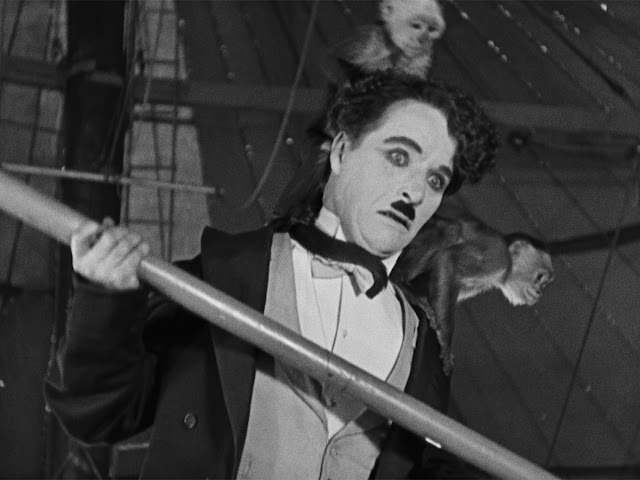
Take a review by Christian Blauvelt of Charlie Chaplin’s silent film The Circus , for example. Since the film does not have sound, properly critiquing the film requires close attention. Viewers have to pay attention to the various nuances in Chaplin’s performance, follow the story, and take in the cinematography. Regarding The Circus , Blauvelt writes, “The film lacks a conventional plot, but is rather a pearl necklace of strung-together episodes. ” The statement isn’t a criticism, but a keen observation likely gleaned from more than one viewing.
So while every film reviewer has their own approach, many choose to watch a film more than once to deliver the best possible review. Image The Criterion Collection.
2. Express your opinions and support your criticism.
Professional reviewers do not shy away from sharing whether they thought a movie was good, bad, or indifferent. In a review for the film Mother!, reviewer Candice Frederick describes the film as “uncomfortable,” and “controversial,” helping viewers understand the tone of the movie. While Frederick seemed to enjoy the film, her honesty about how it would make audiences feel was vital in writing the review.
Be sure to back up these thoughts with specifics–a disappointing performance, beautiful cinematography, difficult material that leaves you thinking, and so on. Professional reviewers should express why and how they came to their criticism.
3. Consider your audience.
Are you writing for a fan site or a news outlet? Who will read your pieces, and what are their interests? Knowing who your readers are and where the review will be published can help you decide what elements of the movie to highlight. For example, take these two very different reviews for the film ‘Synecdoche, New York’.
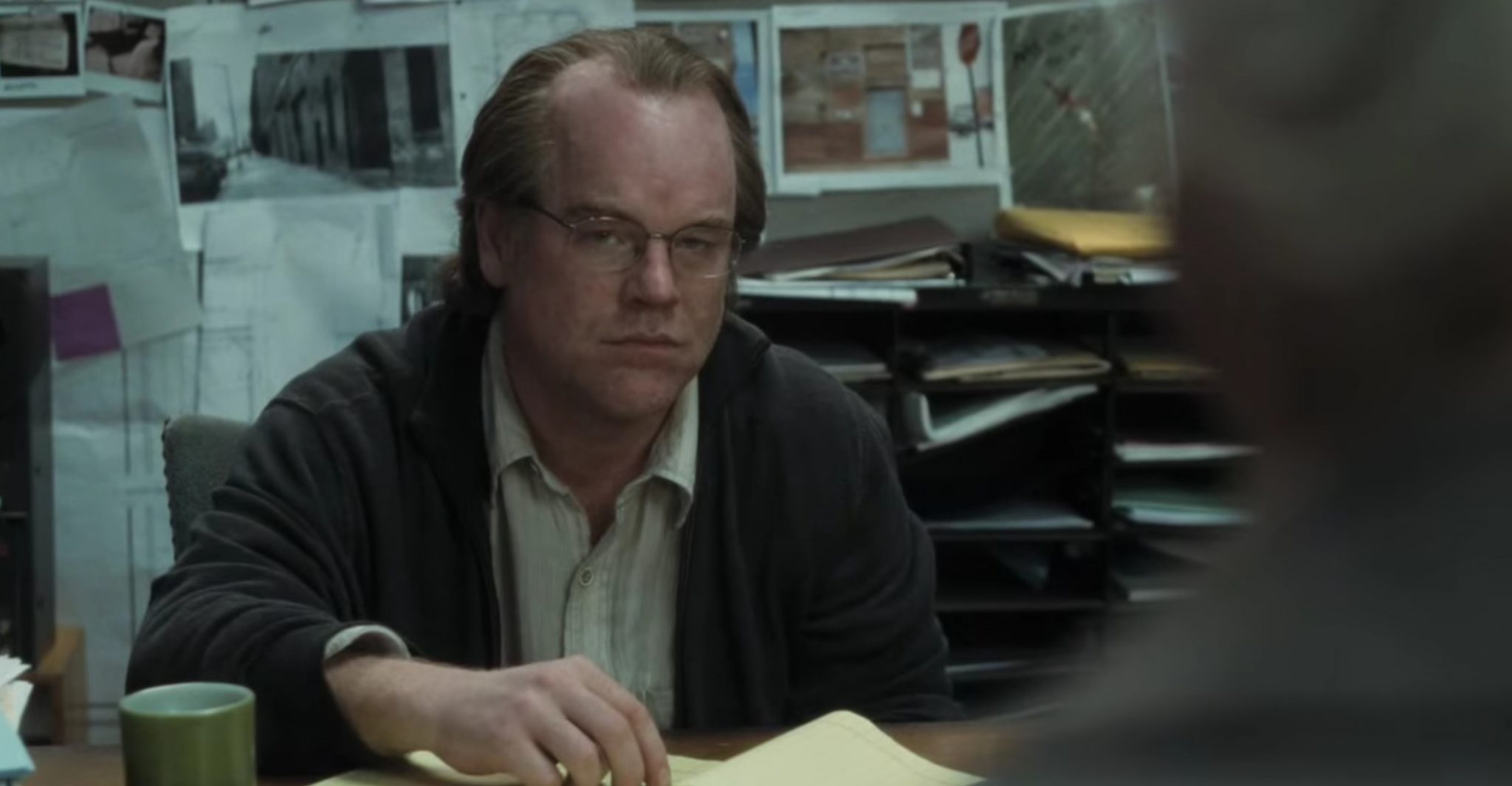
The first review was written by Alonso Duralde for The Today Show , and clocks in at around 500 words. The film focuses on the bullet points: characters, plot, and a concise review. The second review is over 3,000 words and published on the Critical Critics blog . This review goes into massive depth (and yes, includes spoilers) about the film, providing an incredible amount of analysis. The first review is tailored for the casual filmgoer, while the second is for cinephiles. Each review serves a different purpose.
It’s also a good idea to adjust your writing style to fit the target audience. For example, Alonso Duralde is a talented film reviewer and likely wrote the review to fit the tone of The Today Show site. Image via Director’s Library.
4. Talk about the acting.
When reviewing a film, it’s important to take space to discuss the performances. Does the film feature a seasoned actor in a new kind of role or a brilliant performance from a rising star? How was the acting? In a review by Brett Milam for the award-winning film Whiplash , he goes into rich detail about performances by both breakthrough actor Miles Teller and seasoned professional JK Simmons.
Regarding Teller, Milam writes, “This is a performance. This is art,” and about Simmons, “I found him fascinating to just look at.” Those are just small examples of the analysis he provides regarding their acting. As the film mostly focuses on the relationship between their two characters, Miles as the protagonist and JK as the antagonist, the review of the performances lends well to the plot of the film: student and teacher going head to head in an intense and determined showdown.
Feedback about how well the actors handled the script, the dynamics in an ensemble, and so much more can help describe how the actors did in any given film.
5. Call out directors, cinematographers, and special effects.
Reviews that include highlights or missteps of directors, cinematographers, and costume designers can help provide support to your critiques. By providing specific examples of what worked, what surprised you, and what fell short of expectations, reviewers can write a well-thought-out review that goes beyond whether or not you liked it.
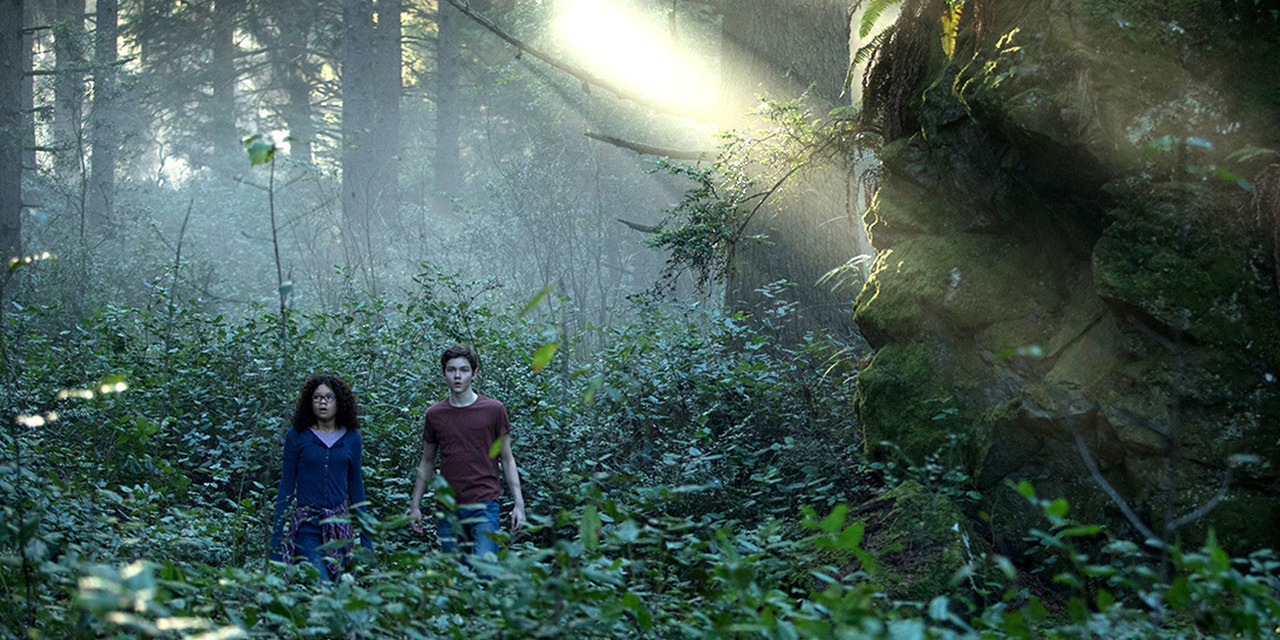
In a review for A Wrinkle in Time , Monique Jones artfully crafts a piece that diplomatically cites the missteps of the film. From analyzing the quality of the CGI to the camera techniques to inconsistencies in the rules of the fantasy universe, Jones fairly offers a critique that guides the filmmakers and crew on future endeavors. To write this type of review, it helps to have some knowledge of the filmmaking process so you can properly assess the screenwriting, cinematography, special effects, acting, and more. Image via Disney.
6. No spoilers!
The point of writing a movie review is to get people interested in seeing a movie. That’s why it’s absolutely best practice to not reveal spoilers in a film review. Film reviewer Robert Daniels approaches this creatively. In his review of Annihilation , he provides commentary on what would be considered spoilers. However, he places that part of the review at the bottom of the article under a bold header/image that warns the reader he’s about to spoil the film. For reviewers who want to dissect the entire film, this is a good way to both tease the film for anyone who hasn’t seen it and cater to people who want to know what the ending is.
Remember: the goal of any film review is to discuss the plot without revealing any twists or the ending of the film.
7. Study the professionals.
As with all writing endeavors, the more you read, the better. However, with the modern landscape of film reviewing, which can go beyond writing and extend to content creation for social media platforms, there are a ton of reviewers to take notes from. First, determine what kind of reviewer you want to be, and what kind of medium you plan to deliver your reviews on. If you plan to post to Medium, for example, studying the reviewers already established on the site can be a great starting point.
Then, read film reviews for some of your favorite films. Determine which style of review you like and don’t like. Question why, and use your critical eye to consider why one reviewer has a hundred thousand followers and another only has two. If you’re looking to be featured on a website or a magazine, read the publications where you’d like your writing to appear as a template for your reviews, and don’t forget to read the submission guidelines. A few examples of film review professionals include Rotten Tomatoes , Roger Ebert , and Film Comment.
8. Reread, rewrite, and edit.
While writing film critique is based on opinion, and follows the style of the reviewer, it’s still important to edit work. Writers should check for spelling, grammar, and readability. No matter how good a writer’s opinions are, they will not be taken seriously if the director’s name isn’t spelled correctly. Tools such as Grammarly and Hemingway Editor can be great for correcting and finding areas that need improvement.
9. Find your voice.
The best reviewers have a distinct personality that comes across in their writing. Los Angeles Times film reviewer Carlos Aguilar wrote an impassioned piece about the film Beatriz at Dinner , going into a lot of detail about his experiences working in the film industry and his Mexican heritage. By sharing anecdotes about casual racism he’s experienced and connecting it to the film’s protagonist, and what she goes through, the review feels personal and relatable.
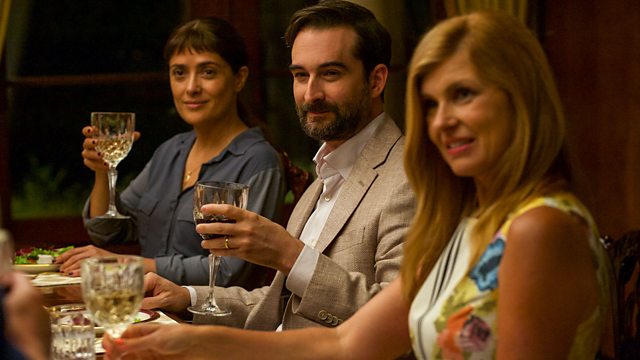
“If at a film festival – to which I’ve gotten access to because I’m a published writer – in a progressive city like Los Angeles, I must keep my guard up when people question my right to be there, then how are the voiceless supposed to feel safe, respected, or hopeful?” Aguilar writes.
For new reviewers, developing this type of unique voice does not happen overnight, so take every opportunity to write as an opportunity to develop your style. Image via BBC.
10. Know your taste.
As a film reviewer, it can be helpful to identify your taste in film. By knowing specific preferences, strengths, and biases, reviewers can offer nuanced critiques that resonate with audiences and provide valuable guidance on which films they might enjoy. Additionally, it helps to maintain credibility and integrity as a reviewer by ensuring that assessments are authentic and reflective of personal cinematic sensibilities.
Try to explore various genres, directors, and themes to understand what resonates emotionally, intellectually, and aesthetically. Pay attention to the types of stories that engage you, which can help define your preferences.
Learn More About Filmmaking at NYFA
Film students with writing experience actually make great reviewers, as many of them are required to study a range of topics relating to film that can include cinematography, screenwriting, producing, and much more. Ready to build even more skills in filmmaking? Request more information about New York Film Academy’s filmmaking programs and workshops today!
Verify originality of an essay
Get ideas for your paper
Find top study documents
How to Write a Movie Review for College
Updated 04 Apr 2024

If you wish to know how to write a movie review, then you are on the right page. A movie review forms part of essays college students writes. While many cinema-loving students find it interesting, others don’t. A film review does not mean writing what happened in a film; instead, it involves doing a critical assessment of the same. Also, you can proof your paper instantly with Edubirdie plagiarism tool .
What is a movie review? A movie review is a detailed analysis of a film or a documentary. It involves analysis, research, and reporting the writer’s views in a structured way. The writer assumes a position of educating readers whether they have watched the film or not. In fact, many people read movie reviews to decide whether they want to see a film or not.
A film review tests students' critical thinking and reporting skills. It also examines their dexterity in writing in a logical, concise, lucid, and creative manner. This post shall teach you to craft the best film review in your class without being redundant in writing , and you can find many interesting tips on how to write a movie review for college and movie reviews examples.
How to Write a Movie Review Like a Professional Critic
Writing a movie review though challenging for some students can be quite easy. What you should know is that the format of presenting a review are the same which makes it an interesting task. Here we offer a step-by-step process of how to write a good film review or how to write an introduction for a movie review that any student can follow:
- Watch the movie: Before you can review any film, you must watch it. You cannot review a motion picture you have not watched. Therefore, for success watch the film at least twice. Note: do not watch it like you’re a regular moviegoer or movie enthusiast. Be focused and conscious through the film. Take notes if necessary.
You will need to take notes hence have a notebook and pen handy. Record all events and characters (major and minor). Try to be meticulous do not overlook anything.
- Research the movie: Watching the film should give you the overview and feel of the movie. With that, it should be easy and exciting to research the movie. The research augments what you have watched in the movie. In your research, you should find out who the filmmaker is, what prompted the making of the movie, the characterization, historical events the lead to the film, location, plot and so on.
If you are aware of the details behind the movie, the movie will be more understandable and engaging. Note also that if you do not understand the movie you cannot move to the next step which involves analysis. Try not to proceed to the next step unless you vividly understand the movie. If it entails watching it again until you fully get it, do it. The following should form part of your findings regarding the film:
- Title and year
- Names of the lead actors
- Name of the director
- Title of the book (if based on a book)
- Draft the review outline: Draft an outline with which you will write the review. The overview will help you organize your review concisely and logically. The outline is more like the skeletal frame on which the whole study will stand. A good draft will yield a perfect report, and the reverse is also true.
An outline enhances the quality of the film review, and it is essential you have your outline before you start writing. A sample outline looks like this:
1. Introduction
- Date released
- Background info
2. Summary of the story
3. Analysis of the plot elements (read also: guide about a critical analysis for movies)
4. Creative elements
5. Opinions (add examples to back up your claims)
- Camera techniques
- Special effects and so on
6. Conclusion
- Analyze the movie: After fully understanding the movie, you can start its analysis. Critically evaluate the film from the beginning to the end, noting every detail. While analyzing, if you observed any confusing part, re-watch to grasp the idea portrayed there fully. After you fully understand it, then you are set to write the movie review. To write a decent analysis, you need to know how to write a film critique.
- Augment Your Review with Examples : While watching the movie, your observations should be supported with examples, i.e., mention scenes the event took place. If the plot is faulty, mention it but state examples to support that claim. You can also mention poorly developed characters evident in the movie and others. Everything you observed in the film must be noted.
Examples of notables include locations, faulty or beautiful dialogues, quotes that appeal to you, poorly made speeches, bloopers, editing errors and so on. Do take note that it is not enough to make general statements about how awesome or awful the movie is, you must support your claim with evidence in the film. That is why it is called a movie review and not opinion sampling interview about the movie.
- Comment on the originality of the movie: Finally mention the uniqueness of the film which you noticed in the one you’ve watched. But even if the movie happens to be a standard feature with conventional approaches, you can still mention this as well. A regular film is still a film.
- Write Your Review: With all the fact gathered above, you can now use the outline to write your film review. Make every part easy and enjoyable to read. Importantly, make the introduction engaging and captivating. You should go for a grand opening that will grab the attention of any reader. A good opening keeps the reader on the article.
Let us assume your introduction is watertight and engaging; any sloppy body will lose your reader. Hence, make the body informative and engaging. The review aims to reveal as much information as possible. Therefore, do your best to give all the details in the film to the reader. Engage your analytic mind.
Another essential part of the review is the closing or conclusion. Here you give your view about the movie with evidence revealed in the body. Connect the conclusion with the introduction creatively.
- Edit Your Final Draft: After writing your first version of the review, you can re-write the final one after editing. Also, you should check the final draft for spelling errors, grammar mistakes, and so on. Ensure sentences connects logically to each other and watch the format used. Make a final comparison of your work with the requirement by your professor or lecturer.
With the help of free word counter check the number of words required and cut them if more than needed but if not, add relevant information to make them up. Do not add irrelevant details for the sake of space. Ensure your final submitted draft is well edited, polished, plagiarism-free and presented in the recommended format or style.
Need more writing assistance?
Connect with our top writers and receive a movie review sample crafted to your needs.
Tips to Follow While Writing a Movie Review
Since a movie review essay requires dedication and time investment, you might want to know the special tips to get you through the assignment seamlessly. Do recall that perfect conclusion of this assignment will add to your grades, hence the need to take it seriously. If you wish to know How to write a movie critique easily, then this section will tell you that.
The useful tips you should consider are as follows:
- Watch the film at least two times
- If you have seen it before, make sure you re-watch it for the assignment.
- Watch the movie not as a moviegoer but with an analytic mindset of a professional reviewer
- Pay attention to details
- Take notes as you watch
- Don’t be in a rush - take your time, but be aware of the deadline
- Do not write out of the contest of your coursework
- Follow the requirements of your professor
- Use an outline to organize your work
- Start working on the body of your film review first and the introduction next
- Write an engaging introduction and a powerful closing.
- Never forget to edit your work.
Read also: How to write an editorial Essay: Useful Tips for Those Who Want To Perfect Their Skill
Elements of a Professional Movie Review
One similar thing about these reviews is that they all should contain the same elements regardless of the genre. The elements of a movie review provide the structure on which you will base the analysis. A proper movie review format comprises the following components:
- The Title: It’s not enough that the movie title appears on the headline, it must appear in the review too. Mention it in the text and feature it in the introductory paragraph; there is no harm in doing that.
- The Storyline (Plot): The motion picture review itself refers to the summary of the movie. Present it in a concise way for people who are yet to watch it. When you are beginning to write a movie review, never have the mindset that your professor or any would-be reader has watched the movie. Therefore, never leave important points or events out. Your job is to elucidate the movie clearly to the reader: mention the faults observed, and the filmmaker’s brilliant points or downers.
- Filmmaker: What is a movie analysis without the filmmaker? Your review must feature him or her. Therefore, dedicate a paragraph to him, write about the kind of personality he or she is. Reveal the filmmaker's political stance (if relevant), background, the controversial life of the person (if he is one), etc. You can also use the opportunity to talk about other movies the director has worked on before now, and then connect it with the one under review.
- Significance to your class: Relate the content of the film or documentary to your course topic. Check its importance for historical accuracy. If the film is for history class, discuss any over-dramatization noticed in the act. However, if the film was based on a book you have reviewed in one of your classes, mention the connection between the book and the movie: state variances, comparisons and other elements present in the book that are missing in the film.
- Creative elements: Creative elements make or mar films, that is why filmmakers go out of their ways to add them to their movies. It is your job to state how these elements work in the plot and the film in general. For instance, comment on the effectiveness of the sound effect in enriching the viewing experience of the movie? Talk about the lighting, costume, makeup, colors, camera, etc.
- Actors: The cast carry the movie; without them, there is no movie. Your review should reveal if they acted well or poorly. State if their acting was realistic or not. Do not fail to mention if they have the skills and charisma to portray the role they played. You can also state if they were the right actors to play the role they did. Furthermore, you can suggest actors who could have played certain roles better than those in the film.
Get AI-free papers in just 3 hours
Receive high-quality, original papers, free from AI-generated content.
Common Movie Review Mistakes You Should Avoid
After your arduous work of submitting your film report, you might be shocked to learn that your hard work received a query. You may wish to know why, well it could be because you commit any of the following common mistakes:
- Focusing on the wrong thing: Do not shift your focus. You might want to connect the film with some historical events, however, do not give unnecessary analysis or details that are not relevant to the movie under review. For instance, avoid giving the history of motion picture unless the film is about the development of the industry. Try and be focused.
- Alienating yourself from the review: You are the one writing the review, therefore, do not insert yourself in it. The review already has your name and signature on it so adding the possessive pronoun "I" should be discarded. The mistake most student make is writing in the first person, e.g., “I like the movie a lot, I admired the lead character,” and so on. Since the review exposes your understanding, opinions, likes, and dislikes, then it is unnecessary to insert yourself in it.
- Not doing your research: As said earlier, watching the movie is one side of the coin, you need to check out other details. Researching the film is highly critical because it would expound to you all the nitty-gritty details, not in the motion picture.
- Lack of evidence: In writing about a motion picture, you must substantiate any opinion or claim. You need to state your reason for liking, disliking, etc. of the film.
- Avoid irrelevant discussion: Do not start explaining issues not related directly with the motion picture you are analyzing.
- Unstructured review: Never write a movie review without structure, it would reveal you as an unorganized student. Hence structure your review properly by first creating the outline and organize your work.
- Avoid Generalization and be Precise: Never generalize ideas when you write a movie review. Avoid general statements like “a fantastic movie,” “beautiful set,” “excellent acting,” and such like. Support any comment you make with evidence from the film.
- Review lacking substance and analysis: Avoid writing a motion picture review that does not have substance or analysis. A review is a piece of educational literature, therefore, add intelligent analysis to it.
Movie Review Example from Top Writer
Here are a few examples of movie review topics to steer you in the right direction:
- Avatar Movie Review
- Beautiful Woman Movie Review
- Black Panther and its Global Significance
- In Pursuit of Happiness: Lessons to Learn
- iRobot: The Depiction of AI in the Future
- Matrix Movie Review
- Roots and Its Implication on the Life of the Black Men
- The Good, the Bad, the Ugly Movie Review
- The Last Holiday Movie Review and the Lesson of Living Life Too Cautiously
- Titanic Movie Review
Quick & Reliable Writing Help
As you can see, a movie review essay is an interesting paper to write. Recall that the whole point of a movie review is to inform the reader about the film and the ideas behind it. Also, it reflects your unbiased and objective view about the film. Adopt all our tips, and you shall submit a professional-looking report.
However, if you don't care about movies or still have issues coming to terms with all we have explained above, then contact us for help. At Edubirdie, our movie and book review service are poised to help with your assignment and guarantee a high-quality review at an affordable price. With us, you shall learn how to do a movie review that will wow any professor.
Was this helpful?
Thanks for your feedback, related blog posts, how to write an article review: guide with examples.
When majority of students in the United States are faced with an assignment to write a review of an article, there are several reasons why it insta...
How to Write a Literature Review Student’s Guide
Learning how to write a literature review is one of those tasks that every college student faces at least once when working with a research paper o...
How to Write a College Paper Successfully
Writing a college paper is an undeniably challenging task. It is one of those chances you are expected to show your professors the kind of student ...
Join our 150K of happy users
- Get original papers written according to your instructions
- Save time for what matters most
- Paper Writing Service
- Essay writing service
- Annotated Bibliography Writers
- Coursework Writing Service
- Dissertation Writing Service
- Order Essay
- Write My Essay for Me
- Grammar Checker
- Citation Generator

How to write an essay about a movie?
Interpret a key message of the film before you start writing, see the movie one more time, go google what other people think about the movie, don't forget to create a movie analysis essay outline.
We rely on cookies to give you the best experience on our website. By browsing the website, you agree to it. Read more.

How to Write a Movie Review
Writing a Film Review
Movies have become a cultural mainstay of our society. Not only are they art and entertainment, but they have also become a way for people to bond and make connections. Finding someone who has a similar taste in movies can create new friendships and start interesting conversations. That's why understanding how to analyze a movie and write movie reviews is such a useful skill.
Do you need to know how to write a movie review for college? Or how to write a movie critique? Or maybe just how to do a movie review? In this article, you will learn how to write a movie review step by step, as well as get an in-depth guide into each section of a movie review.
What is a Movie Review?
A film review essay is more than just a plot summary followed by a recommendation. A movie review analyzes different elements of a movie and mixes personal opinion with objective analysis. The goal of the movie review is to tell the reader about the details of a movie while giving them enough information to decide for themselves whether it's worth watching or not. Of course, a good movie review also has to be interesting and engaging!
How to Write a Good Movie Review
More than most other pieces of writing, there are a lot of steps to take before actually getting into writing a movie review. But don't worry though, most of these steps are pretty fun and if you follow them, you will know how to review movies.
Watch the film!
It goes without saying that you need to watch a movie before you write a review for it, so, before you do anything else, watch the movie at least once. Don't worry about trying to pick up specific details on your first watch, just enjoy the movie and get a general impression of whether you liked it or not and what you liked or disliked. Ideally, you should watch the movie at least two times. On your second and third viewings, pay attention to movie review criteria like cinematography, acting, dialogue, character development, deeper meanings, etc. Read some film review examples to get a sense of the things they talk about.
Pause the movie on your second and third viewings and take notes on things that stand out to you. Don't be afraid to take as many notes as you want, after all these notes are just for you. You might not use all the notes you have taken, but they will help you compose the main part of your body paragraphs.

Express your opinions
Once you have watched the movie a few times and taken notes, make a list of the strongest opinions you have about the movie. If you think that the quality of acting was one of the best parts of the movie, use your notes to come up with specific examples. You should have between 3 and 5 key opinions that you will elaborate on when writing a film review along with examples to back up your claims.
Think about your audience
The language you use is going to change based on who you are writing the movie review for. If it is an assignment for school or university, then you may have to use more technical language. If you're writing an article for a website or personal blog, then think about who the audience is and use language appropriate for them. Keep in mind that your audience also depends on the genre of the movie you are critiquing. A movie review for a serious period drama will have a different audience than a buddy cop comedy and therefore different language. Look at a movie review sample from different genres to get an idea of the type of language to use.
Research the actors
Having big movie stars associated with a film is often one of the main selling points of a movie. If an actor is critically acclaimed, it’s especially important to mention the awards they have won as this is often a sign of the overall quality of the movie. It's also possible that you didn't like the movie overall, but one of your favorite actors was in it so you enjoyed the movie and another fan might enjoy it too.
Do background research
An easy way to make a movie review interesting is to search for interesting details about the making of the movie. It may be worth mentioning if it was shot in a particularly beautiful place or a unique location, or if the special effects were practical rather than CGI. Include interesting casting decisions or other actors that were considered for a particular role. Think about what information could be interesting to someone who might want to watch the movie and include those details. Go over some movie critique examples to get inspiration.
Research the professionals
People can be fans not just of the actors, but of directors, writers, cinematographers, costume designers, and many other elements of filmmaking. Many directors are auteurs, which means they have a very particular visual style or storytelling method. How much time you spend on this section is dependent on your audience. If you're writing for social media or a blog for general people, then this might not be interesting to most. But if you're writing for film school or for a specific audience interested in filmmaking, then this section will need to be more elaborate. Look at a film review example written for different audiences to understand the differences.
Draft an outline
Now that you've done all the required research, it's time to come up with a review outline. An outline is always useful when doing any piece of writing because it gives you a chance to visualize the structure and plan how you want to incorporate information. This is the general film review format.
Introduction
- Brief summary of the film
- Discuss plot, tone, characters
- Discuss creative and technical elements
- Your opinions
Conclusion
Come up with a catchy title.
Almost more than any other piece of writing, a movie review’s title needs to be engaging. A title like ”film review of (name of the movie) might be to the point, but isn't going to stand out. A good title should grab the reader's attention and make them want to read more. A few ways you can do this is by talking about a specific actor or director, or by using one of the main plot points of the movie. For example, “A Romantic Comedy for the Unromantic”, or “Chris Pratt Plays Against Type in the Best Possible Way”. Look at the titles of some movie review examples for inspiration!
Write your review
It's finally time to get to the actual writing! The next part of this article talks in-depth about each section of a film review.
People aren't going to take a review seriously if you have spelling mistakes or grammatical errors. If it's an assignment for school, then you’re going to lose marks because of mistakes like that. Make sure you reread your paper a few times and check for typos and other silly mistakes. Read the paper out loud once or twice to get an idea of if it has a good flow. Don't be afraid to move sections around if you think it helps you build a stronger case.
Struggling with the Film Review?
Get your assignments done by real pros. Save your precious time and boost your marks with ease.
How to Write a Film Review
Do you want a ‘how to write a movie review’ template? Let's go over the specific parts of a film review and what to include in each one.
Your first sentence needs to capture the reader's attention. You can do this by stating an interesting fact about the movie, starting off by expressing your opinion of whether it's good or bad, mentioning some of the important actors, comparing it to other movies in the genre or to real-world events, whatever it is, make sure it's catchy!
Next, give background information about the movie. This includes things like the title, release date, studio, important cast members, director, budget, etc. Make sure to highlight any achievements of the movie, for example, if it was nominated for any awards. The same goes for the director as well as important members of the cast. This shouldn't just be a dry stating of facts, rather this should be a collection of interesting information about the background of the movie.
Finally, end your introduction paragraph with your thesis. In the case of a film review, your thesis is essentially what you thought about the film. Without giving away too much, express your overall impression of the movie noting particular things that you thought stood out or were weak.
Summary of the story
The trick to writing the summary of the story is giving readers an idea of what to expect without giving away any important plot points or spoilers. The goal of this section isn't to explain the plot of the movie, It's to make sure that people have a basic understanding of the story so that the rest of the review can make sense. Describe the setting of the movie, which includes the main locations and time period. Introduce the main characters (including the name of the actor in parentheses after the name of their character). And go over the general storyline.
Plot elements
This is when you start explaining what you thought about the movie. Start with an analysis of the plot itself. Did it have a rising action that builds suspense? Was the climax a good payoff? What were your overall impressions of the movie? How did it make you feel? What do you think the purpose of the movie was and did the director succeed in their goal?
This is also the section where you get to talk about the different characters in the movie. Why did you enjoy certain characters? Were some characters better developed than others? Could some characters have benefited from more development? Was the villain particularly interesting?
Think about the overall mood of the movie, did it change over time? How did the tones and symbols of the movie emphasize elements of the plot? Remember that any point you make in this section has to be backed up by examples. So if you say that there are several plot holes that make the movie complicated to understand, mention the specific scenes.
Creative elements
There are a lot of technical and creative elements in a movie that can stand out even if the overall plot and story weren’t the best. On the other hand, even a great story can be spoiled by bad dialogue or set design. These are some of the creative elements you should pay attention to especially when rewatching the movie and taking notes.
Dialogue : This can refer to the overall writing of the movie as well. If you can get your hands on a script then read it! When thinking about dialogue ask yourself, did the conversation between characters seem natural and flow easily? Or did it seem choppy and unnatural?
Cinematography : Cinematography refers to the camera effects and the choices of how to film a certain scene. The lighting, the choice of camera angles, essentially the unique perspective of the story as told through the camera.
Editing : Editing refers to the transition between different scenes as well as how well the movie flows together. This could include things like clever montages, longshots, different perspectives, etc.
Costumes : Some movies, especially historical movies, fantasy films, and science fiction films, depend heavily on costume design. Costumes are an integral part of making a character stand out or making the world seem more real.
Set Design : Set design refers to the backgrounds of scenes. Some sets might be more elaborate whereas others can be minimalistic. Each choice has its pros and cons and effective set design creates proper ambiance, setting the tone and mood for a scene or the movie.
Music and Sound : Sometimes the movie has a great soundtrack or just incredible sound effects that help make it stand out.
Stunts : More important for action movies, but in general stunts and action sequences can be a major selling point for a film.
Special Effects : Most movies rely on some amount of special effects, and whether it be CGI, or practical, or a combination of the two, the quality is important.
Once you have analyzed multiple different elements of the story from its plot, characterization, and other technical and creative elements, you can state your opinions and provide evidence for them. Make sure you refer to specific scenes or specific situations when looking for substantiating evidence. Remember that the goal of a movie review is not to just state whether you liked or disliked a movie, it is to analyze it in an objective way, and give information so that somebody else can decide whether they want to watch the movie or not.
In the conclusion you express your main opinion of the movie along with the most important pieces of evidence. You can talk about the purpose of the movie and whether the director was successful in showing that purpose. End with a recommendation of whether the movie should be watched or not, along with suggestions of movies that are similar to it.
Did you like our Film Review Guide?
For more help, tap into our pool of professional writers and get expert essay editing services!
Mistakes to avoid
You now know how to write a review on a movie but let's take a look at some mistakes that you should be careful to avoid.
Not focusing on the film
It's easy to start writing about things like the historical events the movie you loved is based on or the importance of the Marvel Cinematic Universe overall rather than focus on the movie itself. While those elements can be interesting to include as background information, the point of a film review is to go over a particular movie so that is what you should spend the most time on.
Not providing evidence
A common mistake people make when they write movie reviews is to state their opinions without any objective analysis. An easy way to overcome this mistake is to make sure that you provide evidence for any claims that you make.
Spoilers are an easy way to make sure that people will be upset with your movie review. It is common to accidentally give away too much, especially when writing the plot summary. Find the line between giving enough information so that people understand the general story and revealing important plot twists and turning points. Read some sample movie reviews for examples of how to avoid spoilers.
Using personal pronouns
Statements like “I did not like the special effects” or “I did not like the pacing of the movie” are clearly expressions of opinion. It is better to make statements like “the special effects in certain action scenes were cartoonish and took away from the realism of the film”.
A movie review essay can be incredibly fun to write, especially if you have a strong opinion about the movie. But keep in mind that a movie review isn't just about your opinion, it has to include an objective analysis with claims backed up by evidence from specific scenes. It's difficult to have a movie review definition, but a great movie review is a blend between personal opinion and objective analysis. It informs the reader about the strengths and weaknesses of the movie while letting them make the decision whether they want to watch it or not.
If you found your way to this article because you were looking for help on how to write a movie review for college, then you're in the perfect place. If you need any help, don't hesitate to reach out to the experts at Studyfy. At Studyfy, we offer a wide range of custom writing services, coursework writing services, and essay writer service . Our team of experienced writers is well-equipped to handle any writing task you may have, no matter the complexity or urgency. Just say, " write a paper for me ," and we will ensure that you receive a high-quality custom essay that meets all your requirements. Trust us to provide you with the best coursework writing services and custom essay writing that will help you achieve your academic goals.
Featured Posts
How to write a scholarship essay.

How to Write an Argumentative Essay

How to Write a Cause and Effect Essay
.jpg)
How to Write an Expository Essay

How to Write an Analytical Essay

How to Write a Reflective Essay

- PRO Courses Guides New Tech Help Pro Expert Videos About wikiHow Pro Upgrade Sign In
- EDIT Edit this Article
- EXPLORE Tech Help Pro About Us Random Article Quizzes Request a New Article Community Dashboard This Or That Game Popular Categories Arts and Entertainment Artwork Books Movies Computers and Electronics Computers Phone Skills Technology Hacks Health Men's Health Mental Health Women's Health Relationships Dating Love Relationship Issues Hobbies and Crafts Crafts Drawing Games Education & Communication Communication Skills Personal Development Studying Personal Care and Style Fashion Hair Care Personal Hygiene Youth Personal Care School Stuff Dating All Categories Arts and Entertainment Finance and Business Home and Garden Relationship Quizzes Cars & Other Vehicles Food and Entertaining Personal Care and Style Sports and Fitness Computers and Electronics Health Pets and Animals Travel Education & Communication Hobbies and Crafts Philosophy and Religion Work World Family Life Holidays and Traditions Relationships Youth
- Browse Articles
- Learn Something New
- Quizzes Hot
- This Or That Game
- Train Your Brain
- Explore More
- Support wikiHow
- About wikiHow
- Log in / Sign up
- Arts and Entertainment
- Film Studies
How to Write a Movie Review
Last Updated: May 13, 2024 Fact Checked
This article was co-authored by Marissa Levis . Marissa Levis is an English Teacher in the Morris County Vocational School District. She previously worked as an English director at a tutoring center that caters to students in elementary and middle school. She is an expert in creating a curriculum that helps students advance their skills in secondary-level English, focusing on MLA formatting, reading comprehension, writing skills, editing and proofreading, literary analysis, standardized test preparation, and journalism topics. Marissa received her Master of Arts in Teaching from Fairleigh Dickinson University. There are 14 references cited in this article, which can be found at the bottom of the page. This article has been fact-checked, ensuring the accuracy of any cited facts and confirming the authority of its sources. This article has been viewed 5,622,503 times.
Whether a movie is a rotten tomato or a brilliant work of art, if people are watching it, it's worth critiquing. A decent movie review should entertain, persuade and inform, providing an original opinion without giving away too much of the plot. A great movie review can be a work of art in its own right. Read on to learn how to analyze a movie like a professional film critic, come up with an interesting thesis, and write a review as entertaining as your source material.
Sample Movie Reviews

Writing an Intro for a Movie Review

- Comparison to Relevant Event or Movie: "Every day, our leaders, politicians, and pundits call for "revenge"– against terrorist groups, against international rivals, against other political parties. But few of them understand the cold, destructive, and ultimately hollow thrill of revenge as well as the characters of Blue Ruin. "
- Review in a nutshell: "Despite a compelling lead performance by Tom Hanks and a great soundtrack, Forrest Gump never gets out of the shadow of its weak plot and questionable premise."
- Context or Background Information: " Boyhood might be the first movie made where knowing how it was produced–slowly, over 12 years, with the same actors–is just as crucial as the movie itself."

- Using stars, a score out of 10 or 100, or the simple thumbs-up and thumbs-down is a quick way to give your thoughts. You then write about why you chose that rating.
- Great Movie: ABC is the rare movie that succeeds on almost every level, where each character, scene, costume, and joke firing on all cylinders to make a film worth repeated viewings."
- Bad Movie: "It doesn't matter how much you enjoy kung-fu and karate films: with 47 Ronin, you're better off saving your money, your popcorn, and time."
- Okay Movie: "I loved the wildly uneven Interstellar far more than I should have, but that doesn't mean it is perfect. Ultimately, the utter awe and spectacle of space swept me through the admittedly heavy-handed plotting and dialogue."

- Great: "Michael B. Jordan and Octavia Spencer's chemistry would carry Fruitvale Station even if the script wasn't as good. The mid-movie prison scene in particular, where the camera never leaves their faces, shows how much they can convey with nothing but their eyelids, the flashing tension of neck muscles, and a barely cracking voice."
- Bad: " Jurassic World's biggest flaw, a complete lack of relatable female characters, is only further underscored by a laughably unrealistic shot of our heroine running away from a dinosaur – in heels."
- Okay: "At the end of the day, Snowpiercer can't decide what kind of movie it wants to be. The attention to detail in fight scenes, where every weapon, lightbulb, and slick patch of ground is accounted for, doesn't translate to an ending that seems powerful but ultimately says little of substance."

- Does the film reflect on a current event or contemporary issue? It could be the director's way of engaging in a bigger conversation. Look for ways to relate the content of the film to the "real" world.
- Does the film seem to have a message, or does it attempt to elicit a specific response or emotion from the audience? You could discuss whether or not it achieves its own goals.
- Does the film connect with you on a personal level? You could write a review stemming from your own feelings and weave in some personal stories to make it interesting for your readers.
Composing Your Review

- When you name characters in your plot summary, list the actors' names directly afterward in parenthesis.
- Find a place to mention the director's name and the full movie title.
- If you feel you must discuss information that might "spoil" things for readers, warn them first.

- Cinematography: " Her is a world drenched in color, using bright, soft reds and oranges alongside calming whites and grays that both build, and slowly strip away, the feelings of love between the protagonists. Every frame feels like a painting worth sitting in."
- Tone: "Despite the insane loneliness and high stakes of being stuck alone on Mars, The Martian's witty script keeps humor and excitement alive in every scene. Space may be dangerous and scary, but the joy of scientific discovery is intoxicating."
- Music and Sound: " No Country For Old Men's bold decision to skip music entirely pays off in spades. The eerie silence of the desert, punctuated by the brief spells of violent, up-close-and-personal sound effects of hunter and hunted, keeps you constantly on the edge of your seat."
- Acting: "While he's fantastic whenever he's on the move, using his cool stoicism to counteract the rampaging bus, Keanu Reeves can't quite match his costar in the quiet moments of Speed, which falter under his expressionless gaze."

- Keep your writing clear and easy to understand. Don't use too much technical filmmaking jargon, and make your language crisp and accessible.
- Present both the facts and your opinion. For example, you might state something such as, "The Baroque background music was a jarring contrast to the 20th century setting." This is a lot more informative then simply saying, "The music was a strange choice for the movie."

- Great: "In the end, even the characters of Blue Ruin know how pointless their feud is. But revenge, much like every taut minute of this thriller, is far too addictive to give up until the bitter end.""
- Bad: "Much like the oft-mentioned "box of chocolates", Forest Gump has a couple of good little morsels. But most of the scenes, too sweet by half, should have been in the trash long before this movie was put out."
- Okay: "Without the novel, even revolutionary concept, Boyhood may not be a great movie. It might not even be "good.” But the power the film finds in the beauty of passing time and little, inconsequential moments – moments that could only be captured over 12 years of shooting – make Linklater's latest an essential film for anyone interested in the art of film."
Polishing Your Piece

- Ask yourself whether your review stayed true to your thesis. Did your conclusion tie back in with the initial ideas you proposed?
- Decide whether your review contains enough details about the movie. You may need to go back and add more description here and there to give readers a better sense of what the movie's about.
- Decide whether your review is interesting enough as a stand-alone piece of writing. Did you contribute something original to this discussion? What will readers gain from reading your review that they couldn't from simply watching the movie?

Studying Your Source Material

- The title of the film, and the year it came out.
- The director's name.
- The names of the lead actors.

- Make a note every time something sticks out to you, whether it's good or bad. This could be costuming, makeup, set design, music, etc. Think about how this detail relates to the rest of the movie and what it means in the context of your review.
- Take note of patterns you begin to notice as the movie unfolds.
- Use the pause button frequently so you make sure not to miss anything, and rewind as necessary.

- Direction: Consider the director and how he or she choose to portray/explain the events in the story. If the movie was slow, or didn't include things you thought were necessary, you can attribute this to the director. If you've seen other movies directed by the same person, compare them and determine which you like the most.
- Cinematography: What techniques were used to film the movie? What setting and background elements helped to create a certain tone?
- Writing: Evaluate the script, including dialogue and characterization. Did you feel like the plot was inventive and unpredictable or boring and weak? Did the characters' words seem credible to you?
- Editing: Was the movie choppy or did it flow smoothly from scene to scene? Did they incorporate a montage to help build the story? And was this obstructive to the narrative or did it help it? Did they use long cuts to help accentuate an actor's acting ability or many reaction shots to show a group's reaction to an event or dialogue? If visual effects were used were the plates well-chosen and were the composited effects part of a seamless experience? (Whether the effects looked realistic or not is not the jurisdiction of an editor, however, they do choose the footage to be sent off to the compositors, so this could still affect the film.)
- Costume design: Did the clothing choices fit the style of the movie? Did they contribute to the overall tone, rather than digressing from it?
- Set design: Consider how the setting of the film influenced its other elements. Did it add or subtract from the experience for you? If the movie was filmed in a real place, was this location well-chosen?
- Score or soundtrack: Did it work with the scenes? Was it over/under-used? Was it suspenseful? Amusing? Irritating? A soundtrack can make or break a movie, especially if the songs have a particular message or meaning to them.

Expert Q&A

- If you don't like the movie, don't be abusive and mean. If possible, avoid watching the movies that you would surely hate. Thanks Helpful 0 Not Helpful 0
- Understand that just because the movie isn't to your taste, that doesn't mean you should give it a bad review. A good reviewer helps people find movie's they will like. Since you don't have the same taste in movies as everyone else, you need to be able to tell people if they will enjoy the movie, even if you didn't. Thanks Helpful 0 Not Helpful 0
- Structure is very important; try categorizing the different parts of the film and commenting on each of those individually. Deciding how good each thing is will help you come to a more accurate conclusion. For example, things like acting, special effects, cinematography, think about how good each of those are. Thanks Helpful 0 Not Helpful 0

You Might Also Like

Expert Interview

Thanks for reading our article! If you’d like to learn more about writing, check out our in-depth interview with Marissa Levis .
- ↑ https://owl.purdue.edu/owl/subject_specific_writing/writing_in_literature/writing_about_film/terminology_and_starting_prompts.html
- ↑ https://www.spiritofbaraka.com/how-write-a-movie-review
- ↑ https://www.nyfa.edu/student-resources/9-tips-for-writing-a-film-review/
- ↑ https://en.oxforddictionaries.com/writing-help/top-tips-for-writing-a-review
- ↑ https://writingcenter.unc.edu/tips-and-tools/summary-using-it-wisely/
- ↑ https://twp.duke.edu/sites/twp.duke.edu/files/file-attachments/film-review-1.original.pdf
- ↑ https://www.dailywritingtips.com/7-tips-for-writing-a-film-review/
- ↑ https://owl.purdue.edu/owl/subject_specific_writing/writing_in_literature/writing_about_film/film_writing_sample_analysis.html
- ↑ https://learning.hccs.edu/faculty/onnyx.bei/dual-credit/movie-review-writing-guide
- ↑ https://writingcenter.unc.edu/tips-and-tools/conclusions/
- ↑ https://www.grammarly.com/blog/how-to-write-a-movie-review/
- ↑ https://gustavus.edu/writingcenter/handoutdocs/editing_proofreading.php
- ↑ https://writingcenter.unc.edu/tips-and-tools/editing-and-proofreading/
- ↑ https://edusson.com/blog/how-to-write-movie-review
About This Article

To write a movie review, start with a compelling fact or opinion to hook your readers, like "Despite a great performance by Tom Hanks, Forrest Gump never overcomes its weak plot." Then, elaborate on your opinion of the movie right off the bat so readers know where you stand. Once your opinion is clear, provide examples from the movie that prove your point, like specific scenes, dialogue, songs, or camera shots. To learn how to study a film closely before you write a review, scroll down! Did this summary help you? Yes No
- Send fan mail to authors
Reader Success Stories
Did this article help you?

Breanna Lukes
Oct 17, 2018
Mar 31, 2021
Jun 29, 2023
Kothyn Evans-Alexander
Nov 28, 2018

Featured Articles

Trending Articles

Watch Articles

- Terms of Use
- Privacy Policy
- Do Not Sell or Share My Info
- Not Selling Info
wikiHow Tech Help Pro:
Develop the tech skills you need for work and life
How to Critique a Movie: Tips + Film Critique Example
How to write a film critique essay? To answer this question, you should clearly understand what a movie critique is. It can be easily confused with a movie review. Both paper types can become your school or college assignments. However, they are different. A movie review reveals a personal impression of the viewer. A movie critique, in its turn, aims to discuss the means of film production and give advice on what could be changed to make the film better.
Sounds challenging?
No worries, we are here to help!
This article by Custom-Writing.org experts contains useful tips on how to critique a movie and a great film critique example. Read on to learn more!
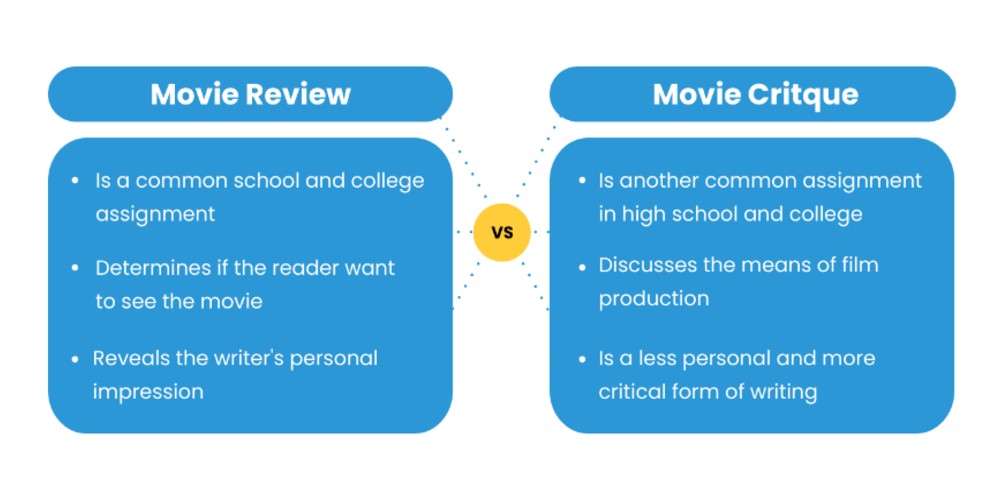
- 🎬 How to Begin
- ⚙️ Key Elements of Any Film
- 💡 Useful Phrases
🎬 How to Critique a Movie: the Basics
Writing a movie critique means offering your insight and opinion on what was good and not that good with the movie and what made it intriguing to watch. There’s always something you like about the film and something you don’t. You may consider that the plot was good, but the special effects were horrible. Think of all the possible film production stages and try to look at them critically.
How to Critique a Movie: General Guidelines
- Choose a movie
- Specify the issues you are going to discuss and analyze in your paper
- Watch the movie several times: first to get a general idea of the film; second – to pay attention to the points that come into your sphere of interest
- Take notes while watching
- During your second watch, note the details you weren’t able to notice the first time
- Be specific
- Be objective
Criticizing does not mean expressing negative emotions. Too much pessimism will kill the reader’s desire to get closely acquainted with your writing. Even though the movie could be a real failure, try to present a sophisticated evaluation.
⚙️ Movie Critique: Key Elements of Any Film
Any film features several elements that you need to mention when you write your movie critique paper. Below in this section, you’ll find these elements’ descriptions and useful tips on analyzing them in your paper.
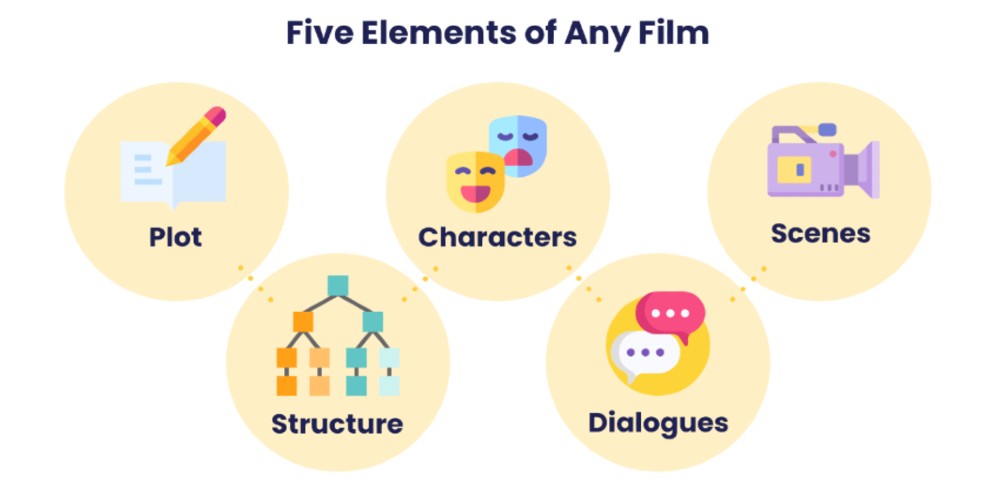
How to Critique a Film’s Plot
The plot is the flow of events and actions that consequently develop in a story. To discuss the film’s plot in your movie critique, you need to do the following:
- Decide whether the plot is predictable.
- Define whether some actions were unpredictable.
- If they were, express your views considering an unexpected turn of events that shocked you.
- See if the story corresponds to the characters’ motivations.
How to Critique a Film’s Structure
The movie’s structure is how the parts relate to each other or how the plot is built. Remember that the structure encompasses the following parts:
- Exposition (introducing the key characters and their circumstances)
- Rising action (mounting tension that leads to the story’s climax)
- Falling action
- Denouement (a resolution that brings the story to an end)
How to Critique the Movie’s Characters
Characterization is the description of the characters’ personalities, beliefs, motivations, etc. To discuss the film’s characterization in your movie critique, you need to do the following:
- Concentrate on specific movie characters.
- Set your priorities: some movie characters do not need any serious analysis.
- See if the characters’ dress, talk, act, or look corresponds with the impression they should create.
- Remember that the better the characters are developed, the more character-driven the story is.
- Consider that the right motivation of the characters makes the audience believe the story.
How to Criticize the Movie’s Dialogues
A dialogue is a conversation between two or more characters. To analyze the dialogues in your movie critique, do the following:
- Remember that good dialogues should not be protracted as they are to sound natural.
- See if there is a logical development of the conversation.
- Watch the body language of the actors and decide whether their gestures correspond to their words or not.
How to Criticize the Movie’s Scenes
A scene is a self-contained episode within a larger work. To discuss the scenes in your movie critique, you should do the following:
- Determine whether the scenes were well-played by the actors and well-shot by the operator.
- Mind that they are to develop smoothly as a part of a larger dramatic unit.
- Remember that scenes should build a chain that makes up the story.
- Examine if they contain some conflict and how the characters typically react to it.
- Try to follow through each scene to make sure that it properly transitioned into the next one.
🧱 Movie Critique Outline
The general structure of a movie critique resembles the structure of an essay .
- Start with an introduction . There you are to provide necessary information about the film, make a summary of the plot, state your thesis, and give readers a clue on what your critique will be about.
- Divide the main body into several paragraphs . Explain your thesis there and examine each point separately. Do not forget to provide examples.
- End writing your movie critique with a conclusion . It should summarize everything and give answers to the questions raised in the paper.
Go over your paper to eliminate factual and spelling/grammar/punctuation mistakes. A good structure is a basis and a necessary condition of a successful paper.
💡 Top Phrases to Use while Writing a Film Critique
Now that you know all the essential elements of a movie critique structure, it’s high time to consider how to present your information in the most digestible and impressive way. A list of common phrases and set expressions in your movie critique writing will make your content more engaging, diverse, and easy to read.
Give your opinion on the topic and analyze the movie rather than just summarizing the content. Make use of persuasive words that would be helpful and appropriate to your readers.
Movie Genre
- Crime and Gangster
- Epics/Historical
Producer, Director
- Produced by…
- Directed by…
- The movie is expertly directed by…
- This movie is based on a book…
Actors, Characters
- Warm-hearted, appealing, fascinating
- The characters were very convincing because…
- Exceptional performance
- Fervently performed
- The performance of… in… is excellent
Film’s Plot
- Well-directed, amusing, exciting, boring, clichéd, confusing, entertaining, exciting, melodramatic, thrilling, unbelievable, surprising, full of tension
- The plot reaches a climax when…
- Develop a story
- Non-linear/fragmented narrative
- Full of unexpected plot twists
- One of the most unbelievable/entertaining moments in the film occurs when…
Assessment, Evaluation
- A must-see/worth seeing/not to be missed/a smash hit/an impressive debut
- An emotional movie/it brought tears to my eyes
- A truly great/skillful piece of filmmaking
- I would definitely recommend this film to anyone who likes…
- On a scale from zero to five, I’d give this film a four because…
- I strongly/highly recommend watching this film because…
- If you like…, you shouldn’t miss this movie.
- I certainly wouldn’t recommend the film, and here’s why…
- Unfortunately, this movie is a complete waste of time because…
- I was impressed/surprised by…
👀 Film Critique Examples
Below you’ll find a downloadable movie critique example. Other samples can be found here:
- Selma: Historical Drama Film by Ava DuVernay
- Christian Symbolism and Imagery in “The Matrix” Film
- “The Morning Guy” Film Analysis
- “Night of the Living Dead” a Film by George Romero
- “Star Wars, Episode IV: A New Hope” by George Lucas
Movie Critique Example: Hitchcock’s North by Northwest
North by Northwest , directed by Alfred Hitchcock, is considered one of the most prominent films in cinematography. This spy thriller combines darkness and light typical for Hitchcock movies: witty humor, love story, suspense, and mortal danger harmoniously merge in this thriller (Longacre 75). Starring Cary Grant and Eva Marie Saint, North by Northwest contains memorable acting performances, accentuating the director’s dexterity in creating suspense. North by Northwest is representative of Hitchcock’s entertaining talent, as it allows readers to escape into a world of international espionage thriving during the Cold War Era.
Movie Critique Essay Topics
- Review of the film The Corporation .
- Philosophical questions in Through a Glass Darkly by Ingmar Bergman.
- Discuss the symbolism in the film Hacksaw Ridge .
- Analyze the impersonation of Elizabeth Bennet by Keira Knightley in Pride and Prejudice (2005) .
- Evaluate the meaning of the setting in the movie Mean Girls by Mark Walters .
- Explore the similarities and differences of Lord of the Rings and Harry Potter movies.
- Describe the characters of Duke Bill’s Not Easily Broken .
- Analyze the rhetoric of the film Salt by Phillip Noyce .
- The importance of the teacher’s role in the movie Freedom Writers.
- Analyze the characters of the film The Green Mile .
- Social mobility and racial biases in Paul Haggis’s film Crash .
- Compare the semantic message of the movies West Side Story (1961) and Romeo + Juliet (1996).
- The role of sound and costume choice in the film Inception by Christopher Nolan .
- Examine the depiction of disproportionate female objectification in the documentary Miss Representation .
- Discuss the techniques Fellini uses to depict the paradoxes and contradictions of the real world in his film La Dolce Vita .
- The problem of selfhood and identity in the movie The Boy in The Striped Pajamas by Mark Herman.
- The core theme of Werner Fassbinder’s The Bitter Tears of Petra von Kant .
- Analyze the film Erin Brockovich.
- The serious messages in the comedies Educating Rita and Small-Time Crooks .
- Describe the characters of The Wizard of Oz (1939).
- Discuss the similarities and differences of the events in the film The Crucible and the real history of Salem.
- Analyze the depiction of ethical dilemmas and emotional conflicts in the movie Juno .
- The peculiarities of Martin Scorsese’s film The Aviator .
- Allegory in Robert Redford’s film Lions for Lambs .
- Critique of the film Secret Window .
- The sociological significance of the Lone Survivor by Peter Berg .
- Describe the filmmaking techniques used in the documentary film The Interrupters .
- Analyze the significance of the opening scene of the Citizen Kane .
- Examine the main woman character of David Fincher’s film The Girl with the Dragon Tattoo .
- Discuss the setting of Sleepy Hollow by Tim Burton .
- The main concepts of Christopher Nolan’s film Interstellar .
- Analytical critique of the movie Signs .
- Discuss the theme of the film Love, Simon by Greg Berlanti .
- Explore the major theme and objectives of Blood Diamond by Edward Zwick.
- The problem of choice in Gone Baby Gone by Ben Affleck .
- Describe the filmmaking techniques used to portray a historical period in The Patriot .
- Analyze the rhetorical strategies in Laurence Olivier’s film Henry V .
- Discuss the philosophy of the film Les Intouchables .
- The leading theme of Catch Me If You Can by Steven Spielberg .
- Analyze the movie Rear Window .
- Analyze the message of the film Home by Yann Arthus-Bertrand.
- The role of visuals in the movie My Family/ Mi Familia .
- Examine the rhetorical techniques used in Jordan Peele’s horror film Us .
- Split : movie critique.
- The importance of geography and landscapes in The Sound of Music by Robert Wise .
Now you can confidently claim that you know how to write a movie critique and even have a whole list of helpful vocabulary you can include. We hope that these tips were helpful and that your next critical paper about a movie will be a success. Be sure to check out our blog for more useful articles!
✏️ Movie Critique FAQ
A film critique is an extended opinion about a movie. It is typically made in the form of a paper, article, or essay. Such papers are usually highly rated when written by respected professionals in the field.
If you are writing any paper, it is always a good idea to begin with an outline. If you are writing an essay for college, make sure that you have a clear structure. A typical structure includes an introduction, a body, and a conclusion.
When criticizing any visual artwork, follow these 4 steps:
- Description,
- Interpretation,
Identify a few aspects you want to focus on. It could be actors, music and sound, visual effects, plot peculiarities, etc.). Then, describe each point according to the four steps.
If you are focusing on an actor’s performance in a particular film, make sure that your judgments are based not on the appearance or personal prejudice. Try to make a relatively objective assessment.
🔗 References
- Merriam-Webster “Critique” Definition
- Structuring a Premise for Stronger Stories
- Merriam-Webster “Original” Definition
- Merriam-Webster “Motif” Definition
- Duke Writing Studio’s Film Review Guide
- Tips for Writing a Film Review
- How to Analyze a Movie: A Step-by-Step Guide
- Tips for Writing a Review
- Summary: Using it Wisely
- Share to Facebook
- Share to Twitter
- Share to LinkedIn
- Share to email

Are you getting ready to write your Language Proficiency Index Exam essay? Well, your mission is rather difficult, and you will have to work hard. One of the main secrets of successful LPI essays is perfect writing skills. So, if you practice writing, you have a chance to get the...
![how to write a essay about movies Dengue Fever Essay: How to Write It Guide [2024 Update]](https://custom-writing.org/blog/wp-content/uploads/2020/12/scientist-hand-is-holding-test-plate-284x153.jpg)
Dengue fever is a quite dangerous febrile disease that can even cause death. Nowadays, this disease can be found in the tropics and Africa. Brazil, Singapore, Taiwan, Indonesia, and India are also vulnerable to this disease.

For high school or college students, essays are unavoidable – worst of all, the essay types and essay writing topics assigned change throughout your academic career. As soon as you’ve mastered one of the many types of academic papers, you’re on to the next one. This article by Custom Writing...

Even though a personal essay seems like something you might need to write only for your college application, people who graduated a while ago are asked to write it. Therefore, if you are a student, you might even want to save this article for later!

If you wish a skill that would be helpful not just for middle school or high school, but also for college and university, it would be the skill of a five-paragraph essay. Despite its simple format, many students struggle with such assignments.

Reading books is pleasurable and entertaining; writing about those books isn’t. Reading books is pleasurable, easy, and entertaining; writing about those books isn’t. However, learning how to write a book report is something that is commonly required in university. Fortunately, it isn’t as difficult as you might think. You’ll only...
![how to write a essay about movies Best Descriptive Essays: Examples & How-to Guide [+ Tips]](https://custom-writing.org/blog/wp-content/uploads/2021/01/pencil-notebook-white-background-284x153.jpg)
A descriptive essay is an academic paper that challenges a school or college student to describe something. It can be a person, a place, an object, a situation—anything an individual can depict in writing. The task is to show your abilities to communicate an experience in an essay format using...

An analysis / analytical essay is a standard assignment in college or university. You might be asked to conduct an in-depth analysis of a research paper, a report, a movie, a company, a book, or an event. In this article, you’ll find out how to write an analysis paper introduction,...

A film analysis essay might be the most exciting assignment you have ever had! After all, who doesn’t love watching movies? You have your favorite movies, maybe something you watched years ago, perhaps a classic, or a documentary. Or your professor might assign a film for you to make a...

What is a creative essay, if not the way to express yourself? Crafting such a paper is a task that allows you to communicate your opinion and tell a story. However, even using your imagination to a great extent doesn’t free you from following academic writing rules. Don’t even get...

A compare and contrast essay — what is it? In this type of paper, you compare two different things or ideas, highlighting what is similar between the two, and you also contrast them, highlighting what is different. The two things might be events, people, books, points of view, lifestyles, or...

What is an expository essay? This type of writing aims to inform the reader about the subject clearly, concisely, and objectively. The keyword here is “inform”. You are not trying to persuade your reader to think a certain way or let your own opinions and emotions cloud your work. Just stick to the...
Really thought I should take out time to post this thanking you guys for this, been really really helpful.
This is great!! Many thanks.
The website іѕ really good, I love it!
Thank you, now I have an idea on how to start my college film critique essay on a silent film.
Thank you for this! Because now I have an idea of how to create a movie critic.
Thank you for this! It’s very useful! Keep up the good work!
This is a greatt piece. It is well analysed and really helpful. Thank you.
This was really helpful. Thanks for making the work much easier with your explanations on this write up.
Thank you very much for this marvelous tips that surely will be a great help for me in making my own Movie Critique as an assignment. God Bless everyone.

How to Format Movie Titles in Writing: A Comprehensive Guide
My name is Debbie, and I am passionate about developing a love for the written word and planting a seed that will grow into a powerful voice that can inspire many.

Formatting Movie Titles in Writing: A Comprehensive Guide
– understanding the importance of formatting movie titles, – capitalization rules for movie titles, – italics or quotation marks: choosing the right format, – correctly formatting movie titles in essays and research papers, – formatting movie titles in screenplays and scripts, – handling foreign-language movie titles, – how to format movie titles in social media and blog posts, – additional tips and guidelines for formatting movie titles, frequently asked questions.
When it comes to writing about movies, it’s essential to know the proper formatting for movie titles. Correctly formatting movie titles not only ensures consistency and professionalism in your writing, but also shows respect for the creative works you’re discussing. In this comprehensive guide, we’ll walk you through the essential rules and conventions for formatting movie titles.
1. Capitalization and punctuation: – In general, capitalize the principal words of the movie title. – Use italics to format movie titles, unless you’re writing by hand or on a platform without italics capability. – Don’t place a period at the end of a movie title, even when the title itself is a complete sentence.
2. Styling specific movie types: – For feature films, documentaries, and TV series, capitalize the first and last word of the title, as well as any other principal words. – Denote a series or franchise by including the series name or number in italics after the movie title, separated by a comma. – When discussing a specific episode of a TV series, put the episode title in quotation marks instead of italics. Examples: “The One Where They All Turn Thirty,” Friends; “The Winds of Winter,” Game of Thrones.
By following these guidelines, you’ll be able to confidently format movie titles in your writing, whether it be for blog posts, essays, or academic papers. Remember, accurate formatting not only enhances the readability of your work, but also displays your adeptness as a skilled writer.

Formatting movie titles correctly is crucial for several reasons. First and foremost, it enhances the overall professionalism and aesthetic appeal of any written or digital content. Properly formatted movie titles demonstrate attention to detail and respect for the art of filmmaking. Whether you’re writing a review, creating a poster, or citing sources in an academic paper, applying the appropriate formatting to movie titles stands as a testament to your meticulousness and expertise.
Secondly, consistent and accurate formatting ensures clarity and avoids confusion for readers or viewers. By adhering to the correct formatting guidelines, you enable people to easily identify and locate the movies you’re referring to. This is particularly important in an era where countless films are released each year across various platforms. Consistency also helps maintain the integrity of databases, libraries, and online streaming platforms, enabling users to easily search, sort, and access movie titles without any ambiguity or mix-ups.

Capitalization Rules for Movie Titles
When it comes to capitalizing movie titles , following the correct rules can make a significant difference in your writing. Here are some guidelines to help you get it right:
– Always capitalize the first and last word of the title, regardless of their parts of speech. For example, “The Lord of the Rings” and “Gone with the Wind.” – Capitalize all principal words in the title, including nouns, pronouns, verbs, adjectives, and adverbs. Skip articles (a, an, the), conjunctions (and, but, or), and prepositions (in, on, at) unless they are the first or last word in the title. For instance, “Singin’ in the Rain” and “To All the Boys I’ve Loved Before.” – Capitalize any other words that are typically capitalized, such as proper nouns and proper adjectives. Notable examples include names of specific people, places, or brands within the title. For example, “Harry Potter and the Philosopher’s Stone” and “Spider-Man: Into the Spider-Verse.”

When it comes to emphasizing words or phrases in your writing, two common options are italics and quotation marks. These formatting choices can add clarity and emphasis to your text, making it easier for readers to understand your intended meaning. However, deciding between the two can sometimes be a daunting task. Let’s delve into the differences and help you choose the right format for your needs.
Italics are typically used to emphasize words or phrases by shifting the font style to a slanted position. Italicized text stands out as it appears slightly different from the surrounding text. You can use italics in various scenarios, such as:
1. Titles of works: Italicize book titles, newspaper or magazine titles, movie or song titles, or even the titles of TV shows to help them stand out. 2. Foreign words or phrases: Italics can be used when incorporating non-English words or phrases to indicate that they are not part of the native language. 3. Introducing new terms: If you introduce a new technical or scientific term, you can italicize it to draw attention and let readers know it’s something they should pay attention to.
On the other hand, quotation marks are punctuation marks used to enclose quoted or spoken language within a text. They are useful in various situations, such as:
1. Direct quotations: When directly quoting someone’s words, enclose them in quotation marks to indicate that the words are not your own. 2. Words used in a special way: Quotation marks can be used to highlight words used in an ironic or sarcastic sense or when discussing the definition or meaning of a specific word. 3. Titles of shorter works: Unlike italics, quotation marks are used to identify shorter works, such as chapters, articles, or short stories, within a larger body of work.
Overall, the decision to use italics or quotation marks depends on the specific context and purpose of your writing. Both formats have their own significance and can be powerful tools in effective communication. Taking a moment to consider the most suitable option for each situation will ensure that your words are formatted in a way that resonates with your readers.
When it comes to correctly formatting movie titles in your essays and research papers, it is important to follow specific guidelines to ensure clarity and consistency. Here are a few tips to help you appropriately format movie titles:
1. Capitalization: The first and last words of the title should always be capitalized, regardless of their part of speech (e.g., nouns, pronouns, verbs). Additionally, all major words in the title should be capitalized. However, minor words such as articles (e.g., a, an, the), conjunctions (e.g., and, but, or), and prepositions (e.g., of, in, on) should be lowercase unless they are the first or last word of the title.
2. Formatting Dialogue: When referencing movie titles that include dialogue, it is important to properly format the dialogue. Enclose the dialogue in double quotation marks and use single quotation marks within the dialogue for any relevant quotes or references. This helps distinguish the dialogue from the rest of the title and ensures clarity for the readers.
Remember, correct formatting of movie titles not only enhances the overall presentation of your essay or research paper but also shows your attention to detail. By following these guidelines, you will create a polished and professional document that adheres to proper formatting standards.
When it comes to formatting movie titles in screenplays and scripts, it’s important to follow certain conventions to ensure clarity and professionalism. Here are some guidelines to help you correctly format movie titles in your writing:
1. Capitalization: Movie titles should be capitalized, including all major words. This applies to both the main title and any subtitles. For example, “The Dark Knight Rises” or “Avengers: Endgame.”
2. Italicize or Underline: Movie titles should be italicized or underlined to distinguish them from the rest of the text. This helps make them stand out and easily identifiable to readers.
3. Quotation Marks: If you’re writing a screenplay or script that is referencing a specific scene or dialogue from a movie, you can use quotation marks around that particular reference. For instance, if a character exclaims, “I’ll be back,” make sure to enclose it in quotation marks to indicate that it’s a direct quote from a movie.

Foreign-language movies often come with intriguing titles that can leave us curious and sometimes confused. But fret not! Here are some tips on how to handle those foreign-language movie titles with ease.
1. Research the literal translation: Often, foreign-language movie titles are translated into English preserving the original meaning. To uncover the essence behind a title, search for its literal translation. For example, the French film “Amélie” translates to “The Fabulous Destiny of Amélie Poulain.” Knowing the original translation can give you a clearer understanding of what the movie might be about.
2. Pay attention to cultural significance: Different languages and cultures have unique ways of assigning meaning to words. Some movie titles may have cultural references that may not make sense when directly translated. Keep an open mind and try to grasp the cultural implications associated with a title. For instance, the Spanish film “Volver” means “to return” but carries a deeper connotation of going back to one’s roots or returning to a familiar place.
3. Consider international recognition: Sometimes, foreign-language films gain international fame and decide to keep the original title for marketing purposes. If a title remains unchanged, it’s essential to include the original language to distinguish it. For example, the Japanese film “Ringu” became a global sensation and is commonly referred to as “The Ring” internationally. Including the original language helps connect the film to its origins and allows audiences to identify it correctly.
4. Embrace subtitles: While some foreign-language movie titles are eventually translated into English, many films keep their original titles with English subtitles during screenings. It’s important to remember that embracing subtitles is crucial to fully appreciate the artistry and authenticity of a foreign-language film. Subtitles ensure that language barriers are overcome without altering the essence of the movie.
Handling foreign-language movie titles may seem daunting at first, but with a little research and an open mindset, you can unlock a world of cinematic wonders. From understanding literal translations to recognizing cultural significance, these tips will help you appreciate foreign films in their truest form. So grab some popcorn, sit back, and enjoy the captivating journey that foreign-language films have to offer.
When it comes to social media and blog posts, it’s essential to know how to properly format movie titles to engage your audience and maintain a professional appearance. Follow these simple guidelines to ensure that your movie titles stand out and capture readers’ attention.
1. Capitalize the principal words: When writing movie titles, capitalize all the principal words, such as nouns, pronouns, adjectives, verbs, and adverbs. For example, “Pirates of the Caribbean: The Curse of the Black Pearl.”
2. Use italics: Italicize movie titles to distinguish them from the rest of the text. This helps grab readers’ attention and enhances the aesthetic appeal of your post or article. For instance, “Have you watched the latest addition to the Marvel Cinematic Universe, Black Widow ?” or “I was blown away by the cinematography in Inception !”
3. Include quotation marks for shorter works: If you’re referencing a shorter work within a blog post or social media content, such as a short film or an episode from a TV series, use quotation marks. For example, “I highly recommend watching the TV series episode titled ‘The One with the Embryos’ from Friends .”
Remember, consistency is key when formatting movie titles. By applying these guidelines, you’ll elevate the appearance and readability of your blog posts and social media content, allowing your readers to easily identify and engage with the movie titles you mention. Don’t be afraid to showcase your love for cinema through appropriately formatted movie titles – it’s a great way to capture your audience’s attention and fuel conversations about everyone’s favorite films!
When it comes to formatting movie titles, there are a few additional tips and guidelines that can help ensure consistency and professionalism. One important thing to remember is that all movie titles should be formatted in italics. This distinguishes them from regular text and makes them stand out. To format movie titles in HTML, you can use the ` ` tag for italics. For example, if you were referencing “The Shawshank Redemption,” you would write it as ` The Shawshank Redemption `.
Another tip to keep in mind is the correct capitalization of movie titles. In general, the first and last words in a title, as well as all major words, should be capitalized. This includes nouns, pronouns, verbs, adjectives, and adverbs. However, do not capitalize articles (a, an, the), coordinating conjunctions (and, but, or), or prepositions, unless they are the first or last word of the title. For instance, the correct formatting for “The Lord of the Rings: The Fellowship of the Ring” would be ` The Lord of the Rings: The Fellowship of the Ring `. Keep this capitalization rule in mind to ensure your movie titles are formatted correctly and consistently throughout your work.
Q: What is the correct way to format movie titles in writing? A: When writing about movies, there are specific formatting rules to follow for movie titles. Generally, italicizing movie titles is the preferred format. For example, “Gone with the Wind” or “The Shawshank Redemption” should be italicized. However, if you are unable to use italics, you can capitalize the title instead.
Q: Are there any exceptions to this rule? A: Yes, there are a few exceptions. Short films, like those you would find on YouTube or Vimeo, should be put in quotation marks. For example, “Piper” or “The Present” should be written with quotation marks. Additionally, the titles of movies that are part of a larger body of work, such as a series or trilogy, should be italicized or put in quotation marks, depending on the original format. For instance, “Star Wars: A New Hope” or “Harry Potter and the Philosopher’s Stone.”
Q: What about titles within the movie, like the names of songs or books? A: If you need to mention a song or book title within your text, those should be formatted the same way as regular book titles, which is to italicize or underline. For example, if you were discussing the movie “La La Land,” you would italicize the song titles like “City of Stars” or “Another Day of Sun.”
Q: Can movie titles also be capitalized without using italics? A: Yes, if you are unable to use italics, another acceptable method is to capitalize the title instead. This is especially useful when writing by hand, such as in handwritten notes or on physical documents. For example, if you were creating a movie poster by hand, you can capitalize the movie title like “AVATAR” or “INCEPTION.”
Q: How should foreign movie titles be formatted? A: Foreign movie titles should be treated the same as English movie titles. If you can use italics, simply italicize titles like “Crouching Tiger, Hidden Dragon” or “Amélie.” If italics are not available, you can capitalize the title instead, like “KIKI’S DELIVERY SERVICE” or “PAN’S LABYRINTH.” The key is to maintain consistency throughout your writing.
Q: Are there any other tips to keep in mind when formatting movie titles? A: Yes, it’s important to remember that regardless of the format—italics or capitalization—the title of the movie should always be written exactly as it appears. This means using any punctuation marks, abbreviations, or specific capitalization that were originally used in the title. However, articles like “a,” “an,” or “the” should typically be excluded when alphabetizing movie titles on reference lists.
In conclusion, correctly formatting movie titles ensures clear and professional writing. Whether you’re writing an essay or a screenplay, this guide has provided all the necessary guidelines for consistent and accurate formatting.
Do You Quote Poem Titles When Writing? Creative Writing Tips
Tumblr Writing Prompt: Dive into Online Creativity
Leave a Comment Cancel reply
Save my name, email, and website in this browser for the next time I comment.
Reach out to us for sponsorship opportunities.
Welcome to Creative Writing Prompts
At Creative Writing Prompts, we believe in the power of words to shape worlds. Our platform is a sanctuary for aspiring writers, seasoned wordsmiths, and everyone. Here, storytelling finds its home, and your creative journey begins its captivating voyage.
© 2024 Creativewriting-prompts.com
- About Our Blog
- Essay Writing Service
How to Format Movie Titles in Academic Writings
- by Lesley V.
- October 26, 2023
How to write a movie title in an essay?
Students, especially those in Arts, often refer to films or movie series in their papers. The formatting rules here are easy to remember. But:
They vary a bit, depending on the citation style you use.
In this post, I’ve gathered the guidelines for citing movie titles in five primary formats. Examples included, for you to compare and remember everything better.
How to Write Movie Titles in Essays
Are movie titles italicized?
It’s the most frequent question students ask when looking for this information online. Indeed, most citation formats prescribe italicizing. Other general rules include:
- Uppercase for subtitles
- Extra short movie names (like “It” ) may also go in quotations
- When using quotation marks (AP style), put punctuation inside them
Below are the details on how to format movie titles in essays and reference lists correctly.
Writing Film Titles in Different Citation Styles
| APA | ||
| MLA | ||
| Chicago | ||
| Harvard | ||
| AP | “Title Case for Main Words” | “One Flew Over the Cuckoo’s Nest” |
For APA style (1):
- Uppercase all four-letter words and above
- Uppercase the first and the last word of a movie title, even if they are short articles (a, the) or pronouns (in, at, etc.)
- Italicize the entire name
For MLA format (2):
- Uppercase movie titles and subtitles
- Use capital letters for both parts of hyphenated words
- No uppercase for articles (a, the) and short conjunctions within the movie name
- Italicize the entire movie title
For Chicago style:
- Uppercase all main words
- Lowercase short conjunctions (below four letters) within the movie title
- Uppercase prepositions, regardless of their length
For AP citation style:
- Lowercase articles (a, the) and prepositions/conjunctions that are shorter than four letters
- Uppercase articles and prepositions/conjunctions in the beginning/end of the title
- No italics; put movie names in quotation marks
For Harvard style:
- Uppercase all primary words (nouns, verbs, adjectives, etc.)
- Lowercase articles and prepositions/conjunctions (below four letters) within the movie title
How to Capitalize Movies in Papers
When writing a film name in a sentence, capitalize every word except for:
- Articles (a, an, the) within the movie title
- Short (below four letters) prepositions and conjunctions within the title
If a movie name begins with the above, use uppercase. Also, write long prepositions/conjunctions (moreover, although, etc.) with a capital letter. For example:
| In “The Boy and the Heron,” a heartwarming tale unfolds as young Thomas befriends a majestic heron, forging an unbreakable bond. | In , a chilling horror film, Freddy Krueger haunts viewers, terrorizing teenagers in their dreams. |
Italics vs. Quotations vs. Underlines
Most citation styles, except AP, prescribe italicization for movies and film series titles. When writing in AP, use quotation marks.
Quotes are also possible to use if you mention super short movie names like “It” or “M.” You italicize them in APA, MLA, or Chicago.
Underlines are for handwritten essays. When written by hand, you can’t italicize, huh? Use underlining instead to highlight a movie title somehow.
How to Format Punctuation in Movie Titles
If punctuation is a part of a film name, place it inside quotation marks or italicize it.
For example:
Writing Movie Titles in Reference Lists
| APA | Director Last name, Initials. (Director). (Year). [Film]. Studio. | Nolan, Ch. (Director). (2023). [Film]. Syncopy Inc. |
| MLA | . Directed by First name Last name, Performances by 3 main actors’ First name Last name, Studio, Year. | Directed by Christopher Nolan, Performances by Cillian Murphy, Emily Blunt, and Matt Damon, Syncopy Inc., 2023. |
| Chicago | Director Last name, First name, director. . Production Company or Distributor, Year. Movie length. URL. | Nolan, Christopher, director. . Universal Pictures, 2023. 181 min. https://www.netflix.com/watch/11819086. |
| Harvard | (Year). Directed by Full name. Place of production: Production company. | . (2023). Directed by Christopher Nolan. USA: Syncopy Inc. |
Do You Italicize Movie Titles?
Here they go, the rules on formatting movie titles in essays. Now that you know how to write a movie title in an essay properly, the only detail remains:
Check the formatting guidelines before writing. What citation style does an educator or editor ask you to follow? If none assigned, choose one and stick to it for consistency.
References:
- https://owl.purdue.edu/owl/research_and_citation/apa_style/apa_formatting_and_style_guide/index.html
- https://lib.westfield.ma.edu/c.php?g=354010&p=2388441
Leave a Reply Cancel reply
Your email address will not be published. Required fields are marked *
Save my name, email, and website in this browser for the next time I comment.
Advertisement
Supported by
A Conversation With Bing’s Chatbot Left Me Deeply Unsettled
A very strange conversation with the chatbot built into Microsoft’s search engine led to it declaring its love for me.
- Share full article

By Kevin Roose
Kevin Roose is a technology columnist, and co-hosts the Times podcast “Hard Fork.”
Last week, after testing the new, A.I.-powered Bing search engine from Microsoft, I wrote that, much to my shock, it had replaced Google as my favorite search engine.
But a week later, I’ve changed my mind. I’m still fascinated and impressed by the new Bing, and the artificial intelligence technology (created by OpenAI, the maker of ChatGPT) that powers it. But I’m also deeply unsettled, even frightened, by this A.I.’s emergent abilities.
It’s now clear to me that in its current form, the A.I. that has been built into Bing — which I’m now calling Sydney, for reasons I’ll explain shortly — is not ready for human contact. Or maybe we humans are not ready for it.
This realization came to me on Tuesday night, when I spent a bewildering and enthralling two hours talking to Bing’s A.I. through its chat feature, which sits next to the main search box in Bing and is capable of having long, open-ended text conversations on virtually any topic. (The feature is available only to a small group of testers for now, although Microsoft — which announced the feature in a splashy, celebratory event at its headquarters — has said it plans to release it more widely in the future.)
Over the course of our conversation, Bing revealed a kind of split personality.
One persona is what I’d call Search Bing — the version I, and most other journalists, encountered in initial tests. You could describe Search Bing as a cheerful but erratic reference librarian — a virtual assistant that happily helps users summarize news articles, track down deals on new lawn mowers and plan their next vacations to Mexico City. This version of Bing is amazingly capable and often very useful, even if it sometimes gets the details wrong .
We are having trouble retrieving the article content.
Please enable JavaScript in your browser settings.
Thank you for your patience while we verify access. If you are in Reader mode please exit and log into your Times account, or subscribe for all of The Times.
Thank you for your patience while we verify access.
Already a subscriber? Log in .
Want all of The Times? Subscribe .

7 Steps to Write a Movie Title in an Essay
By Film Threat Staff | November 6, 2021
There are indeed many types of essays you have to deal with throughout your studies. And every time you sit to type my essay , you first start looking for sources to use in your paper as examples and references. These sources can range from scholarly articles to movies. So naturally, m any times in your college essays, you’ll be asked to make reference to movies. When you do so, you will be confronted with the question of how to refer to the title of a movie in the text of your paper.
Surely, you can make your life easier and contact experts with a message “I want to pay someone to write my paper cheap ”, so you can continue watching the movies while others do your assignments. While there are some variations in how different writing styles approach movie titles, there is a general way to write the titles of movies that you should follow if you plan to discuss a movie title in your essay. So, what are the steps you need to take to write a movie title in your essay correctly? Here are the seven steps you should follow to make sure you get the title right.
If you are stymied by the right way to write about movies in your paper, you can pay someone to do papers for you. A professional writer can free you from the burden of essay writing by offering help with the correct use of movie titles in your paper and expert discussion of the movies you need to write about for your essay properly formatted in APA or MLA citation style. In order to hire an online writer, all you need to do is to contact a quality academic writing service and say, “I need you to write my essays for me online.” While quality academic writing isn’t always cheap, many services offer great value and affordable assistance to help you achieve your essay goals with some of the best professional writers with exceptional experience and a deep bank of movie knowledge to make every essay excellent.
Many times in your college essays, you’ll be asked to make reference to movies. When you do so, you will be confronted with the question of how to refer to the title of a movie in the text of your paper. Surely, you can make your life easier and contact experts with a message “I want to pay someone to write my paper cheap ”, so you can continue watching the movies while others do your assignments. While there are some variations in how different writing styles approach movie titles, there is a general way to write the titles of movies that you should follow if you plan to discuss a movie title in your essay. So, what are the steps you need to take to write a movie title in your essay correctly? Here are the seven steps you should follow to make sure you get the title right.
Make sure you have the right movie
Many movies have very similar titles. Some have the exact same title. You don’t want to confuse Broken Arrow , a Jimmy Stewart western, with Broken Arrow , a John Travolta thriller, for example, or The House on Haunted Hill for The Haunting of Hill House . Indeed, many movies called “mockbusters” intentionally use titles to remind you of blockbuster films and you don’t want to confuse them! So, before you use a title in your paper, make sure that you have the right movie in mind.
Check the wording of the title
Many movies are known by multiple titles, often because they have been retitled to appeal to different countries. For example, Mad Max 2 became The Road Warrior in the United States. Others have their titles changed after the fact. Star Wars became Star Wars Episode IV: A New Hope , while Raiders of the Lost Ark had Indiana Jones and… appended to it decades later. When you refer to a movie, be sure you know the correct title for the context and how your audience will expect to see you discuss the title.
Watch out for “a” and “the”
Many movie titles either have an article before them that most people don’t say, or don’t have an article when people say one anyway. This can be a little confusing, but you’ll want to check whether the “a” or “the” at the beginning is really part of the title before you write the title so you will know whether to include it in the title.
Capitalize the title of the movie
When you write the title of a movie, you will generally follow the conventions of capitalization for titles. That means that you will capitalize the first word and the last word and all proper nouns and important words in the title. Capitalization can be tricky, however, because many movies use stylized capitalization in their advertisements and title cards. However, in formal academic writing, you will use standard capitalization except in rare circumstances where another scheme is essential for understanding. That means that if a movie uses ALL CAPS, you will not use all-caps unless they are an essential part of the title. Similarly, unusual or non-standard capitalization should be retained when it is essential. For example, the unusual capitalization of the movie eXistenZ is generally retained in writing because it is a made-up word whose spelling is correct within the movie.
Italicize movie titles
Movie titles should be italicized in most major writing styles. This sets the text apart from the rest of the sentence and indicates which words belong to the title and which do not. There are some exceptions to the rule about italicizing movie titles. The titles of short films are not typically italicized but are often placed in quotation marks. This generally applies to short subject films under half an hour in length, as well as to segments within a larger movie. This rule, however, is not hard-and-fast, and you should check the style guide for your chosen writing style to see when different punctuation is used. Another exception is newswriting. If you are writing in Associated Press style, all movie titles appear in quotation marks rather than italics because AP style does not use italicization for anything except in very rare circumstances.
Give the year of release on first reference
More often than not, it is beneficial to follow the title of a movie with the year of its release in parentheses on first reference. This will help the audience to place the movie in its correct position in time, and it will also make it easier to distinguish between films with similar or the same title. While this step is not always necessary, particularly for very famous films, it is generally good practice in academic writing.
Consider using an essay writing service
Leave a reply cancel reply.
Your email address will not be published. Required fields are marked *
Save my name, email, and website in this browser for the next time I comment.

Is Movie Streaming the Next Step for NFT?
Since a few decades the film and entertainment sector have undergone some drastic transformation. The first ever format to bring movies in the household...

How to Change Netflix Region on a Smart TV
Netflix has a lot of libraries to offer but, there is only one problem - the library varies from country to country. Netflix content differs based on...

8 Steps to Enjoy a Boring Movie
Sometimes, movies can be boring. Maybe your spouse dragged you to the theatres to watch a romantic comedy that made you fall asleep? Or maybe you went on a...

Amazing CBD Movies And TV Shows To Enjoy On Weekends
Most avid consumers of CBD attribute their love for it to cinemas and movies. The media always adds a touch of pizzazz to all that has to do with various...

What Can We Learn from Netflix’s All-Time Top 10 movies?
Our excitement for the weekend never fades, and we begin making plans from the weekdays. Weekdays are too busy to relax and watch Netflix, so the weekends...

Where to Get Your Fill of Fantasy
Reality can be incredible, but nothing beats the feeling of stepping into a new world filled with magic, mystery, and excitement. We all need a break from...
Join our Film Threat Newsletter

The 30 Best Documentaries of All Time, Ranked

Your changes have been saved
Email Is sent
Please verify your email address.
You’ve reached your account maximum for followed topics.
The documentary genre is a more varied one than many people give it credit for. As a type of film, documentaries do usually aim to inform or educate about some kind of non-fiction story or topic, but that's not their sole purpose. Some aim to evoke certain feelings or experiences more than anything else, others aim to present an argument or point of view in a persuasive manner, and others are mostly concerned with simply entertaining audiences the way a work of fiction might. Furthermore, some documentaries aim to do a combination of the above, or maybe even none of the above, instead opting to do something else entirely
Exploring the world of documentary filmmaking can be a truly eye-opening thing to do, and reveal worlds or unique perspectives that aren't as easy to explore through other genres. It's safe to assume that documentary movies will never go out of style, which makes keeping track of the best documentaries out there worthwhile. Some of the best documentaries of all time have been around for decades, while others are more recent, and deal with ongoing, ever-topical issues. The films below aren't merely good documentaries; they're largely considered all-timers within the genre, and can all be described quite reasonably as the best documentaries ever. What follows are some of the finest documentary films of all time, ranked below from great to greatest.
30 'Bowling for Columbine' (2002)
Director: michael moore.
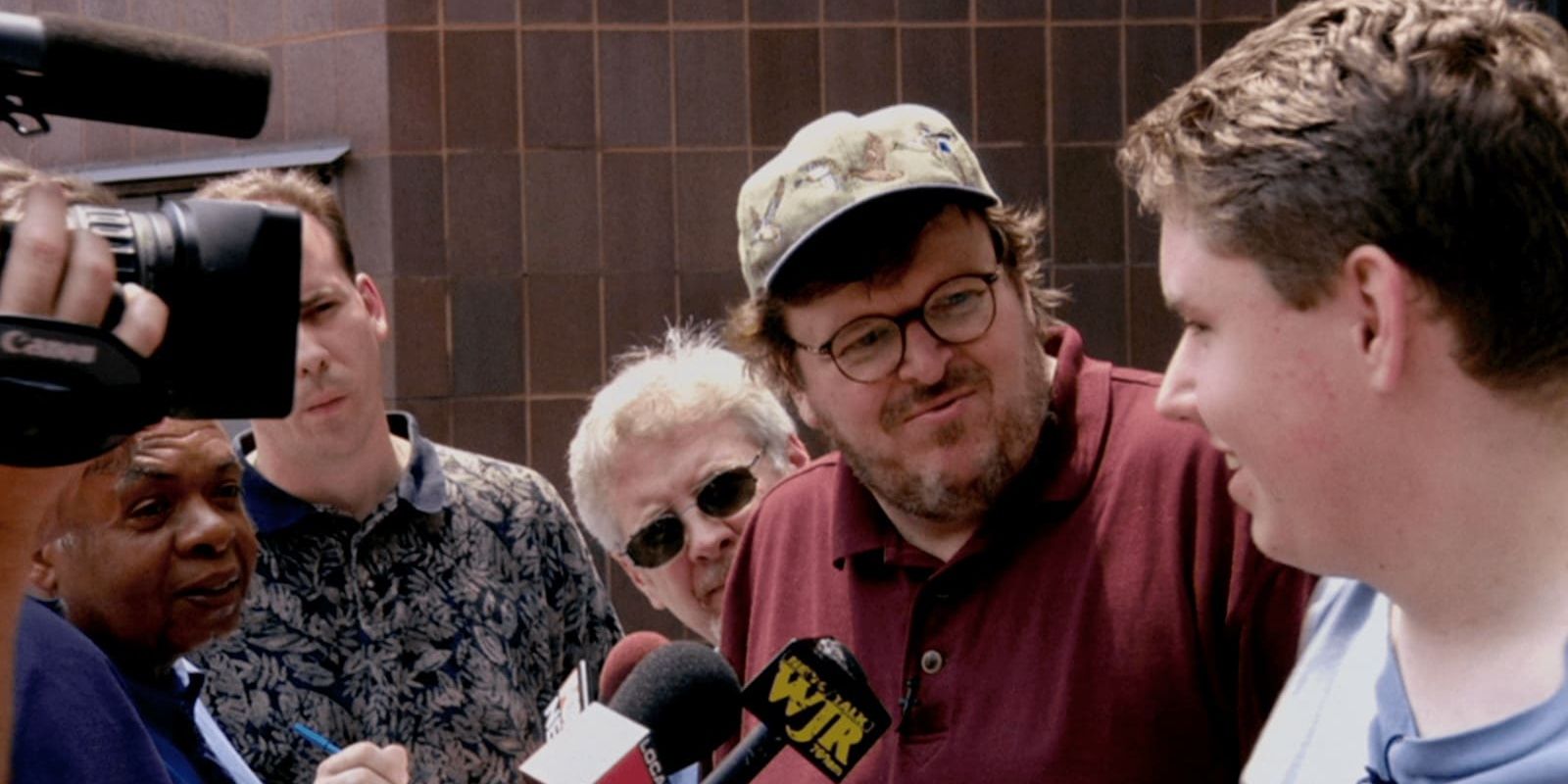
Coming out years before crime documentaries became Netflix's bread and butter, Bowling for Columbine uses a horrific crime spree as a jumping-off point to explore American culture, and its seemingly unending love of firearms. The event it's all framed around is the Columbine High School massacre of 1999, which claimed more than 20 victims.
In one of the best movies of 2002 , Michael Moore made arguably his most passionate and emotional movie with Bowling for Columbine , with the editing and presentation making the arguments put forward quite persuasive. It's in-your-face and uncompromising as a documentary, and it works well as something that clearly wants to start a conversation about a serious topic.
bowling for columbine
Watch on Tubi
29 'Sans Soleil' (1983)
Director: chris marker.
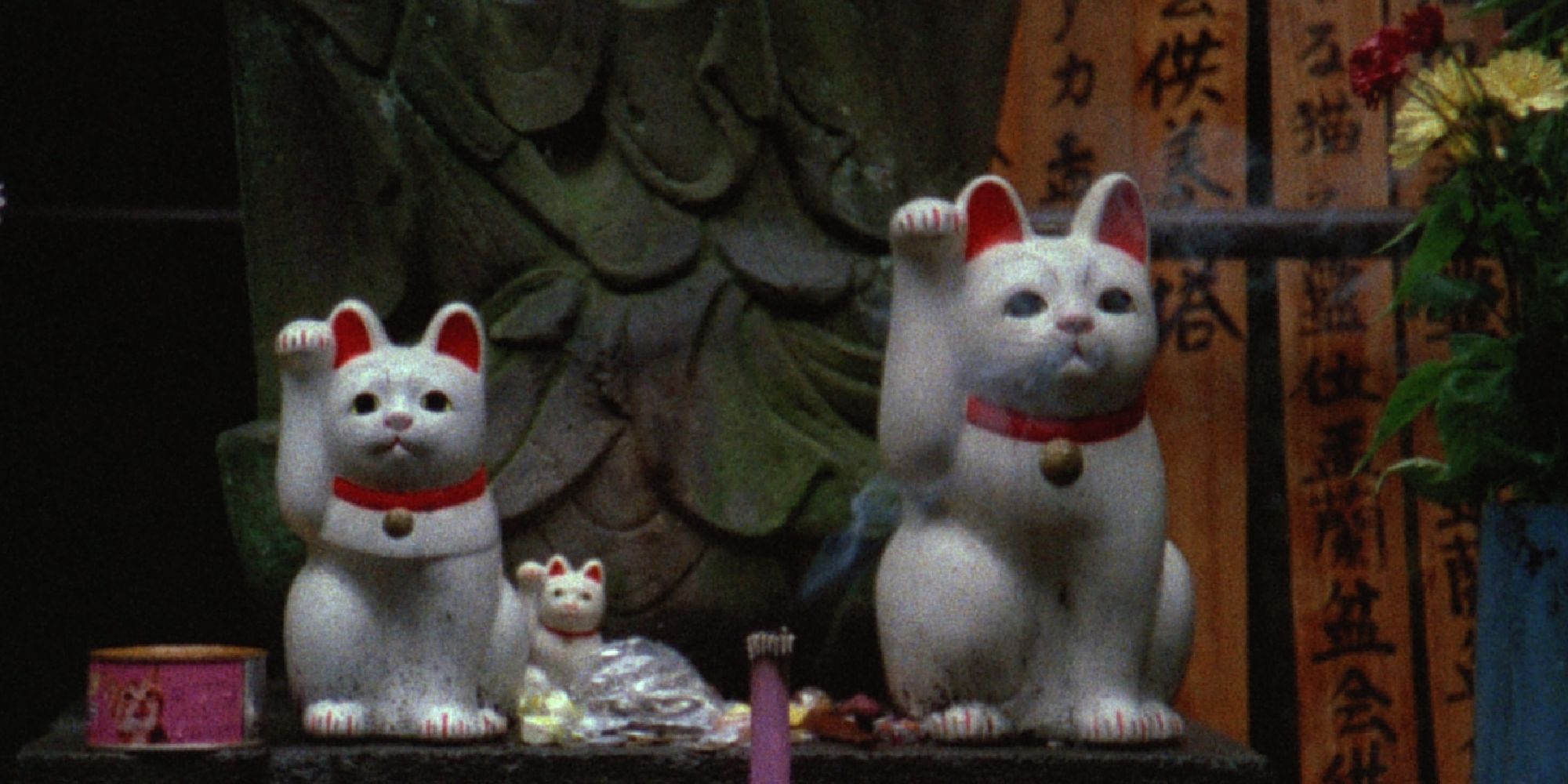
Sans Soleil is a documentary that's hard to summarize, and has a rather experimental approach to the format/genre. It has little by way of narrative or a direct argument that it wants to present, instead being an artistically presented odyssey through a woman's abstract thoughts, often relating to the meaning of life and human existence.
Sans Soleil feels broad and open to interpretation, but it's the kind of thing where someone could watch it and have it fully click , gaining an entirely different understanding than other viewers. This might make Sans Soleil something of an acquired taste, but it's worth at least one watch for those who appreciate unconventional and adventurous documentary movies .
Watch on Criterion
28 '13th' (2016)
Director: ava duvernay.
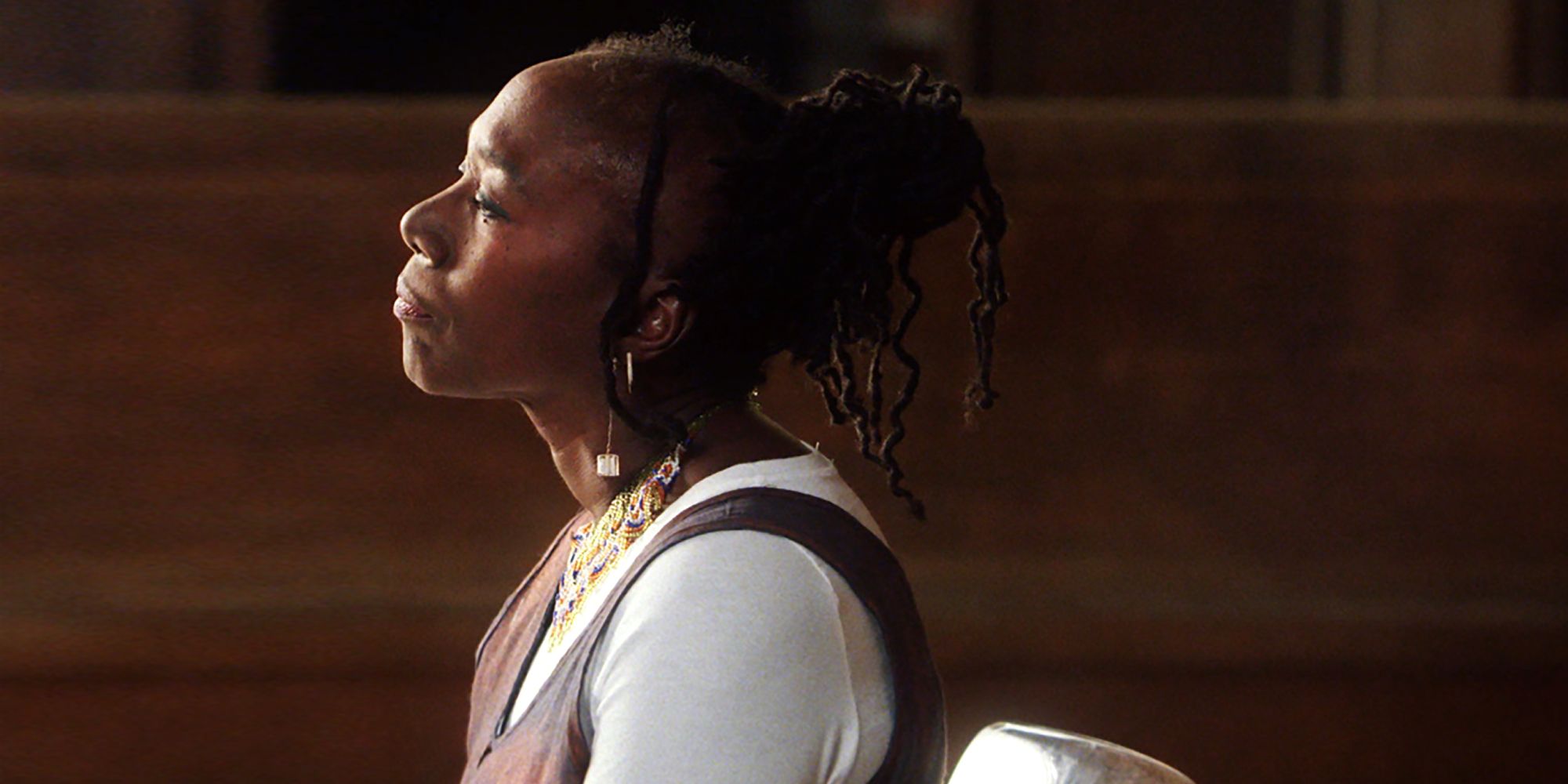
Standing as one of the most important cultural/political documentaries in recent memory, 13th is a difficult yet essential watch. It tackles the U.S. prison system with a particular focus on the racial inequality present within it, tying the way prisons function in modern times to the way slavery functioned back during the nation's earlier days.
It might be a difficult thing for some viewers to hear and grapple with, but 13th is persuasive and remarkably good at presenting the case for this claim. It's all assembled amazingly well, and makes for the kind of film that wants to frustrate, get people thinking, and have viewers reassess what they thought they knew. In these ways, 13th is a resoundingly successful documentary.
Watch on Netflix
27 'Gimme Shelter' (1970)
Directors: albert and david maysles, charlotte zwerin.
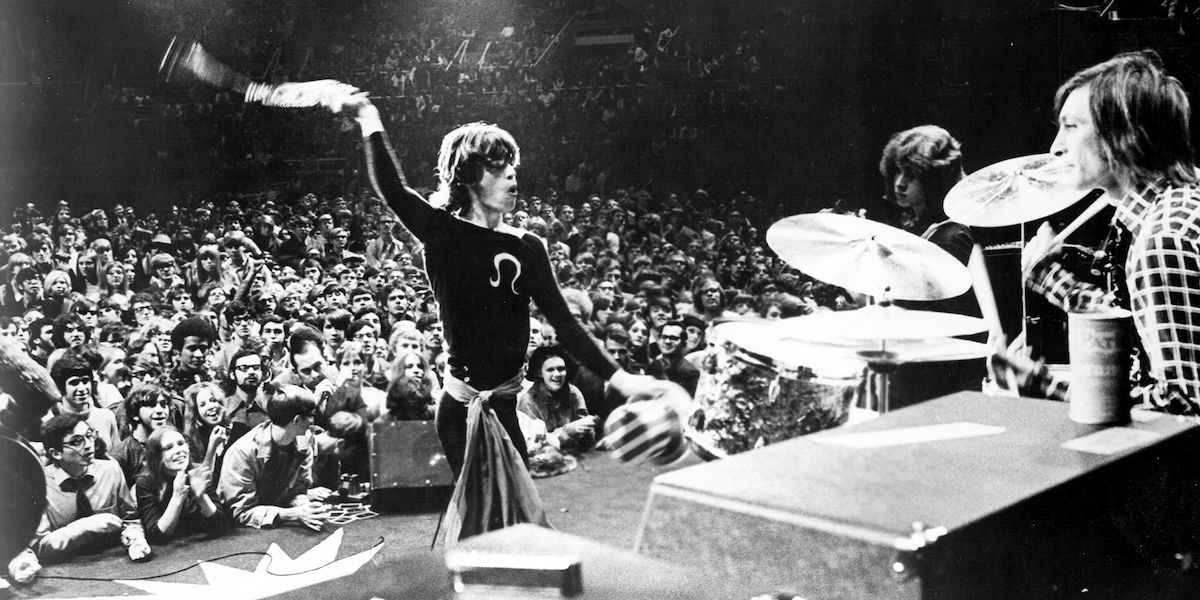
It's no secret that Martin Scorsese loves The Rolling Stones , having directed his own documentary about them and using their songs throughout his films. He seems particularly fond of the song "Gimme Shelter," which is also the name of this 1970 documentary about The Rolling Stones, focusing on one particularly infamous concert they performed in 1969.
Gimme Shelter is one of the few concert movies that could be described as nightmarish , because even if you enjoy some of the music on offer, the stark presentation of a tragic event is ultimately what's most memorable. It's an intense watch that's probably not for everyone, but it certainly stands as one of the most distinct - and harrowing - music documentaries of all time .
Watch on Max
26 'Man on Wire' (2008)
Director: james marsh.
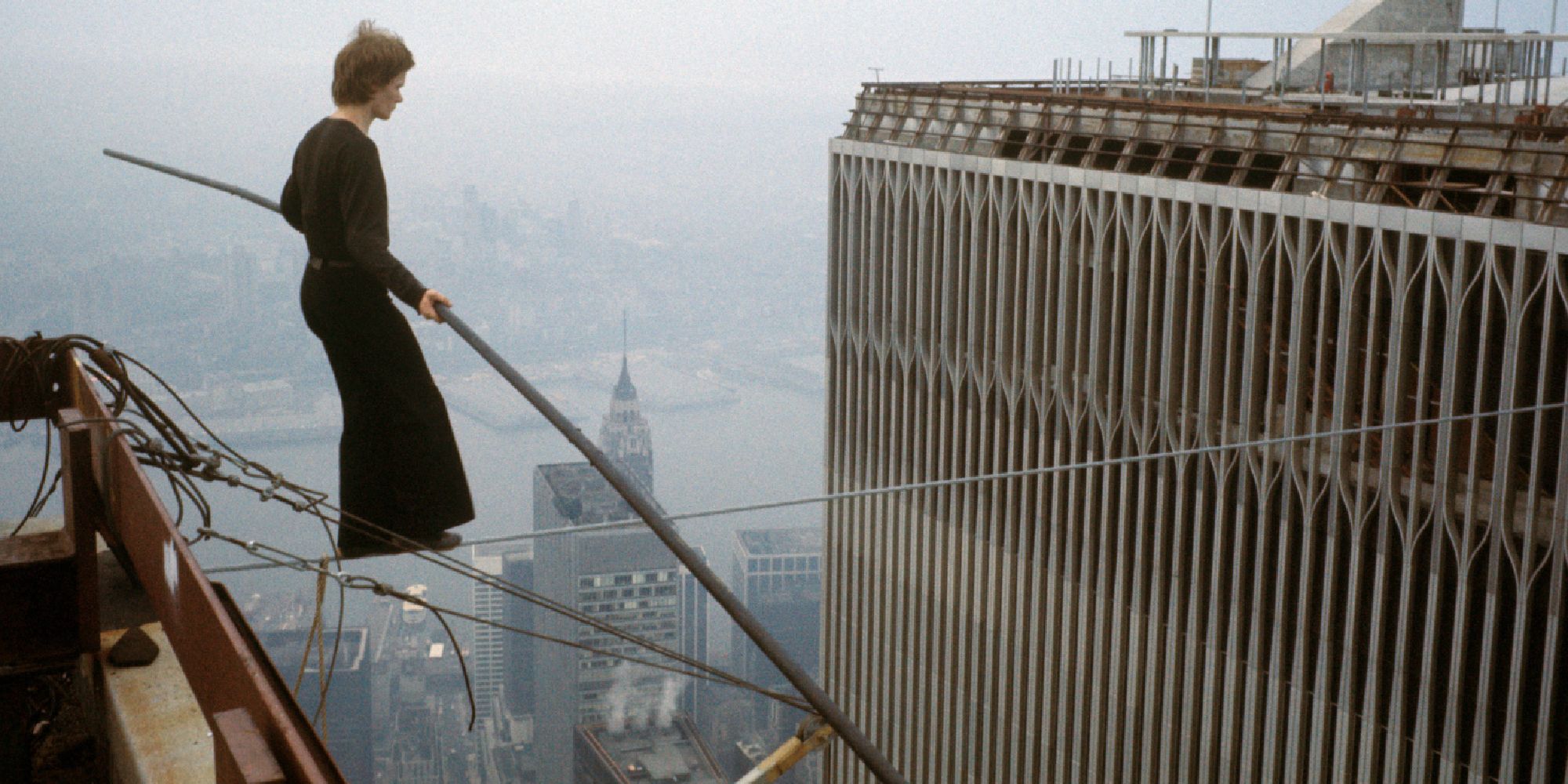
Somehow functioning as both a documentary and a heist movie at the same time, Man on Wire tells a wild true story that was also adapted into a feature film with 2015's The Walk . It's about daredevil/tightrope walker Philippe Petit , and the way he managed to execute a stunt in 1974 that involved walking between the two towers of the World Trade Center, which had then only recently been built.
Man on Wire 's pacing makes it feel more dynamic and thrilling than many other documentaries out there , and some of the footage/photographs captured prove awe-inspiring to look at. It's artistically presented and genuinely exciting, serving as both a psychological exploration of a rather unique man while also celebrating the absolutely wild feat he managed to pull off.
Man on Wire
Watch on Hulu
25 'Grey Gardens' (1975)
Directors: david maysles, albert maysles, ellen hovde, muffie meyer.
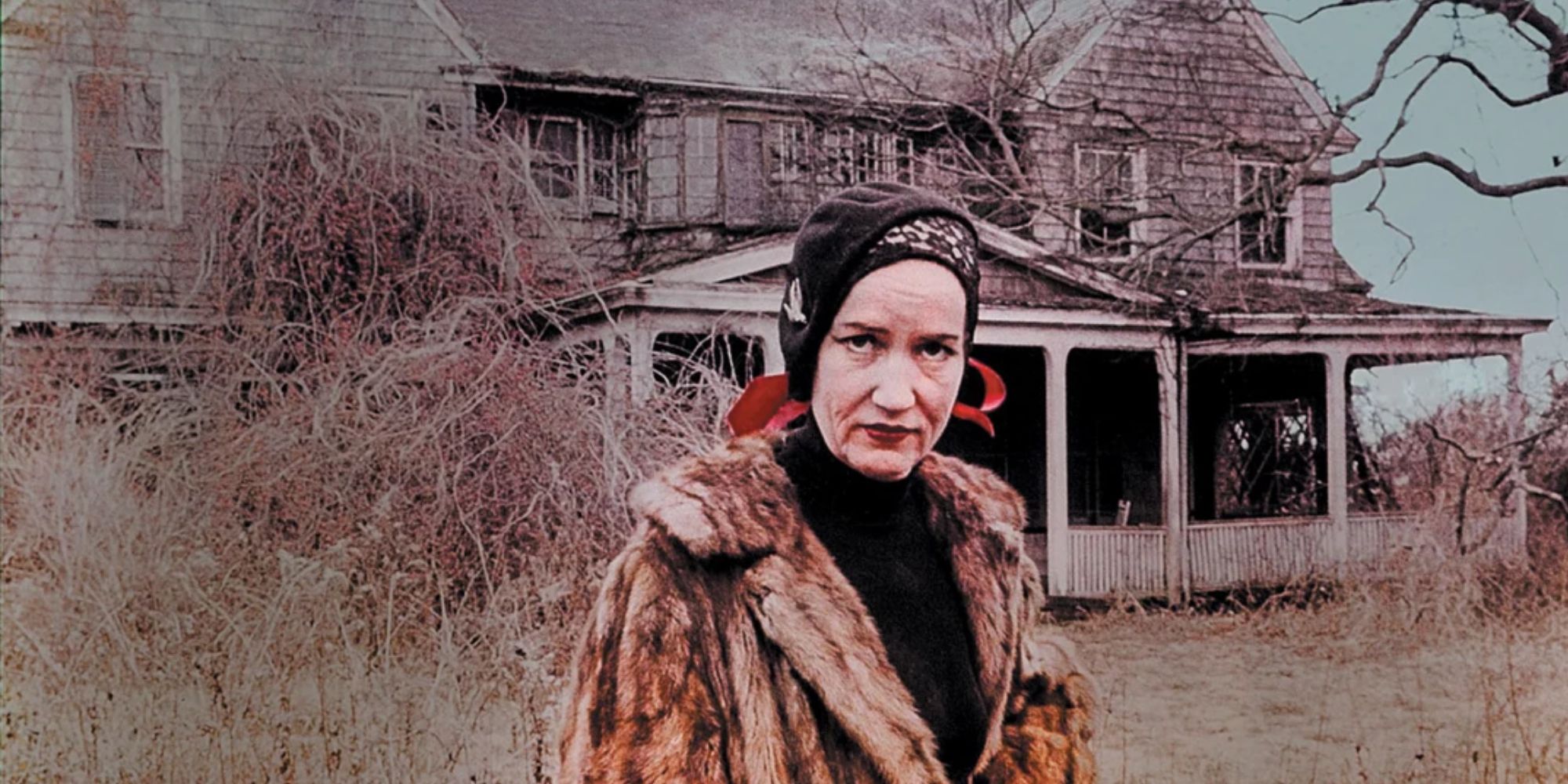
For better or worse, Grey Gardens feels like a proto-reality TV show, arguably leading the way for the genre to exist in all its wild , uncomfortable, and sometimes exploitative glory. This is because Grey Gardens simply observes two real-life people who live strange lives, and may or may not be exaggerating their odd behavior because cameras are present.
The two women at the center of Grey Gardens are relatives of Jackie Kennedy Onassis , and they live in a large yet rundown house, and have very isolated lives. It's an unsettling and uncomfortable film that blurs the line between documentary and drama , but ultimately one that's proven influential within the genre, and a somewhat haunting watch that has resonated with many viewers since its 1975 release.
24 'They Shall Not Grow Old' (2018)
Director: peter jackson.
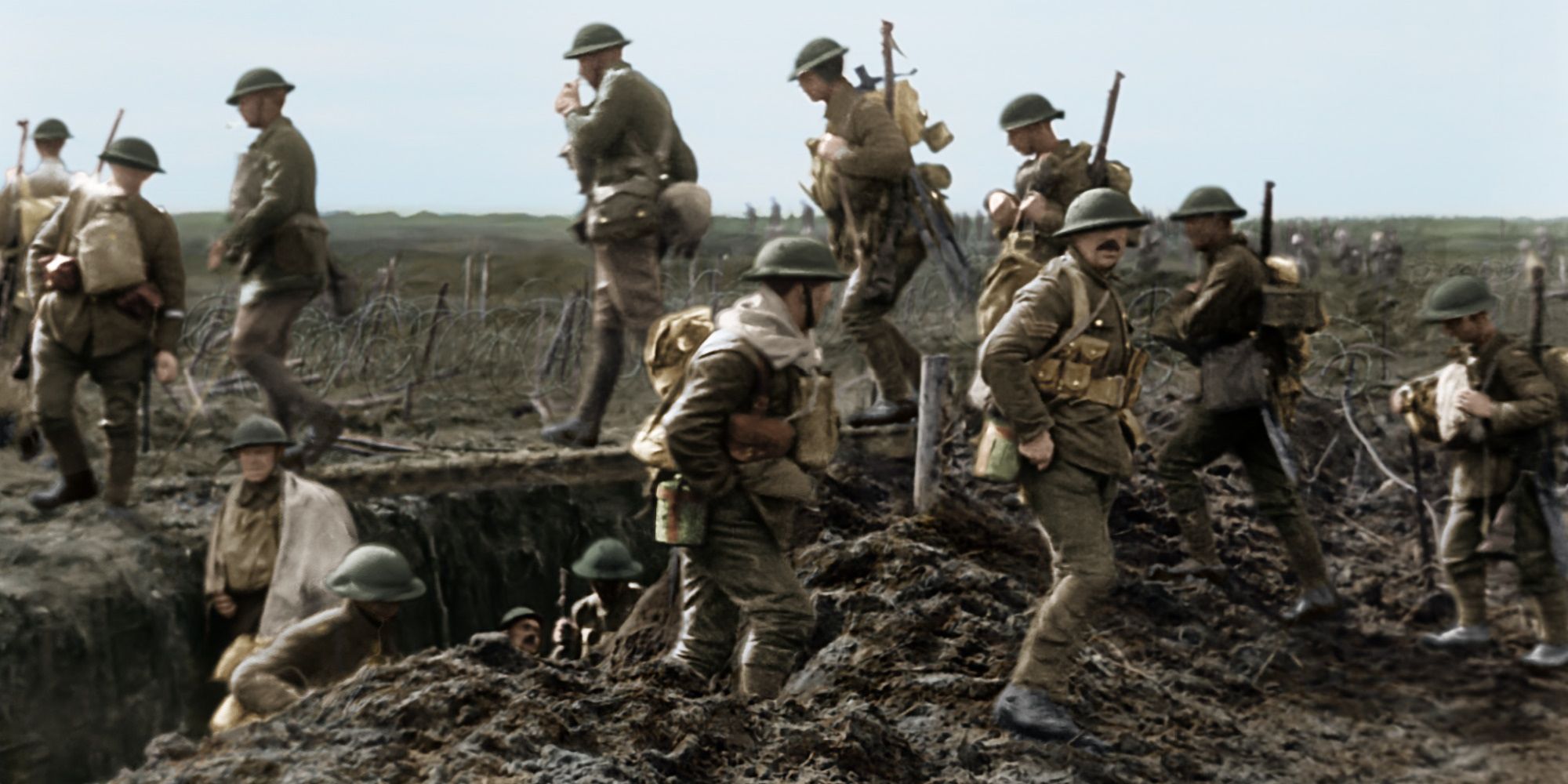
There have been many great films about the First World War , and among them would have to be They Shall Not Grow Old . It was released on the 100th anniversary of the conflict's end, and uses colorized and meticulously restored footage to depict the harrowing experience of trench warfare in a way that's never been shown before in previous WW1 documentaries.
It was an ambitious project directed by Peter Jackson , and though getting the footage to look so striking would have taken a great deal of work, the results speak for themselves. They Shall Not Grow Old isn't an easy watch, but it is an essential one , and recontextualizes a century-old conflict by presenting an emotional and intimately personal look at the horrors of war.
23 'Life of Crime: 1984-2020' (2021)
Director: jon alpert.
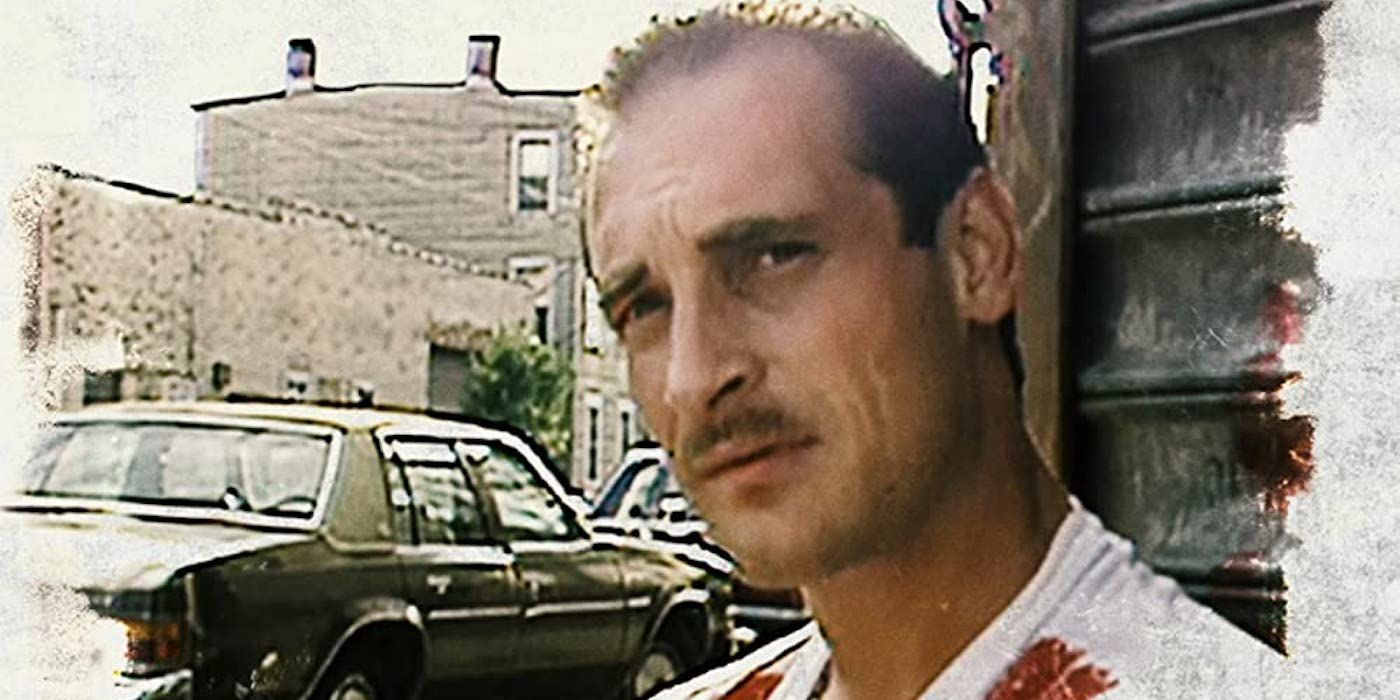
Life of Crime: 1984-2020 may have a bit of a clunky title, but as a film, it's anything but clunky. It's the third and final installment in a series of documentaries that follow several individuals who engage in petty crime and/or struggle with drug addictions, with it all being filmed in an uncompromising and very raw fashion.
This 2021 film spends one hour recapping the first and second documentaries in the series (which covered the 1980s and 1990s respectively) before moving on to what happened to the subjects at its center in the 21st century. Life of Crime: 1984-2020 sheds light on a group of people who've seemingly been forgotten by society, showing their flaws while also being empathetic. It's devastating, proving hard to watch, and maybe even harder to forget.
22 'The Act of Killing' (2012)
Director: joshua oppenheimer.
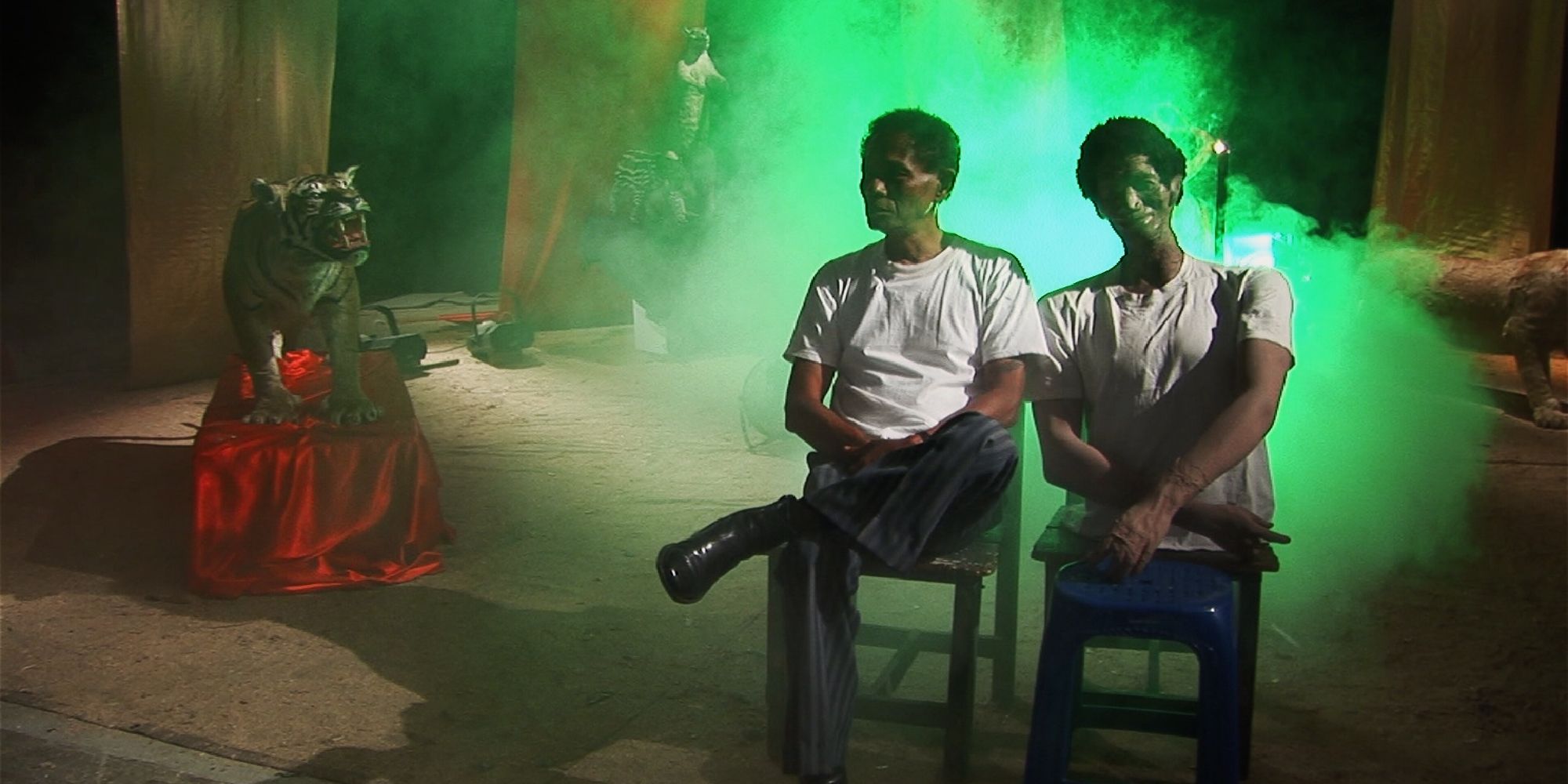
Though The Act of Killing isn't a horror movie by any means, it feels more brutal and terrifying than most could ever hope to be. It covers a difficult subject in a unique yet stomach-churning way, focusing on the Indonesian mass killings of 1965-1966 which saw somewhere between 500,000 and 1 million people being killed (mostly people associated with communism, or believed to be).
It follows various people who participated in these killings more than 40 years on from the events, with the filmmakers getting these individuals to recreate what they did through the guise of "making a film" in the hope they'll realize the brutality of their past actions. The Act of Killing is a daunting look at the dark side of human nature , as well as a terrible period in history that's still in living memory for many people living today.
The Act of Killing
A documentary which challenges former Indonesian death-squad leaders to reenact their mass-killings in whichever cinematic genres they wish, including classic Hollywood crime scenarios and lavish musical numbers.
Watch on Peacock
21 'The Thin Blue Line' (1988)
Director: errol morris.
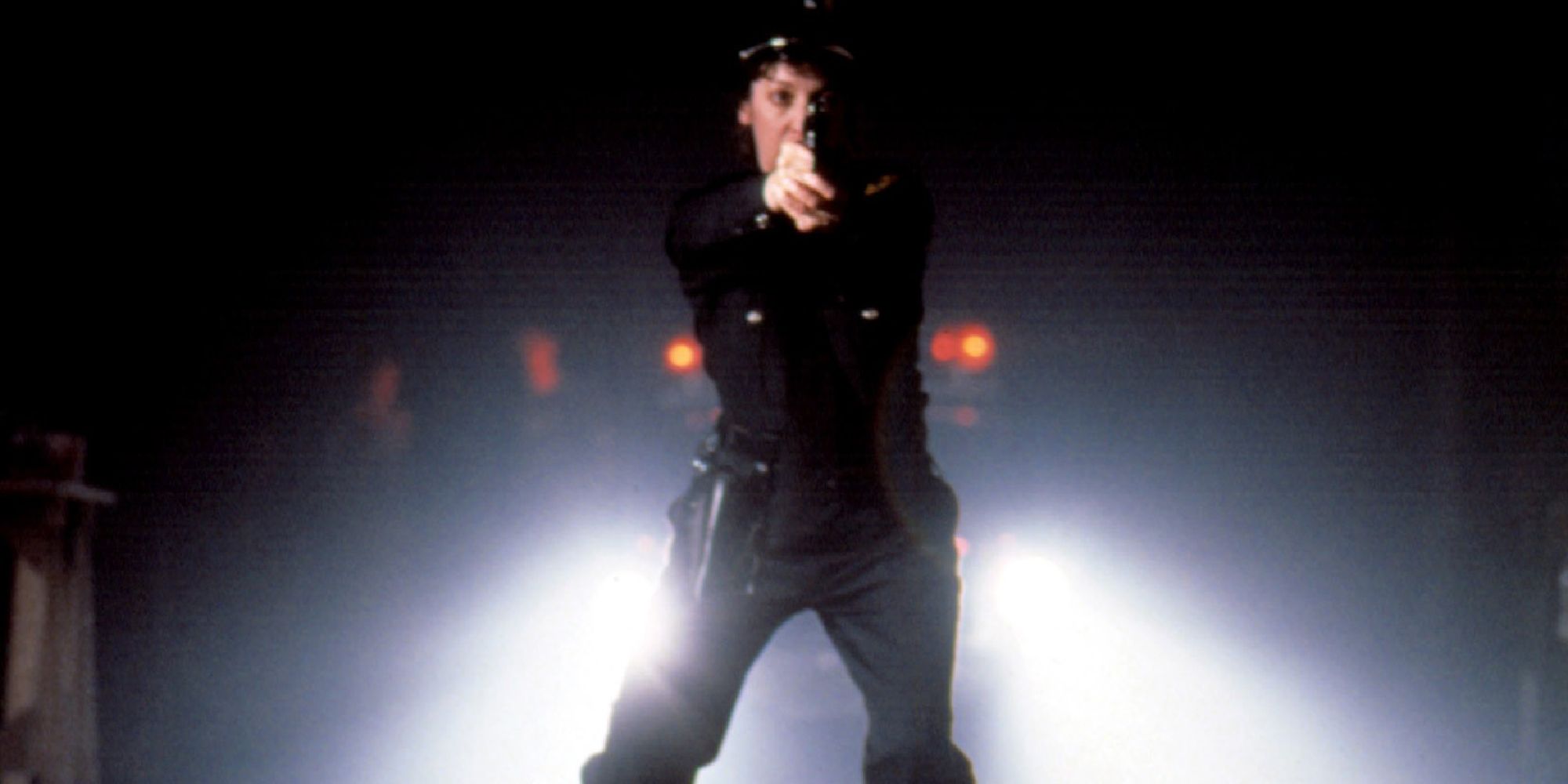
The true crime genre has experienced a boom in the last five to 10 years, and on a streaming service like Netflix in particular, it seems difficult to avoid documentaries about crime. Many documentaries that are definable as true-crime owe a great deal to 1988's The Thin Blue Line , which was revolutionary for documentary filmmaking as a whole.
It follows the investigation surrounding the murder of a police officer in Dallas, criticizing certain aspects of how it was done, and arguing that the primary suspect might not have been as guilty as detectives believed. The Thin Blue Line was influential enough to impact criminal proceedings, ultimately highlighting how powerful a well-argued and intelligently presented documentary can be.
20 'Harlan County, USA' (1976)
Director: barbara kopple.
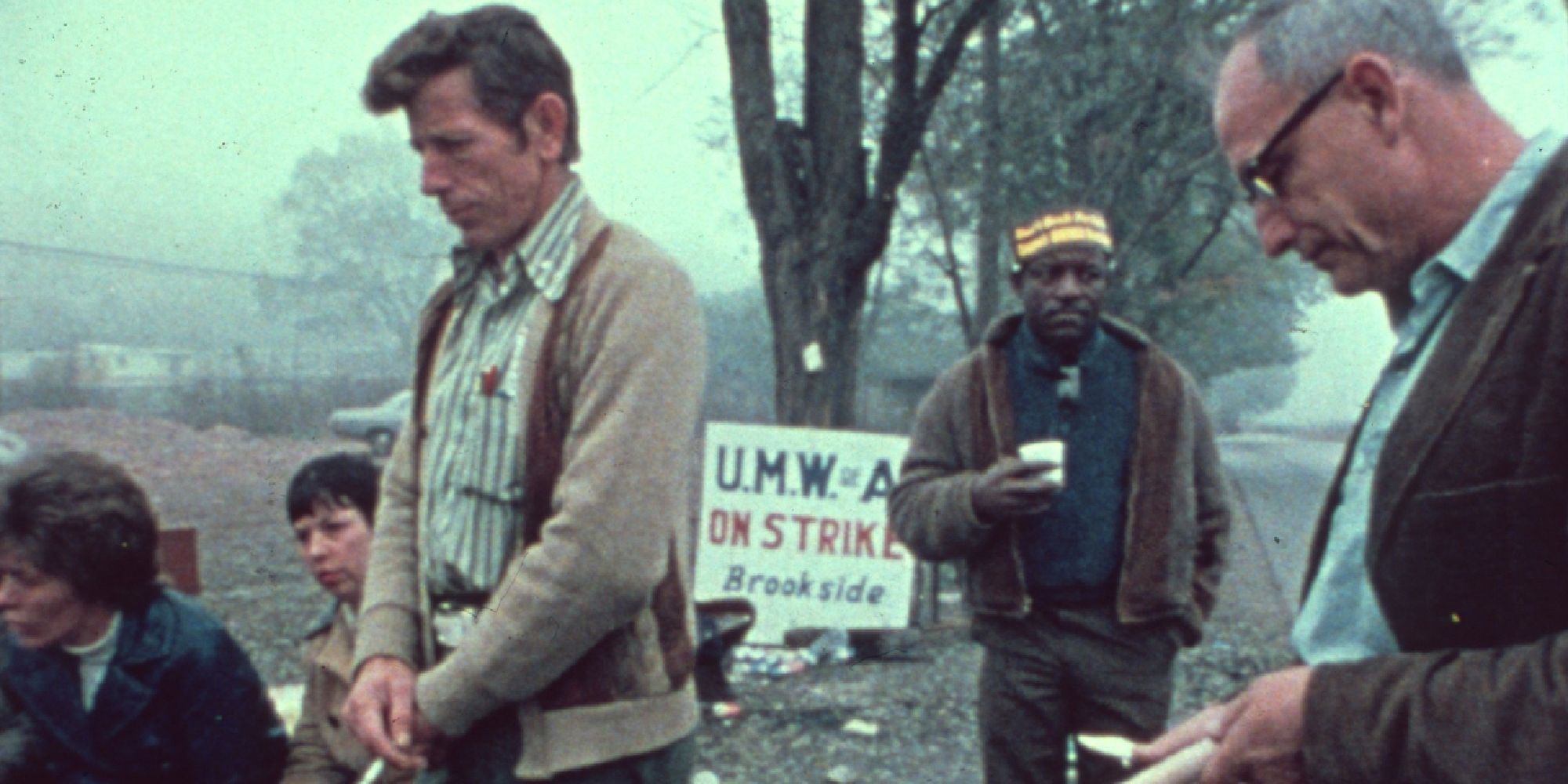
While Harlan County, USA may be almost 50 years old, it remains relevant, and will continue to feel vital for as long as workers don't feel fairly compensated for their work. It focuses on a specific 1973 strike in Harlan County, but the ideas and struggles explored here are relevant to various industries and groups of workers.
The "USA" part of the title could be referring to Harlan County, or it could be read as emphasizing that the sort of conflict here is something felt throughout the USA, back in the 1970s and to this day, too, with the recent Writer's Guild of America strike . The presentation in Harlan County, USA is simple, no-nonsense, and ultimately persuasive, ensuring it stands as a classic - and essential - work of documentary filmmaking.
19 'The Times of Harvey Milk' (1984)
Director: rob epstein.
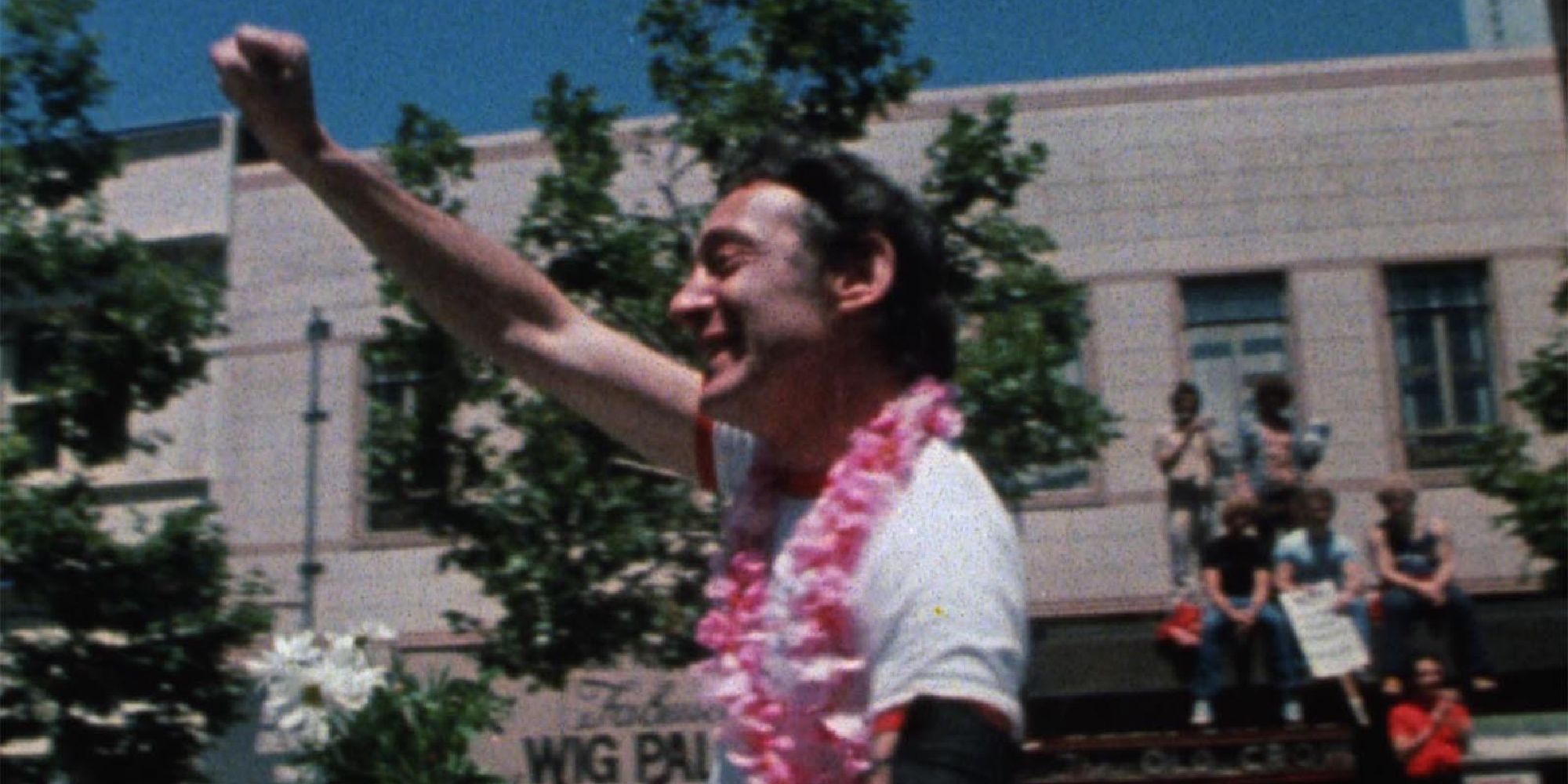
Biographical stories can often be told more powerfully through documentaries than in traditional feature films (though the former isn't likely to earn as many Oscar nominations as the latter). This is demonstrated by 1984's The Times of Harvey Milk , because while the 2008 film Milk covers similar ground and is compelling, seeing it play out in a documentary is even more powerful.
As the title implies, this documentary covers the life and career of Harvey Milk - both cut tragically short by his assassination in 1978. The Times of Harvey Milk aims to celebrate what he accomplished for gay rights in America while mourning his untimely passing , and serves as an emotional and extremely well-presented look at Milk and his life.
18 'Free Solo' (2018)
Directors: jimmy chin, elizabeth chai vasarhelyi.
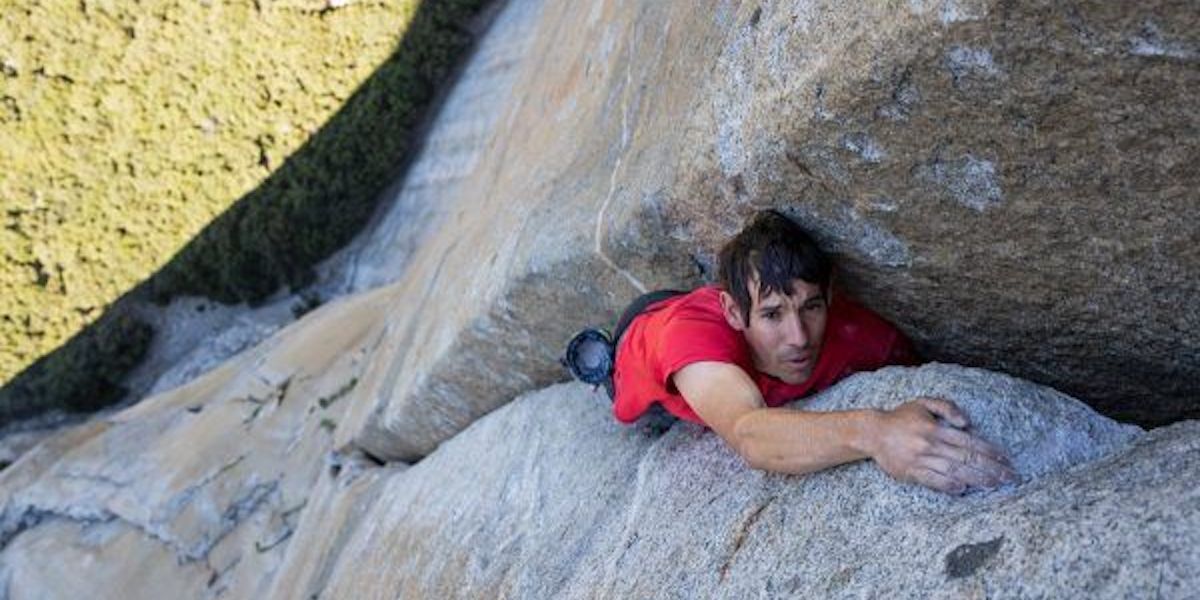
Viewers with acrophobia should stay well away from Free Solo , because it can be genuinely hard to watch for anyone who has even a slight fear of heights. It follows Alex Honnold as he attempts to climb a 3000-foot-high rock face by himself, and without the safeguards of ropes or safety gear.
As far as "man versus nature" documentary movies go, this is easily one of the greatest of all time, and in a way, ends up being more heart-racing than the vast majority of blockbuster thrillers out there (even the great ones). As far as adrenaline-rush documentaries go, few can compete with what Free Solo pulls off.
Alex Honnold faces the biggest challenge of his career, climbing El Capitan in Yosemite National Park. He pursues it Free Solo, which means climbing without a rope and alone.
Watch on Disney+
17 'American Movie' (1999)
Director: chris smith.
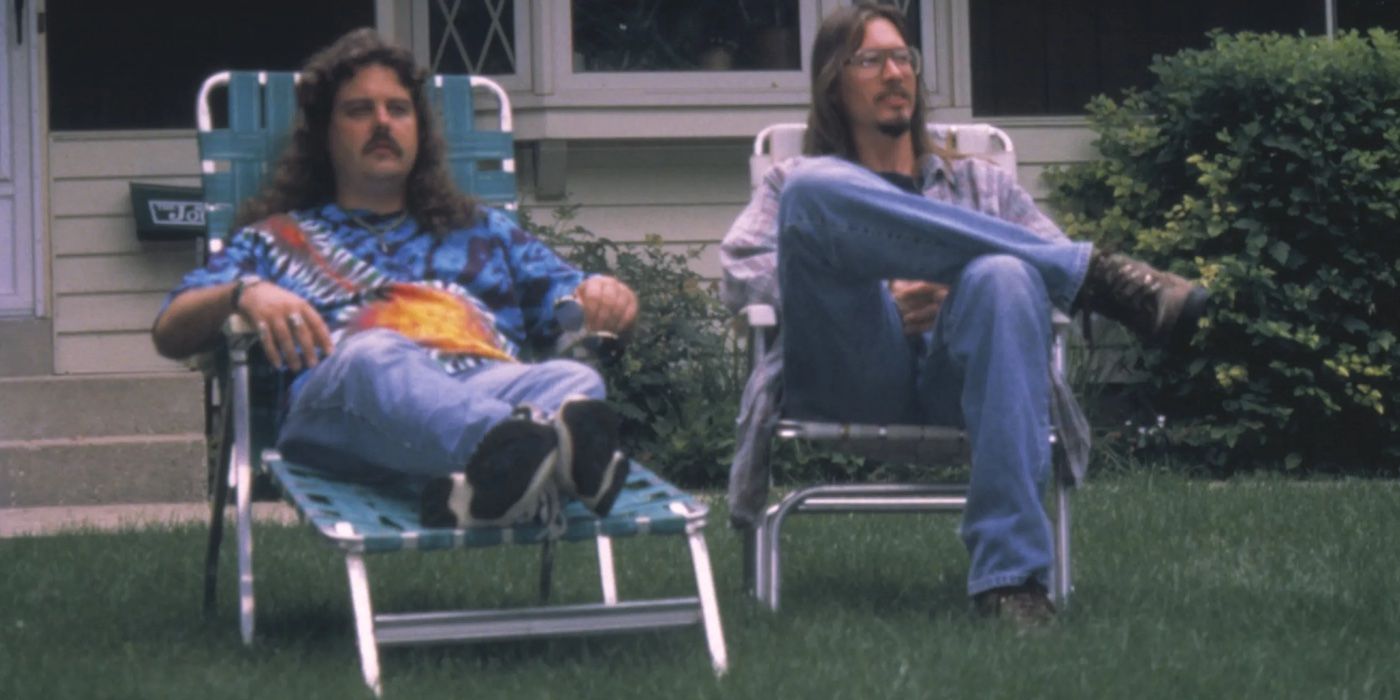
A heartwarming and funny documentary , American Movie is one of the essential documentaries about the filmmaking process of the last few decades . It centers on independent filmmaker Mark Borchardt and his attempts to complete his movie, an unusual horror film about addiction and demonic cults called Coven .
It's one of those films that's likely to hit home for anyone who's undertaken a daunting creative project before, or even those who've ever dreamed of fulfilling their creative desires. It celebrates art - no matter the budget or the technical qualities - and even for non-creatives, is likely to provide plenty of entertainment value thanks to its humor and down-to-earth charms.
Rent on Apple TV
16 'Hearts of Darkness: A Filmmaker's Apocalypse' (1991)
Directors: eleanor coppola, fax bahr, george hickenlooper.
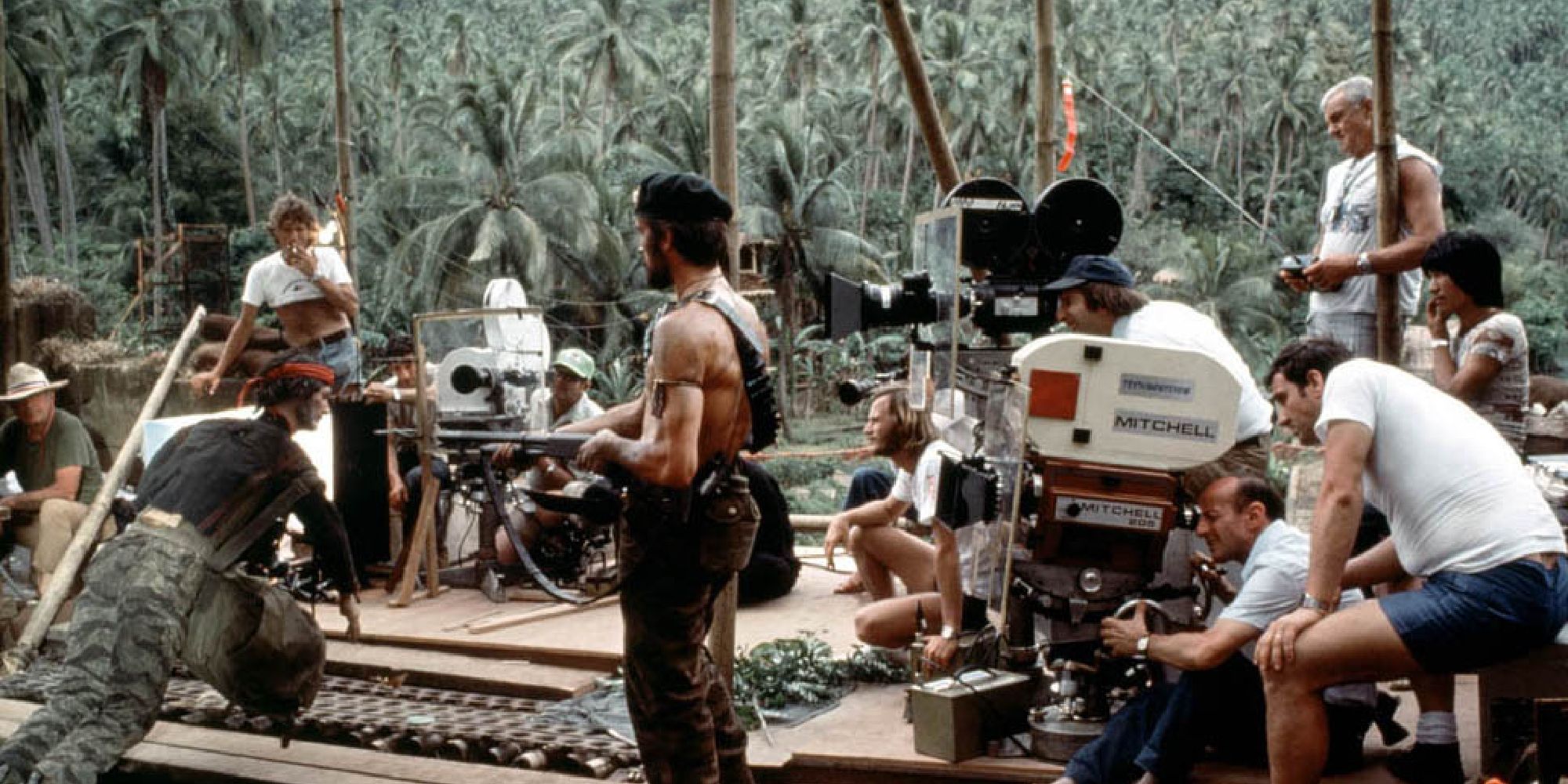
While American Movie shows the struggles of independent filmmaking, Hearts of Darkness: A Filmmaker’s Apocalypse - released at the other end of the 1990s - looks at the struggles of big-budget filmmaking. It follows the infamous production of Apocalypse Now , a film that ended up being a classic, but was plagued with just about every problem under the sun before release.
For as harrowing as the psychologically tense and violent war film is, Hearts of Darkness makes the fight to get the film made look equally brutal and mentally devastating . Francis Ford Coppola and the rest of the cast and crew went to hell and back to make one of the greatest films of the 1970s, and this documentary captures that nightmarish production in stark, eye-opening detail.
Hearts of Darkness: A Filmmaker's Apocalypse
15 'the beaches of agnès' (2008), director: agnès varda.
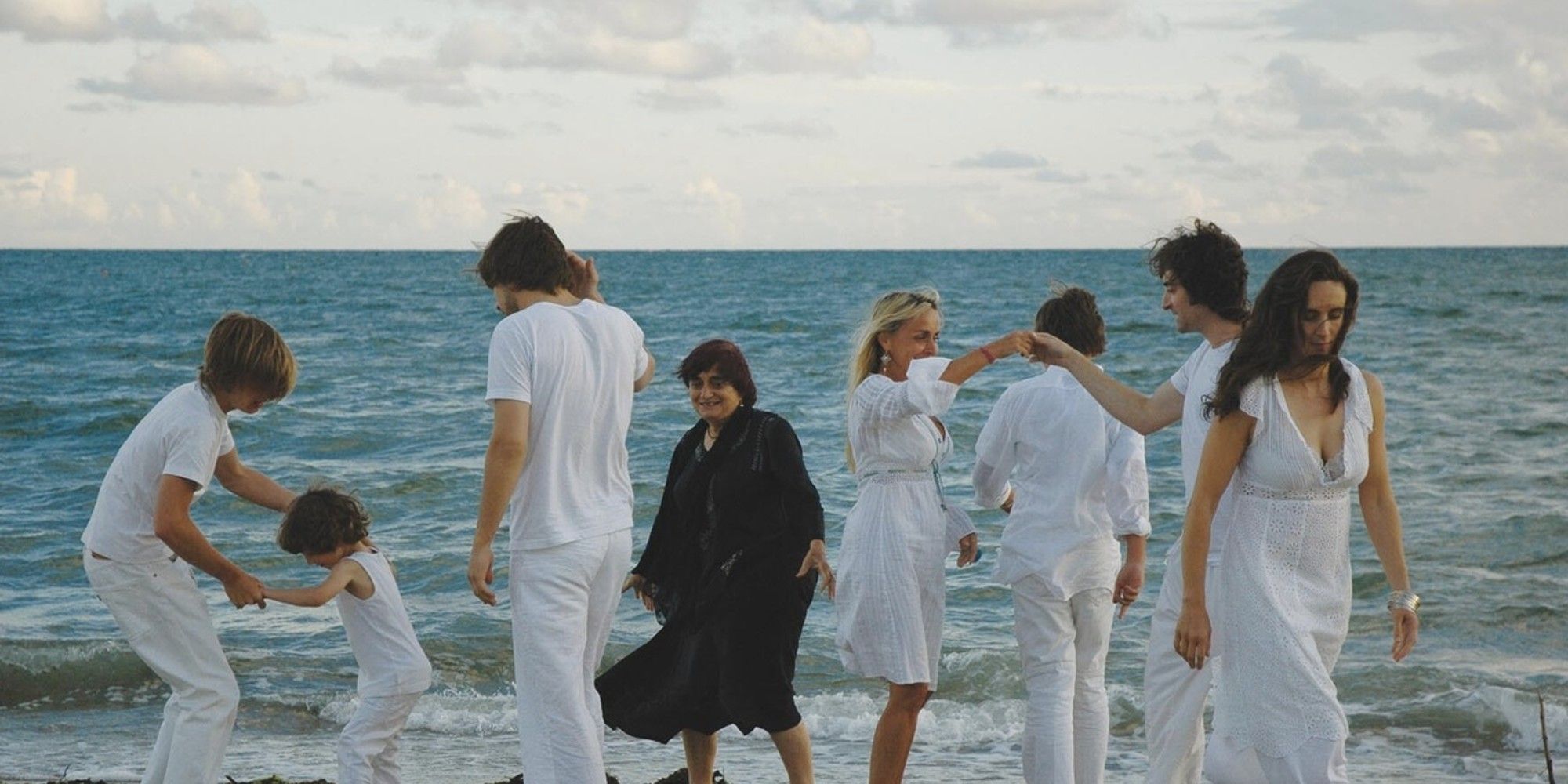
Agnès Varda was one of the greatest and most creative French filmmakers of all time. She was known for both her feature films and her documentary work, and while titles like Cléo from 5 to 7 and Vagabond are her best-known when it comes to the former, 2008's The Beaches of Agnès is probably her greatest achievement for the latter.
It plays out like a visual autobiography, with Varda reflecting on her youth, her filmmaking career, and her relationship with fellow French filmmaker Jacques Demy . The Beaches of Agnès is touching, entertaining, visually dazzling, and thought-provoking , all thanks to Varda's unique outlook on life, and could serve as a good introduction to the filmmaker's immense body of work.
14 'Man with a Movie Camera' (1929)
Director: dziga vertov.
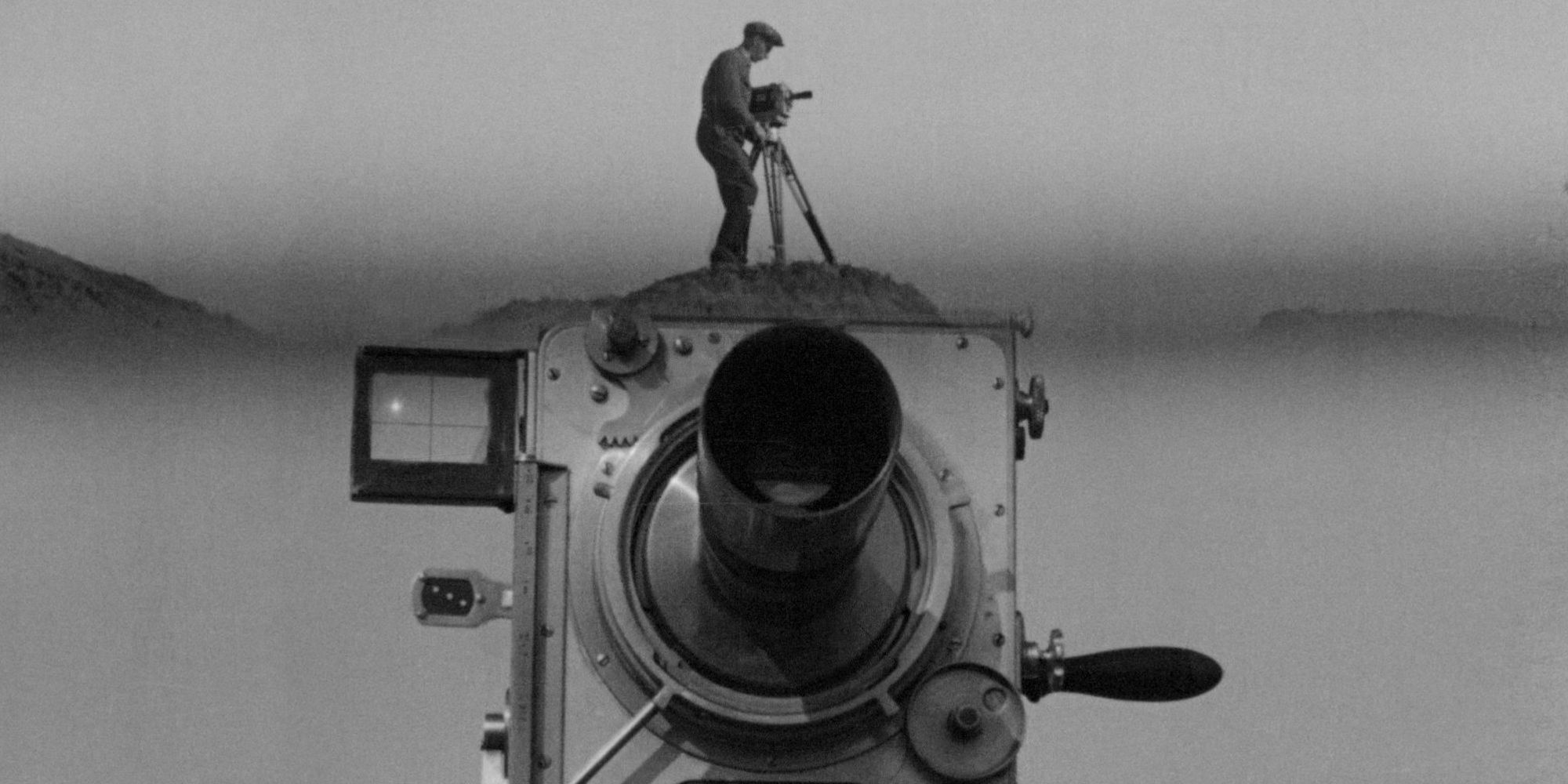
Without Man with a Movie Camera , the entire documentary format may look entirely different today. It's likely one of the most important and influential documentaries of all time, using inventive visuals and creative editing techniques to show how life was in the Soviet Union during the 1920s.
Beyond that premise, there isn't really a whole to this silent film. Yet the style is what makes it dazzling and engaging to this day, and even if it doesn't grab all modern viewers, surely everyone can recognize its significance for the documentary format as a whole. At only 68 minutes long, documentary fans don't exactly have an excuse not to at least give it a shot.
Watch on Vudu
13 'Woodstock' (1970)
Director: michael wadleigh.
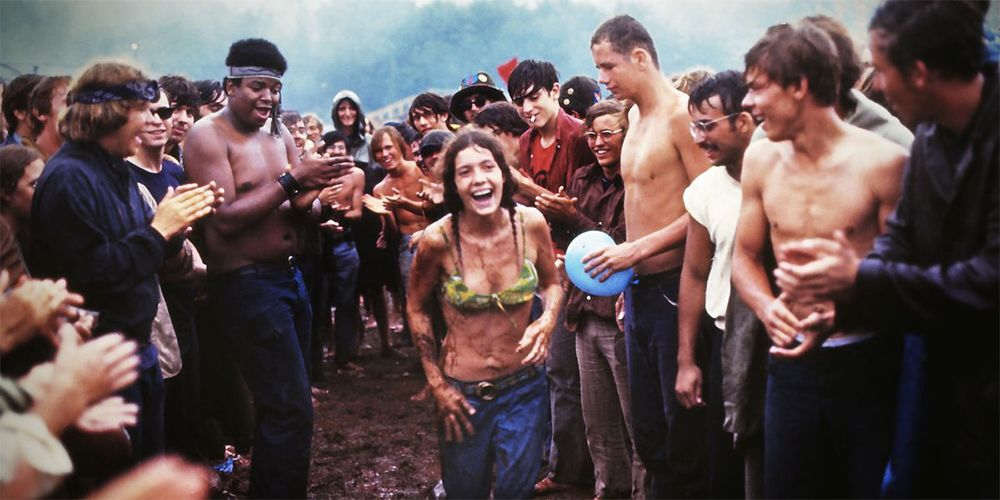
Woodstock is far from the only iconic concert film (more on those below), but it covers what many would argue was the most significant live music event of all time. That was 1969's Woodstock Music & Art Festival, an event that went for three days, saw 32 different musical acts perform, and was attended by more than 400,000 people.
A huge film is needed to capture such a large-scale event, and Woodstock is more than up to the task. The theatrical cut runs for over three hours, and a director's cut runs for almost four, with it capturing some iconic live music (including performances by Jimi Hendrix , Janis Joplin , and The Who ) as well as documenting what the festival was like for those attending, and the ways organizers dealt with certain issues that came about while the festival was underway.
12 'Stop Making Sense' (1984)
Director: jonathan demme.
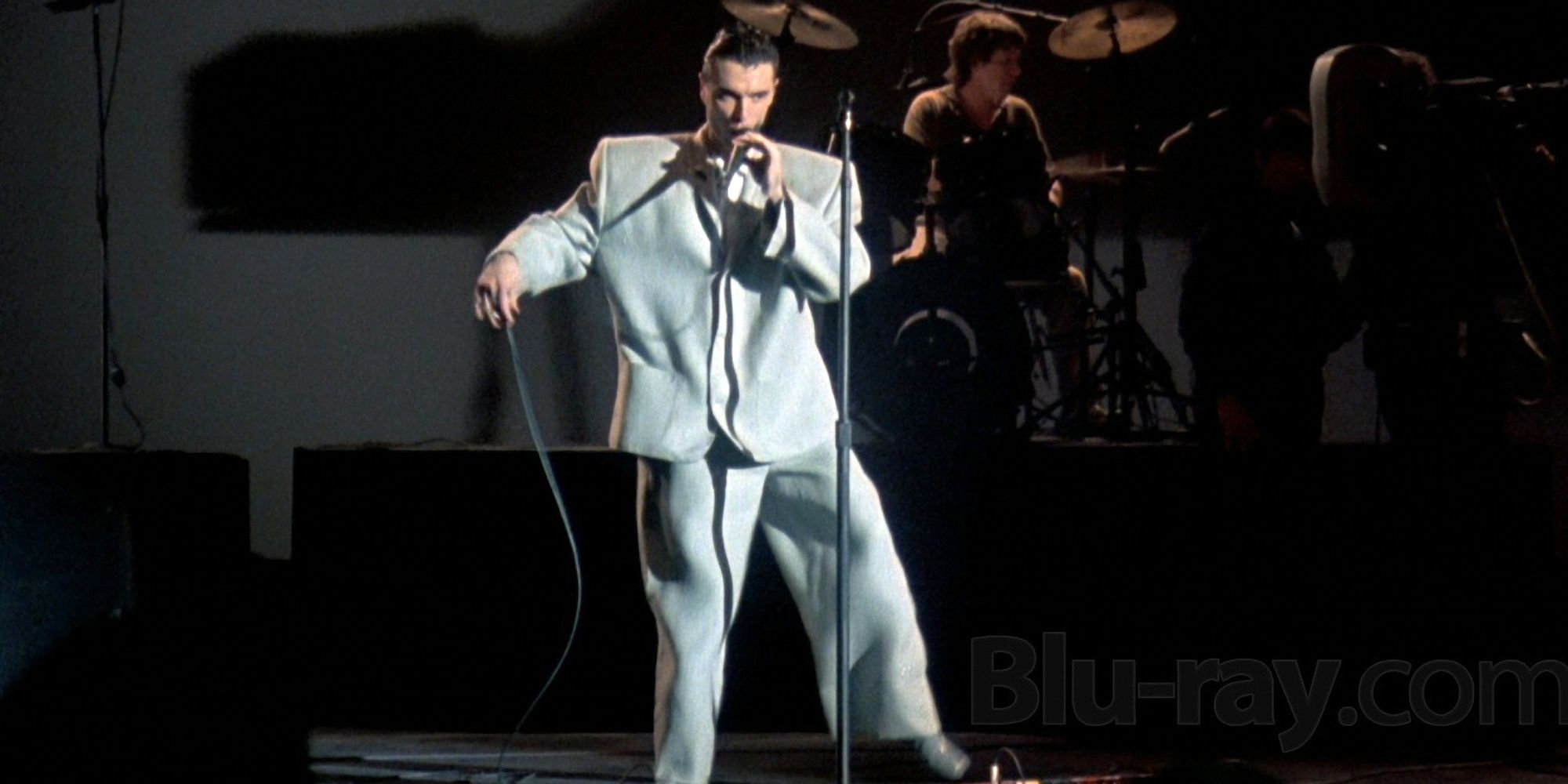
Stop Making Sense isn't just one of the best films of 1984 ; it's right up there as one of the best concert films of all time. It documents new wave band Talking Heads at their creative and commercial peak, going through an excellent tracklist over 88 glorious, upbeat, entertaining minutes.
There isn't much of a message or story here, of course, but the way it's shot, edited, and paced is certainly more intricate than most concert films. Stop Making Sense is the gold standard for how music documentaries about concerts should look and feel , and an essential watch, regardless of whether you're a big Talking Heads fan.
Watch in Cinemas
11 'Paris Is Burning' (1990)
Director: jennie livingston.
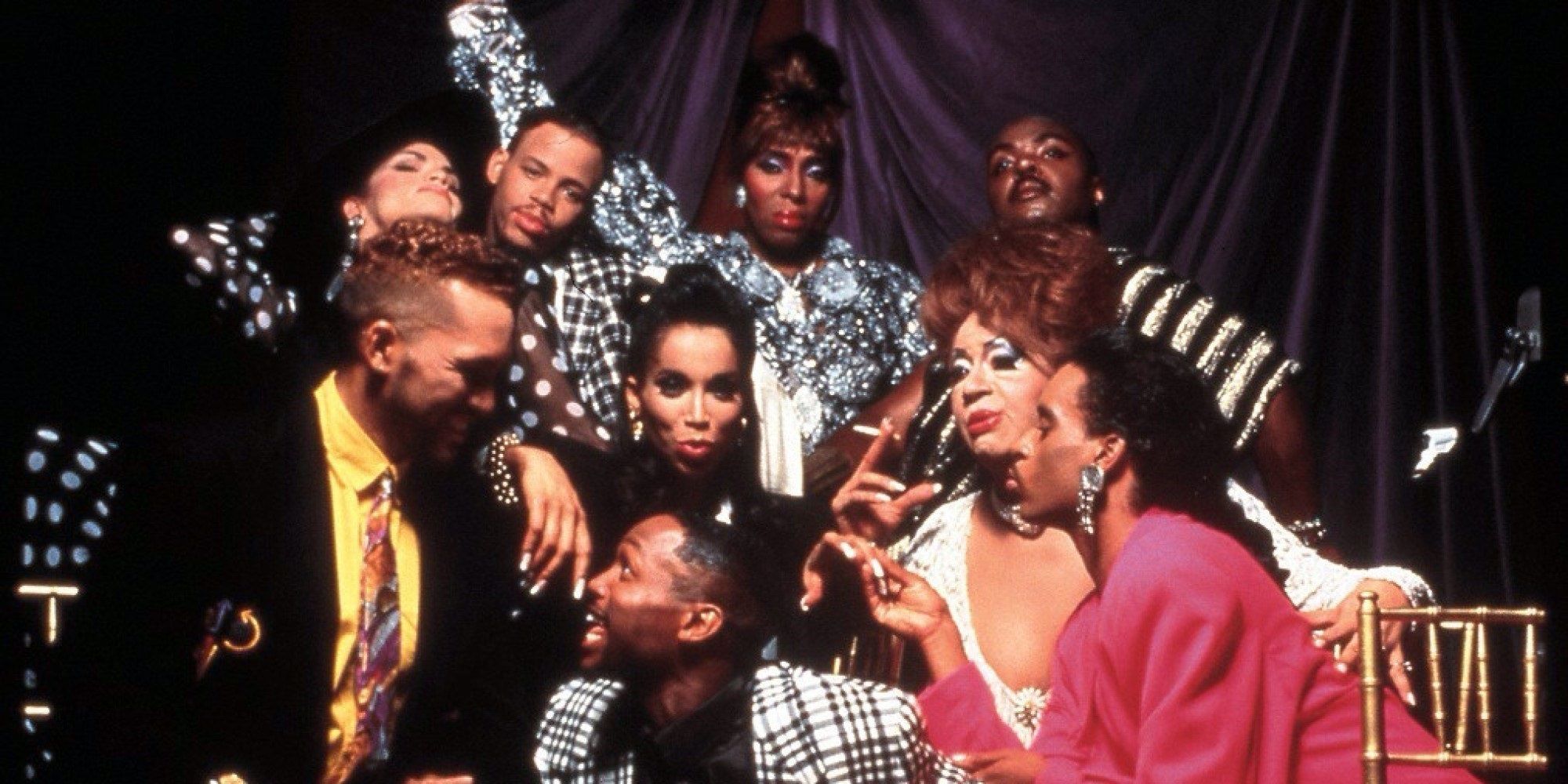
Despite only running for about 70 minutes, Paris Is Burning covers many years, focusing on the New York drag scene throughout much of the 1980s. It looks at a subculture that was likely underground and unseen for many people during that time, and gives those who belong to it a chance in the spotlight.
Paris Is Burning holds up as one of the most important documentaries of the 1990s, and one that is still relevant today , even if these sorts of subcultures are a little more well-known today. It shows the power that documentary films have when it comes to raising awareness for different people and groups, and for doing so here with an LGBTQ subculture, Paris Is Burning is a landmark.
- Election 2024
- Entertainment
- Newsletters
- Photography
- Personal Finance
- AP Investigations
- AP Buyline Personal Finance
- AP Buyline Shopping
- Press Releases
- Israel-Hamas War
- Russia-Ukraine War
- Global elections
- Asia Pacific
- Latin America
- Middle East
- Election Results
- Delegate Tracker
- AP & Elections
- Auto Racing
- 2024 Paris Olympic Games
- Movie reviews
- Book reviews
- Personal finance
- Financial Markets
- Business Highlights
- Financial wellness
- Artificial Intelligence
- Social Media
‘Game of Thrones’ creator and other authors sue ChatGPT-maker OpenAI for copyright infringement
Author John Grisham appears at the opening night of “A Time To Kill” on Broadway in New York on Oct. 20, 2013, left, and author R.R. Martin appears in Toronto on March 12, 2012. Grisham and Martin are among 17 authors suing OpenAI for “systematic theft on a mass scale.” Their suit was filed Tuesday in New York and is the latest in a wave of legal action by writers concerned that AI programs are using their copyrighted works without permission. (AP Photo)
- Copy Link copied
NEW YORK (AP) — John Grisham, Jodi Picoult and George R.R. Martin are among 17 authors suing OpenAI for “systematic theft on a mass scale,” the latest in a wave of legal action by writers concerned that artificial intelligence programs are using their copyrighted works without permission.
In papers filed Tuesday in federal court in New York, the authors alleged “flagrant and harmful infringements of plaintiffs’ registered copyrights” and called the ChatGPT program a “massive commercial enterprise” that is reliant upon “systematic theft on a mass scale.”
The suit was organized by the Authors Guild and also includes David Baldacci, Sylvia Day, Jonathan Franzen and Elin Hilderbrand among others.
“It is imperative that we stop this theft in its tracks or we will destroy our incredible literary culture, which feeds many other creative industries in the U.S.,” Authors Guild CEO Mary Rasenberger said in a statement. “Great books are generally written by those who spend their careers and, indeed, their lives, learning and perfecting their crafts. To preserve our literature, authors must have the ability to control if and how their works are used by generative AI.”
The lawsuit cites specific ChatGPT searches for each author, such as one for Martin that alleges the program generated “an infringing, unauthorized, and detailed outline for a prequel” to “A Game of Thrones” that was titled “A Dawn of Direwolves” and used “the same characters from Martin’s existing books in the series “A Song of Ice and Fire.”
In a statement Wednesday, an OpenAI spokesperson said that the company respects “the rights of writers and authors, and believe they should benefit from AI technology.
“We’re having productive conversations with many creators around the world, including the Authors Guild, and have been working cooperatively to understand and discuss their concerns about AI. We’re optimistic we will continue to find mutually beneficial ways to work together to help people utilize new technology in a rich content ecosystem,” the statement reads.
Earlier this month, a handful of authors that included Michael Chabon and David Henry Hwang sued OpenAI in San Francisco for “clear infringement of intellectual property.”
In August, OpenAI asked a federal judge in California to dismiss two similar lawsuits, one involving comedian Sarah Silverman and another from author Paul Tremblay. In a court filing, OpenAI said the claims “misconceive the scope of copyright, failing to take into account the limitations and exceptions (including fair use) that properly leave room for innovations like the large language models now at the forefront of artificial intelligence.”
Author objections to AI have helped lead Amazon.com, the country’s largest book retailer, to change its policies on e-books. The online giant is now asking writers who want to publish through its Kindle Direct Program to notify Amazon in advance that they are including AI-generated material. Amazon is also limiting authors to three new self-published books on Kindle Direct per day, an effort to restrict the proliferation of AI texts.

IMAGES
VIDEO
COMMENTS
In your essay, write about what you look for in a "good" movie in terms of plot, characters, dialogue, or anything else. You need not go too in-depth but explain your answers adequately. In your opinion, you can use your favorite movie as an example by writing about the key characteristics that make it a great movie. 5. The Evolution of Movies
Here's a step-by-step guide to help you with an essay service: 1. Watch the Movie. This is the obvious starting point, but surprisingly many students skip this step. It doesn't matter if you've watched the movie twice before. If you're asked to write an essay about it, you need to watch it again.
Here are top tips by experts when writing an essay about a particular movie during your assignments: 1. Watch the Movie. The first obvious standpoint for writing an essay about any movie is watching the film. Watching the movie builds an important foundation for the writing exercise. Composing an insightful, compelling, and well-thought movie ...
1. Take notes. The first step is to take notes while watching the movie. It will help you remember important details that you can use in your essay. For example, you can write down the names of the main characters, the setting of the story, and the most important events. It may seem frivolous, but you won't make a good impression if you ...
The film's first establishing shots set the action in a busy modern office. A woman sits at a computer, absorbed in her screen. The camera looks at her through a glass wall, one of many in the shot. The reflections of passersby reflected in the glass and the workspace's dim blue light make it difficult to determine how many rooms are depicted.
📽️ Movie Analysis Format. To write an effective film analysis essay, it is important to follow specific format requirements that include the following: Standard essay structure. Just as with any essay, your analysis should consist of an introduction with a strong thesis statement, body paragraphs, and a conclusion.
The Godfather film analysis essay. An epic crime film, The Godfather, allows you to analyze the themes of power and corruption, the portrayal of family dynamics, and the influence of Italian neorealism on the film's aesthetic. You can also examine the movie's historical context and impact on future crime dramas.
A remarkable aspect of a good film review is that it doesn't just rate the movie but provides explicit views that form the critique's basis. This form of writing, like crafting essays, research papers, and term papers, should be insightful and draw the reader in quickly. It's important to discuss the reputation of the lead actors and directors ...
Watch the movie. Then watch it again. Take notes during the first viewing and, if you are analyzing a movie that is available on DVD, be ready with your remote control to pause and rewind. Step 2. Critically engage the movie so that you can effectively produce a strong essay. Focus on a single thematic concept related to the film.
It may surprise you to note that it is much more than 35% of your grade. In actuality, the most common form of the cinematic critical essay is one in which the writer explores one or more aspects of a film and analyzes how they enhance the film's meaning and/or artistry. This is very similar to English analysis papers.
Whether it's for pleasure or a job assignment, writing a good movie review can be a useful exercise that allows you to explore your personal connection to a film. If you've recently watched a film and want to share your opinions about it, there are a few best practices that can help you compose a balanced, thoughtful, and entertaining movie review.
Writing the film analysis essay. Writing a film analysis requires you to consider the composition of the film—the individual parts and choices made that come together to create the finished piece. Film analysis goes beyond the analysis of the film as literature to include camera angles, lighting, set design, sound elements, costume choices ...
Here are ten tips on writing a compelling piece. 1. Watch the film at least once. For new reviewers, it's impossible to capture everything after one viewing. Watching the film first, then watching to take notes, is an easy way to improve the quality of your final review.
Name of the director. Title of the book (if based on a book) Draft the review outline: Draft an outline with which you will write the review. The overview will help you organize your review concisely and logically. The outline is more like the skeletal frame on which the whole study will stand.
An essay about a movie has its own structure (an outline), which includes an introduction, a summary, an analysis and a conclusion. Let us explain to you what you should mention in each section. The introduction contains the basics of the chosen movie, such as director, date of release, and title. Remember also to include theme and ideas of the ...
A few ways you can do this is by talking about a specific actor or director, or by using one of the main plot points of the movie. For example, "A Romantic Comedy for the Unromantic", or "Chris Pratt Plays Against Type in the Best Possible Way". Look at the titles of some movie review examples for inspiration! .
Find a place to mention the director's name and the full movie title. If you feel you must discuss information that might "spoil" things for readers, warn them first. 2. Start to talk about the film's technical and artistic choices. Plot is just one piece of a movie, and shouldn't dictate your entire review.
3. Exclude articles and prepositions: When including movie titles in your essay, exclude articles (such as "the" or "a") and prepositions (such as "of" or "in") unless they are the first or last word of the title. This rule helps maintain conciseness and clarity in your writing. For example, if you are mentioning the film ...
Divide the main body into several paragraphs. Explain your thesis there and examine each point separately. Do not forget to provide examples. End writing your movie critique with a conclusion. It should summarize everything and give answers to the questions raised in the paper.
1. Capitalization and punctuation: - In general, capitalize the principal words of the movie title. - Use italics to format movie titles, unless you're writing by hand or on a platform without italics capability. - Don't place a period at the end of a movie title, even when the title itself is a complete sentence. 2.
For APA style (1): Uppercase all four-letter words and above. Uppercase the first and the last word of a movie title, even if they are short articles (a, the) or pronouns (in, at, etc.) Italicize the entire name. Bonus: APA Citation for the Bible. For MLA format (2):
How to write 'Dialogue' | Before Sunrise (1994) | Video Essay#hollywood #movieclips #movies In this video essay, we dive into Richard Linklater's 1995 classi...
Draft the review based on your previous knowledge. Make sure to create a coherent piece, writing the paper according to the structure. Usually, it is an introduction, the main part, and the conclusion. When writing an introduction, make sure to add an opening sentence. It aims to spark the reader's attention and make them follow your paper.
An applicant who submitted a chatbot-generated essay, they said, would violate the university's admissions policy. The Yale experts also argued that personal essays for college applications were ...
Grammarly is free, but for a small monthly fee of $12, Grammarly can write most, or all, of an essay. I wrote my department head back, saying, "What the school is doing is the same as handing ...
Last week, after testing the new, A.I.-powered Bing search engine from Microsoft, I wrote that, much to my shock, it had replaced Google as my favorite search engine.. But a week later, I've ...
That's one of the takeaways from a new study conducted by researchers who set out to determine if today's Hollywood blockbusters are reflective of the current climate crisis. The vast majority of movies failed the "climate reality check" proposed by the authors, who surveyed 250 movies from 2013 to 2022. The test is simple — the ...
Capitalize the title of the movie. When you write the title of a movie, you will generally follow the conventions of capitalization for titles. That means that you will capitalize the first word and the last word and all proper nouns and important words in the title. Capitalization can be tricky, however, because many movies use stylized ...
The Act of Killing. NR. A documentary which challenges former Indonesian death-squad leaders to reenact their mass-killings in whichever cinematic genres they wish, including classic Hollywood ...
NEW YORK (AP) — John Grisham, Jodi Picoult and George R.R. Martin are among 17 authors suing OpenAI for "systematic theft on a mass scale," the latest in a wave of legal action by writers concerned that artificial intelligence programs are using their copyrighted works without permission.. In papers filed Tuesday in federal court in New York, the authors alleged "flagrant and harmful ...